2022 Oklahoma Transportation Research Day
On behalf of the Southern Plains Transportation Center, Oklahoma Department of Transportation, and ABC University Transportation Center, we would like to formally thank all who attended the 2022 Oklahoma Transportation Research Day day held at the National Cowboy and Western Heritage Museum on October 18th, 2022.
Event Gallery
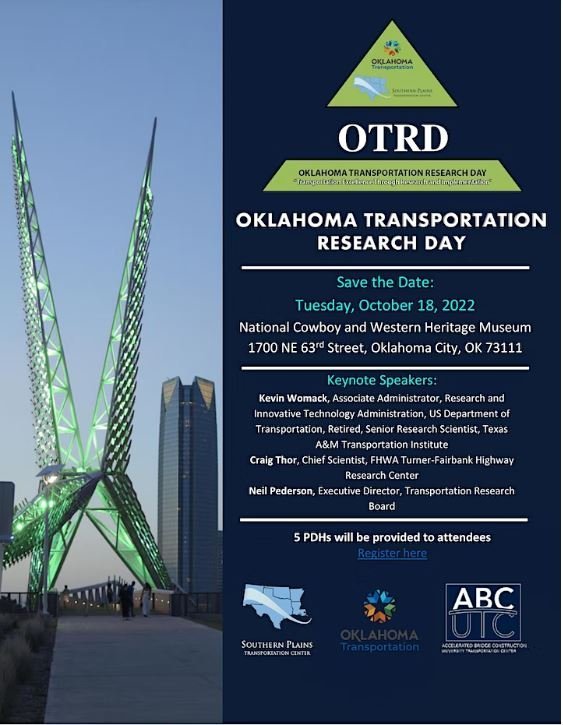
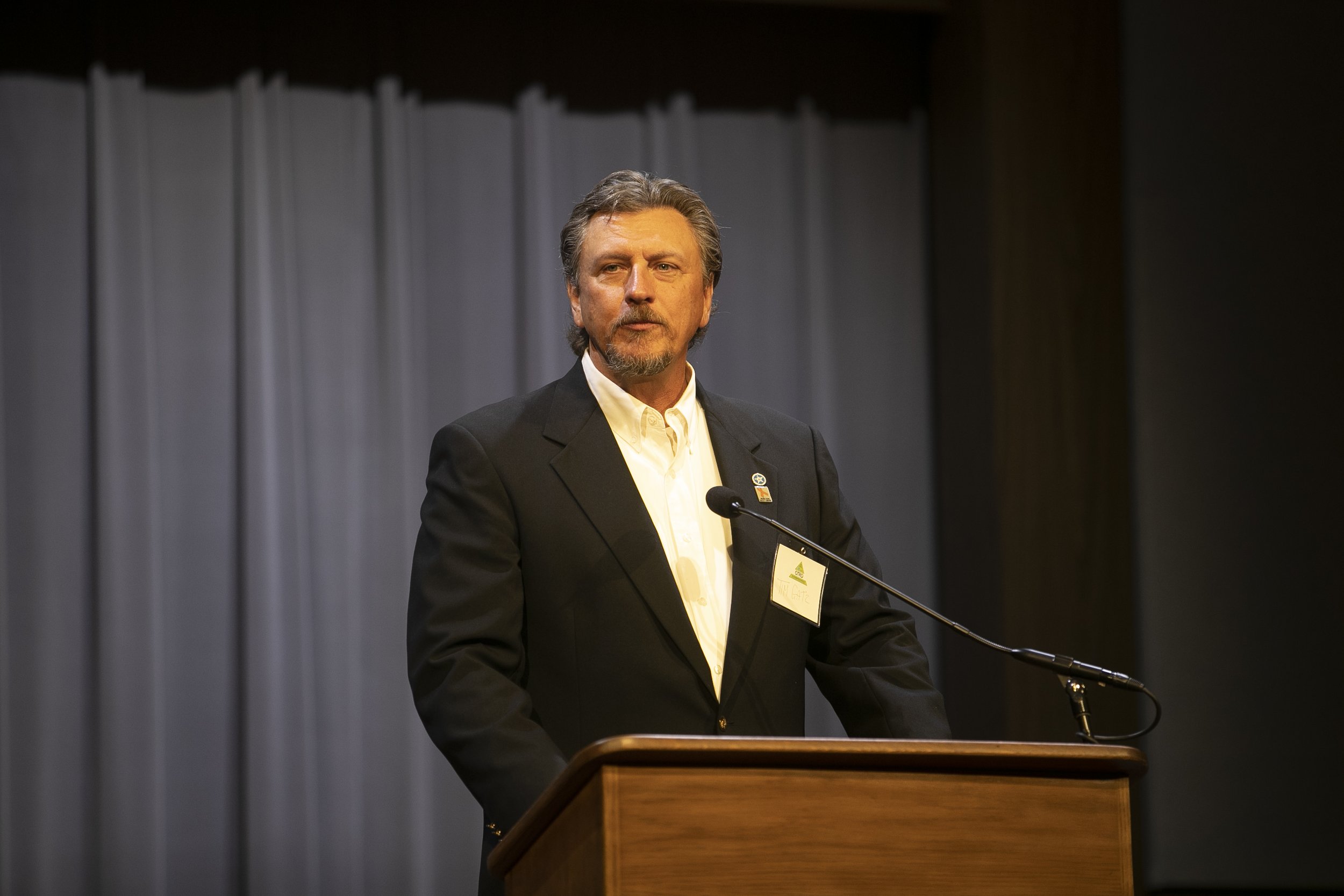
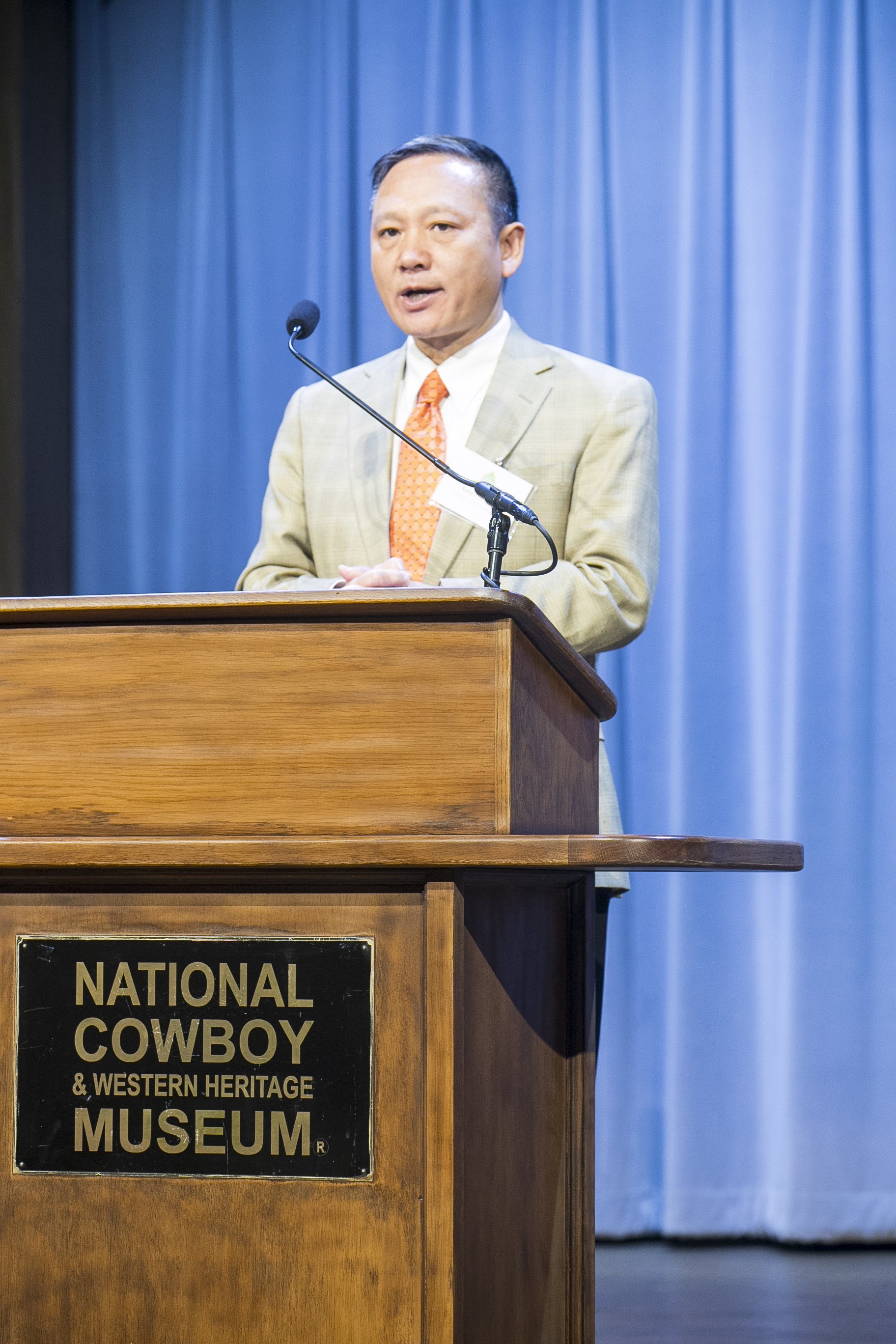
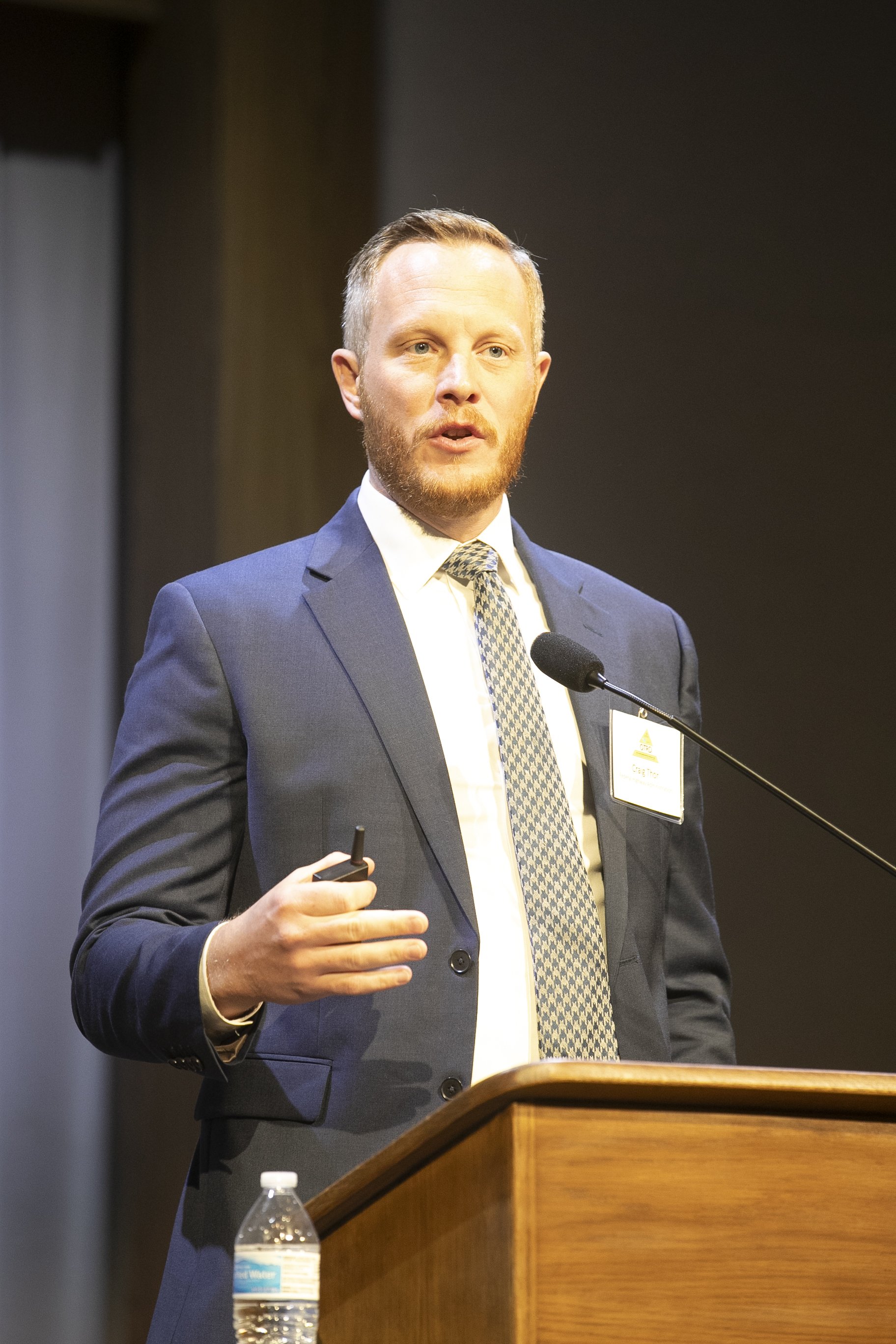
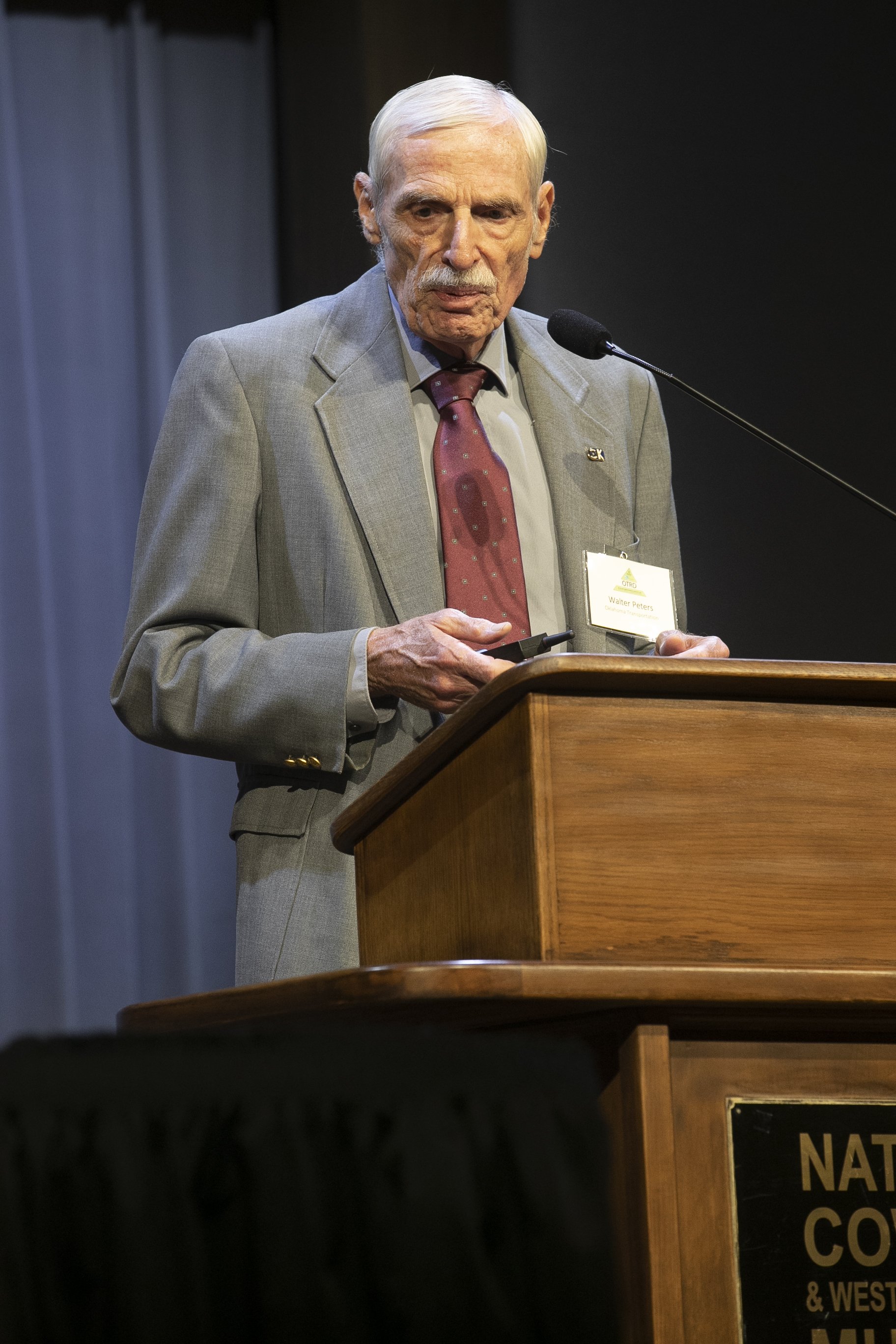


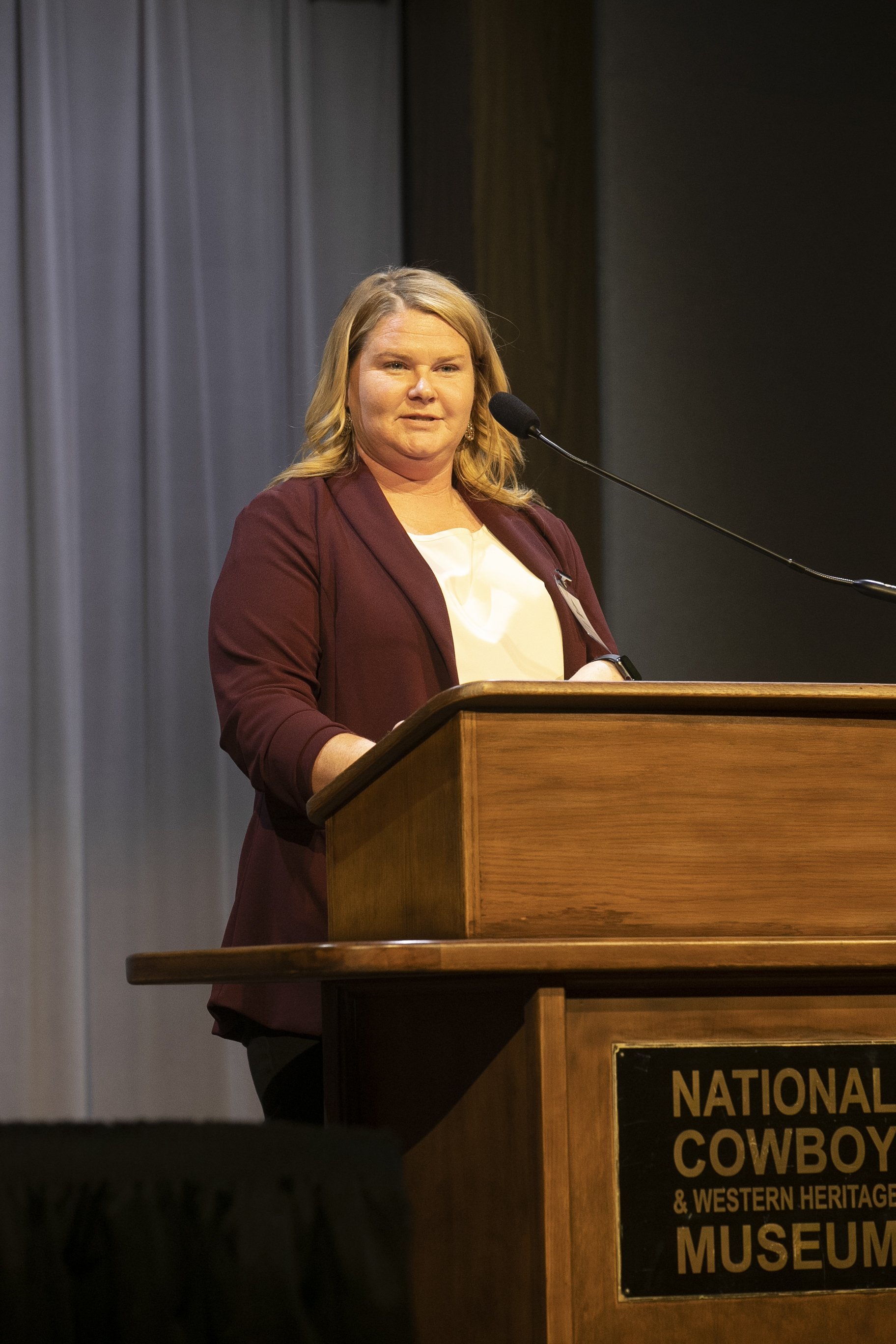

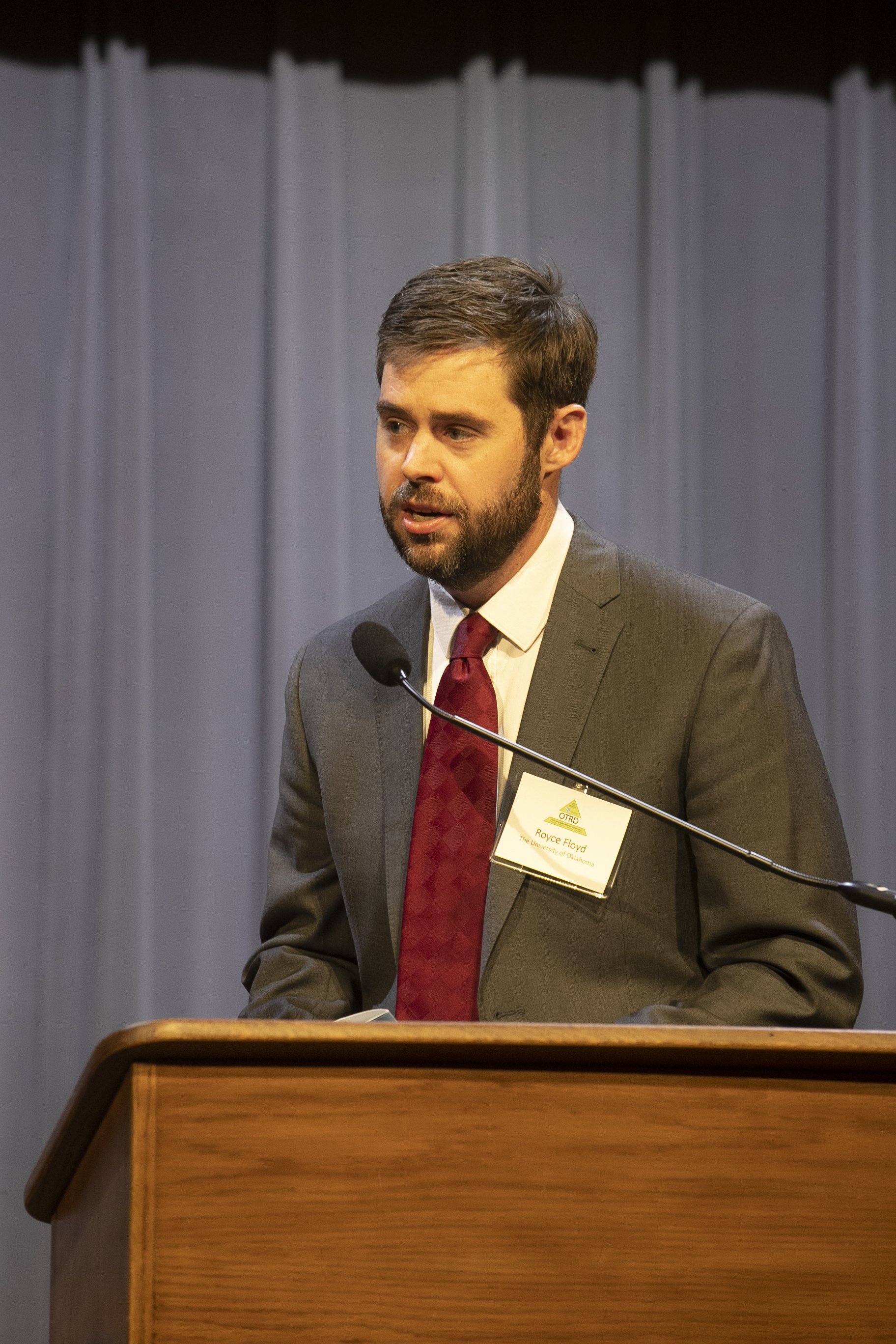
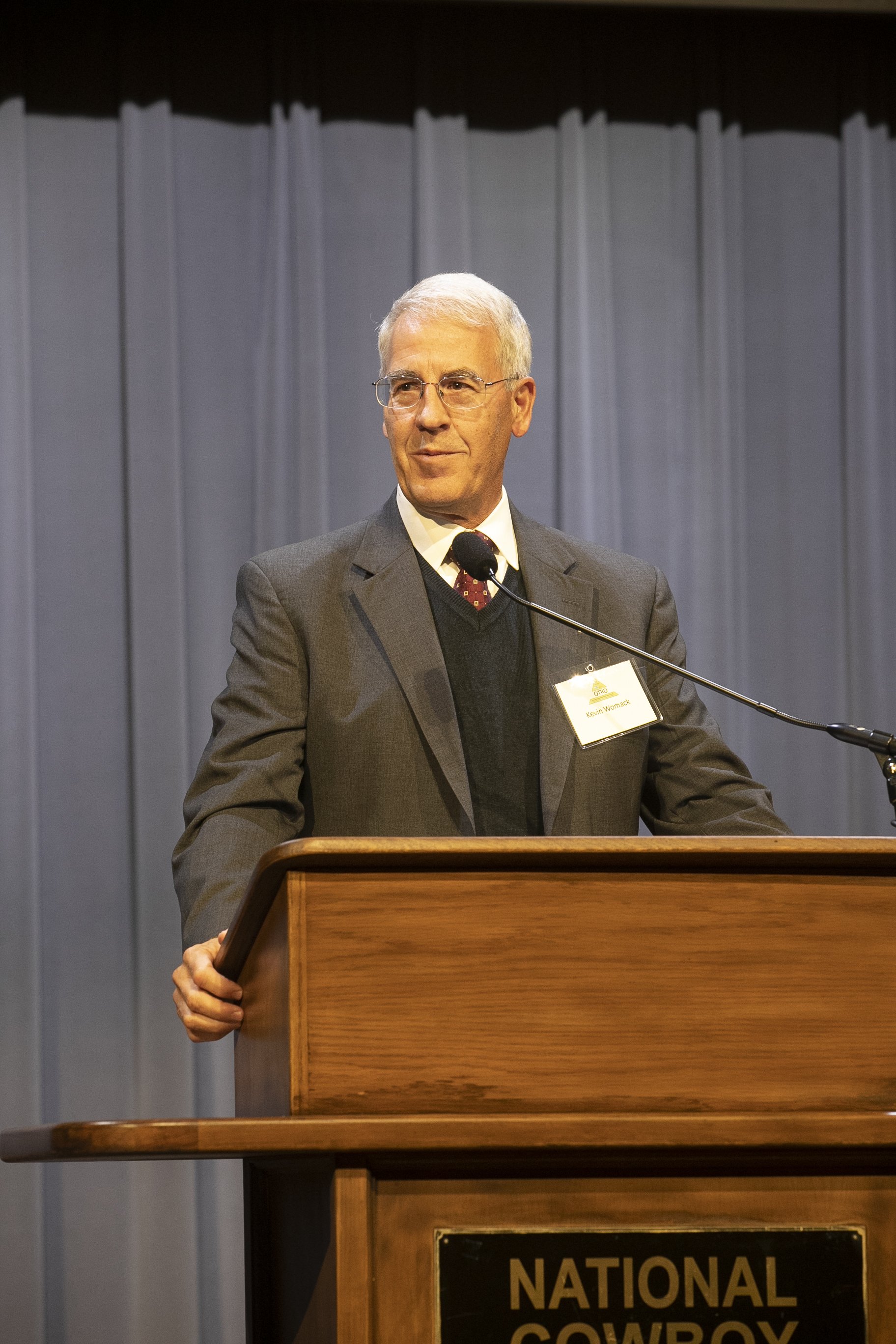
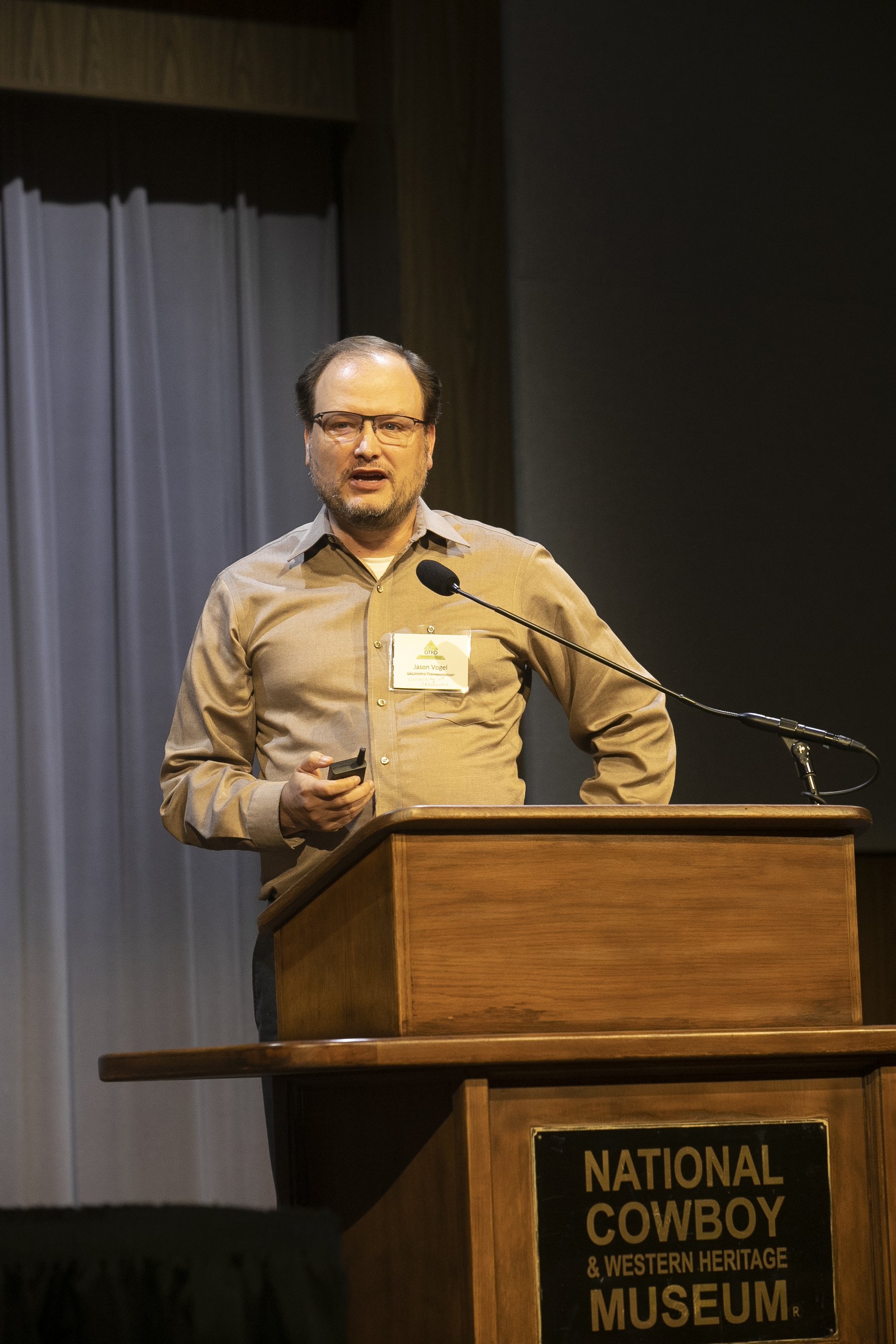

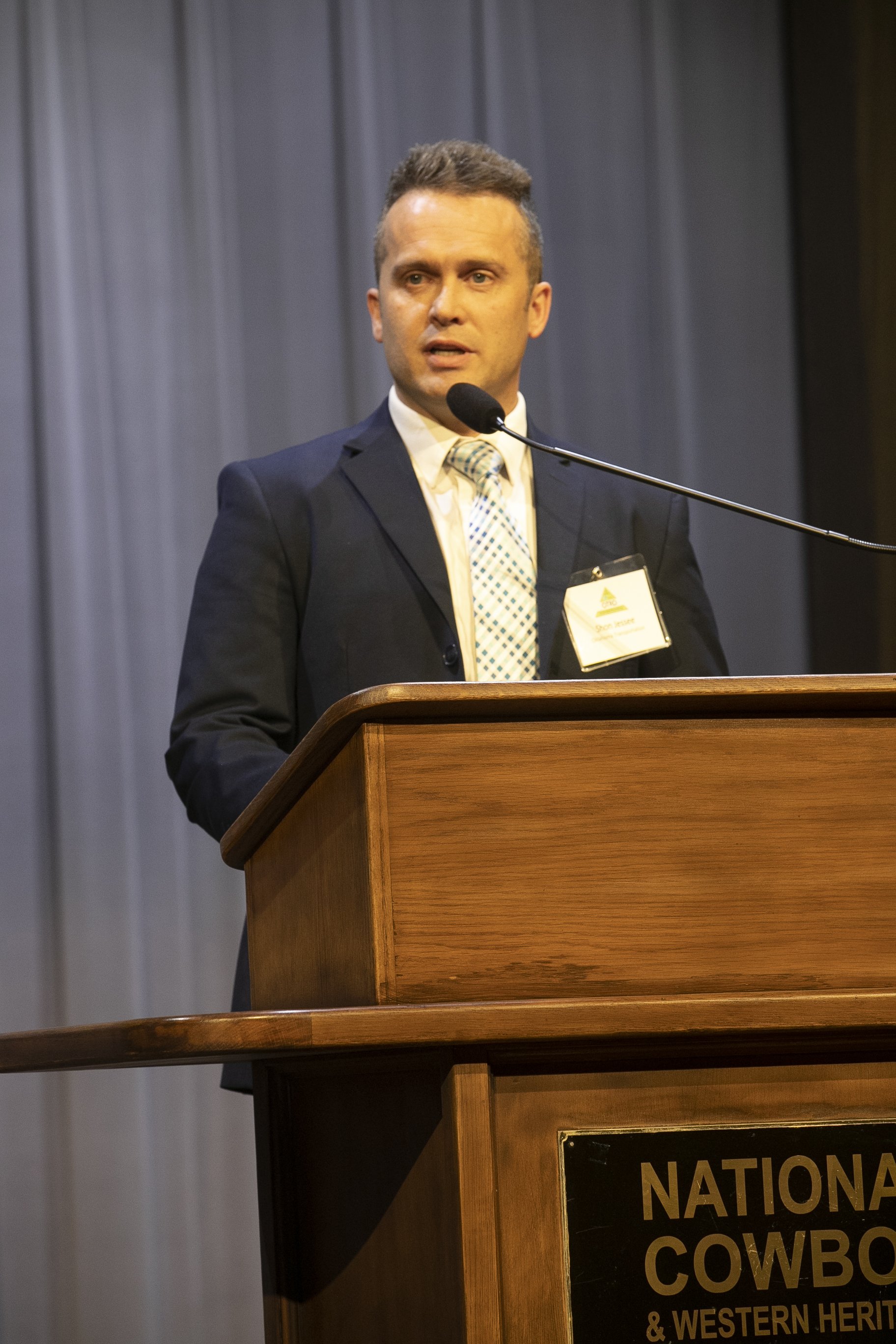

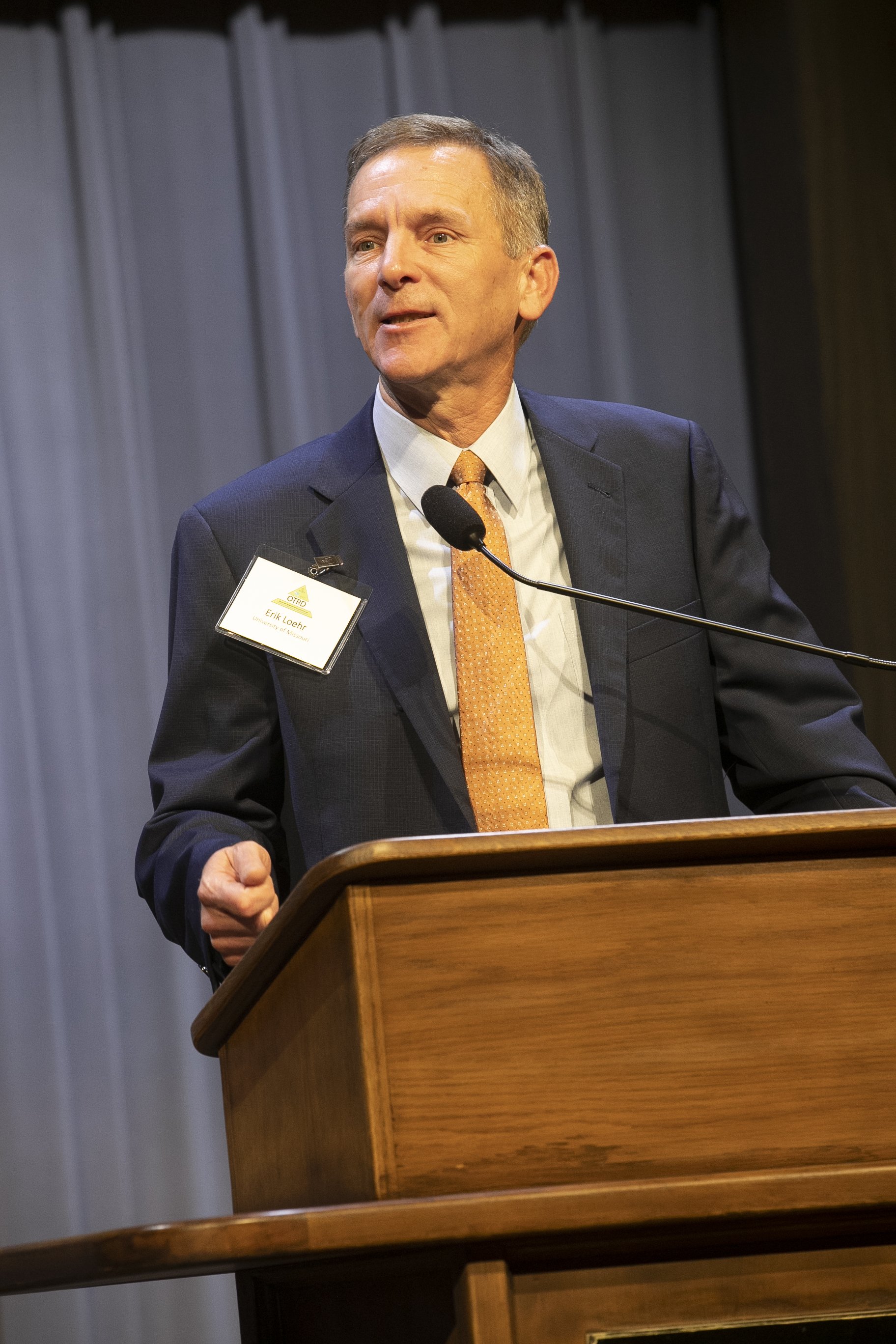
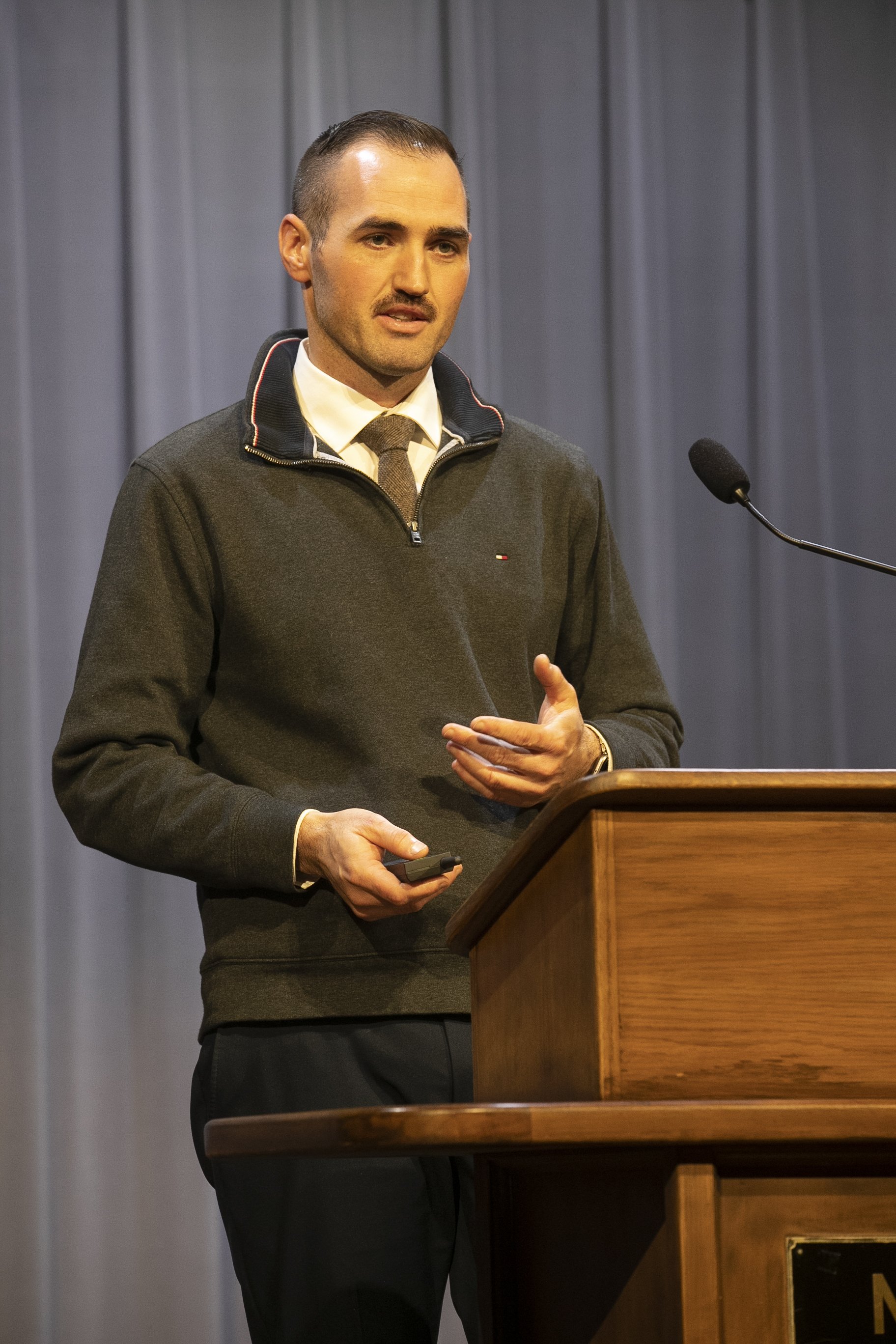
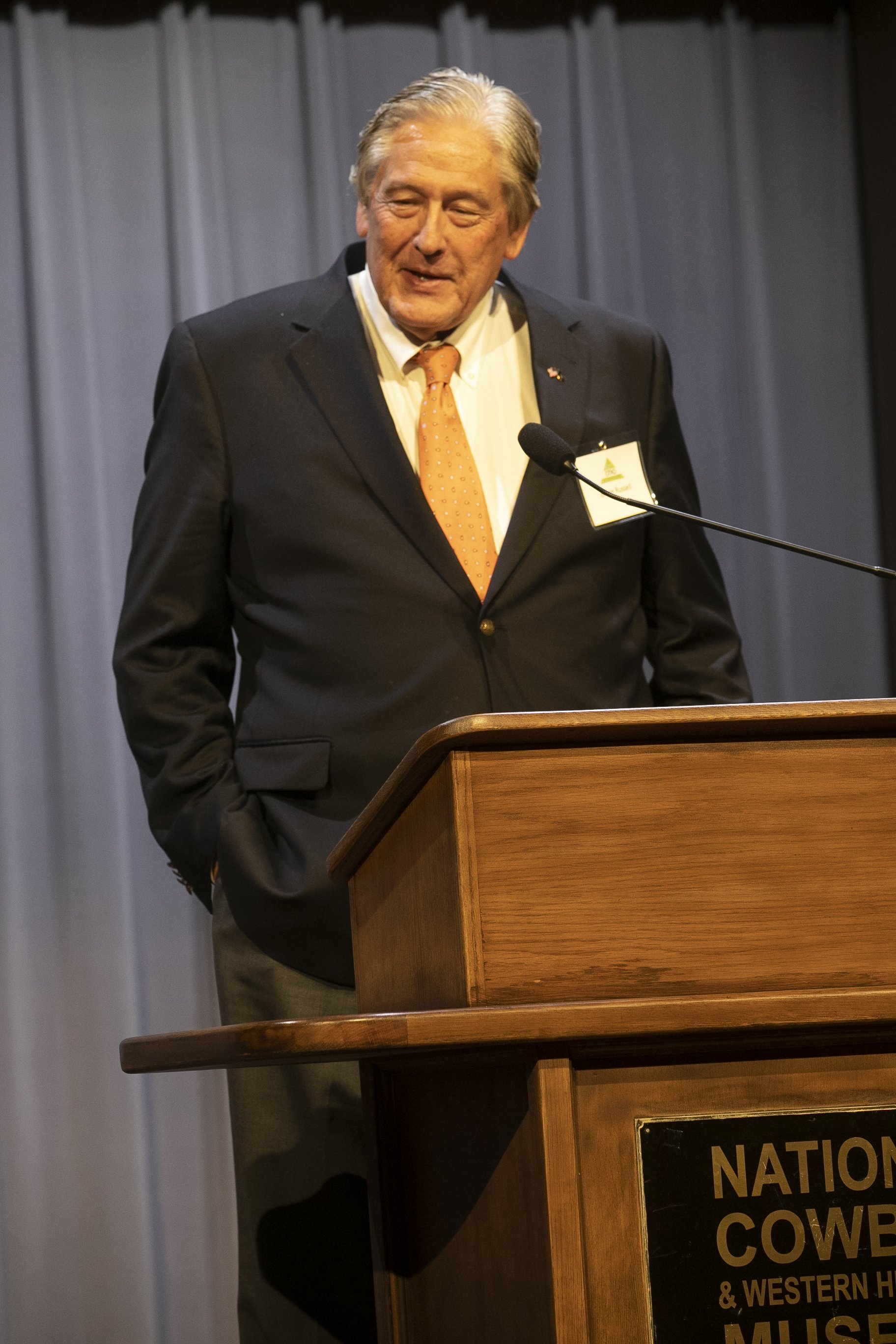

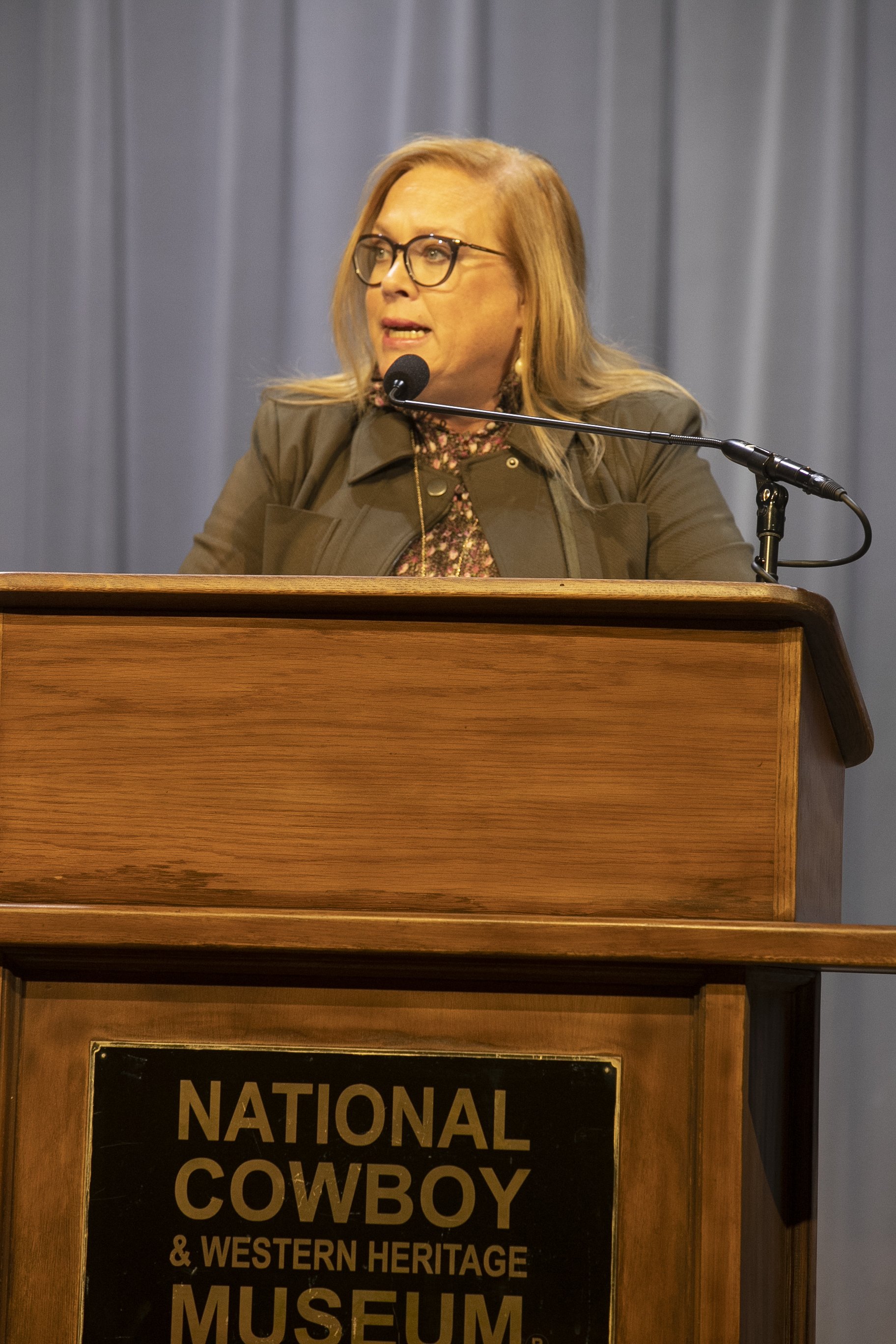
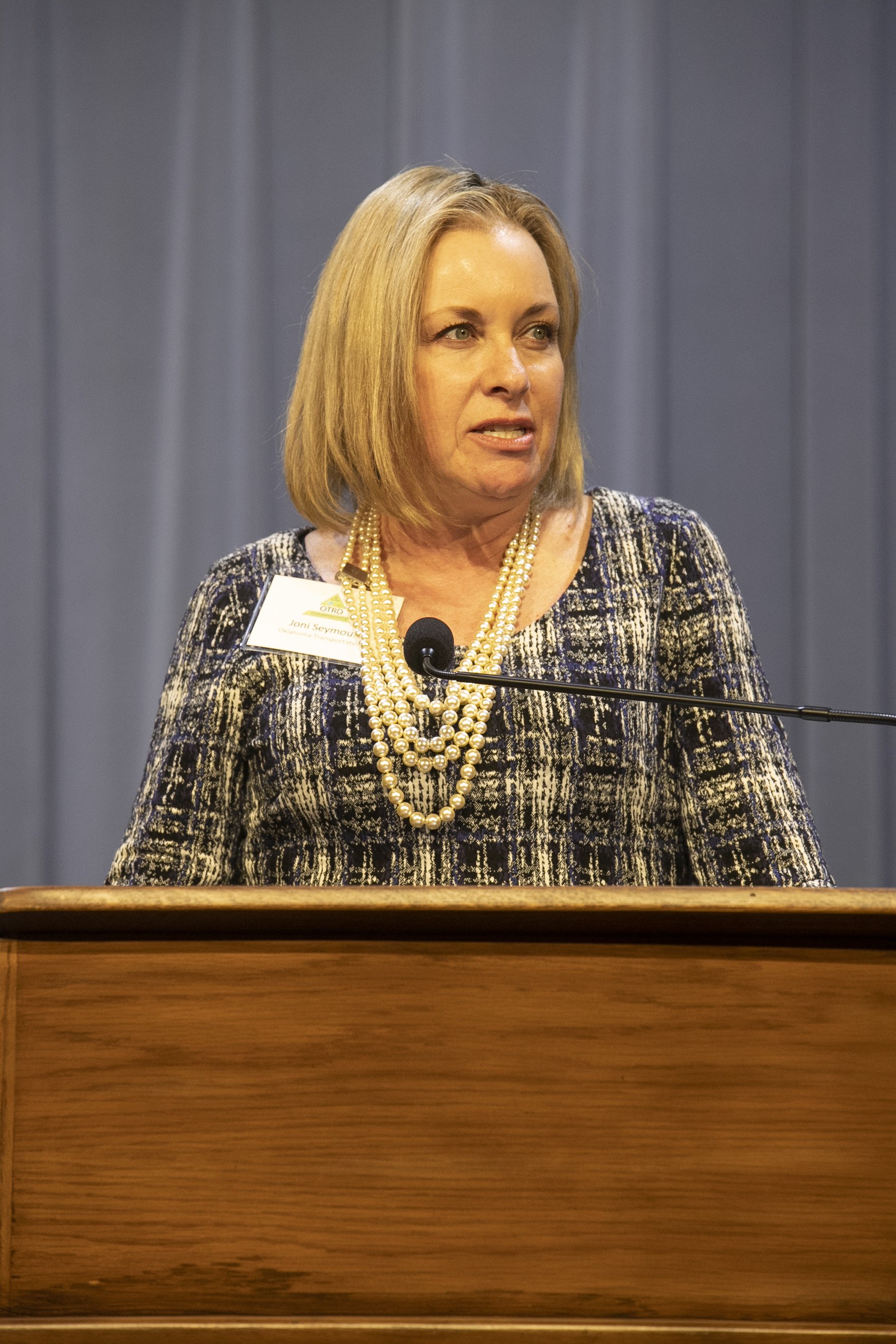
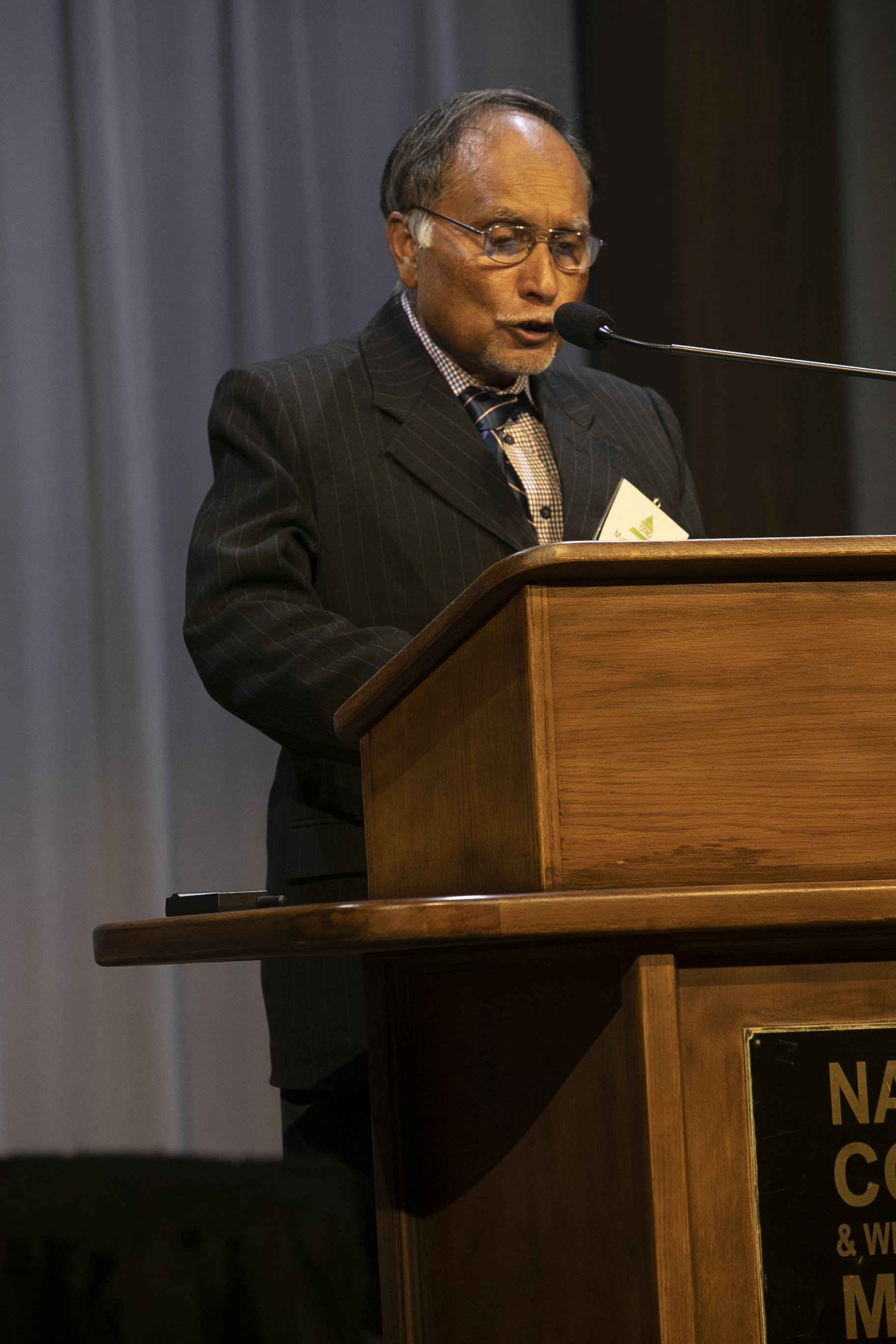

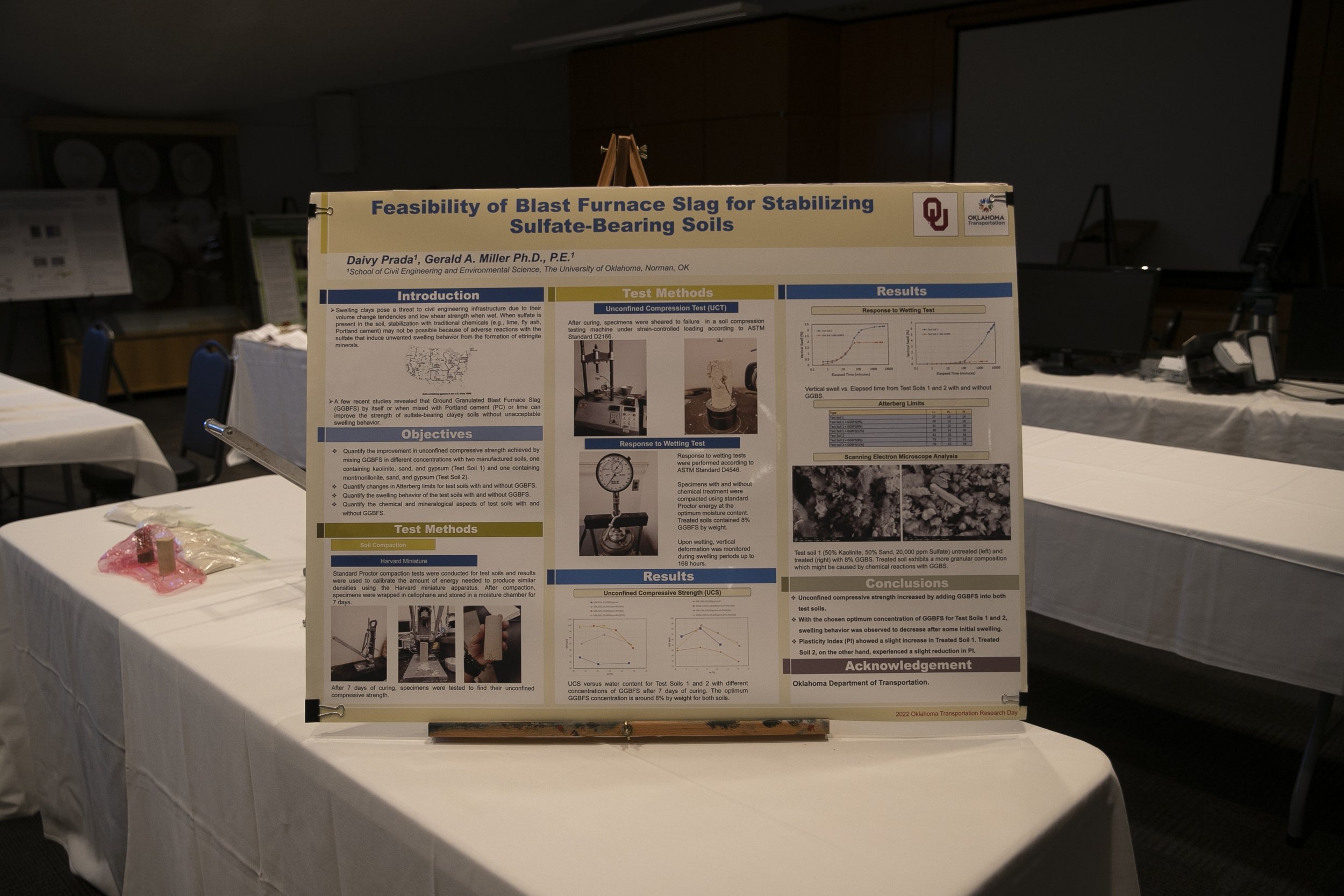

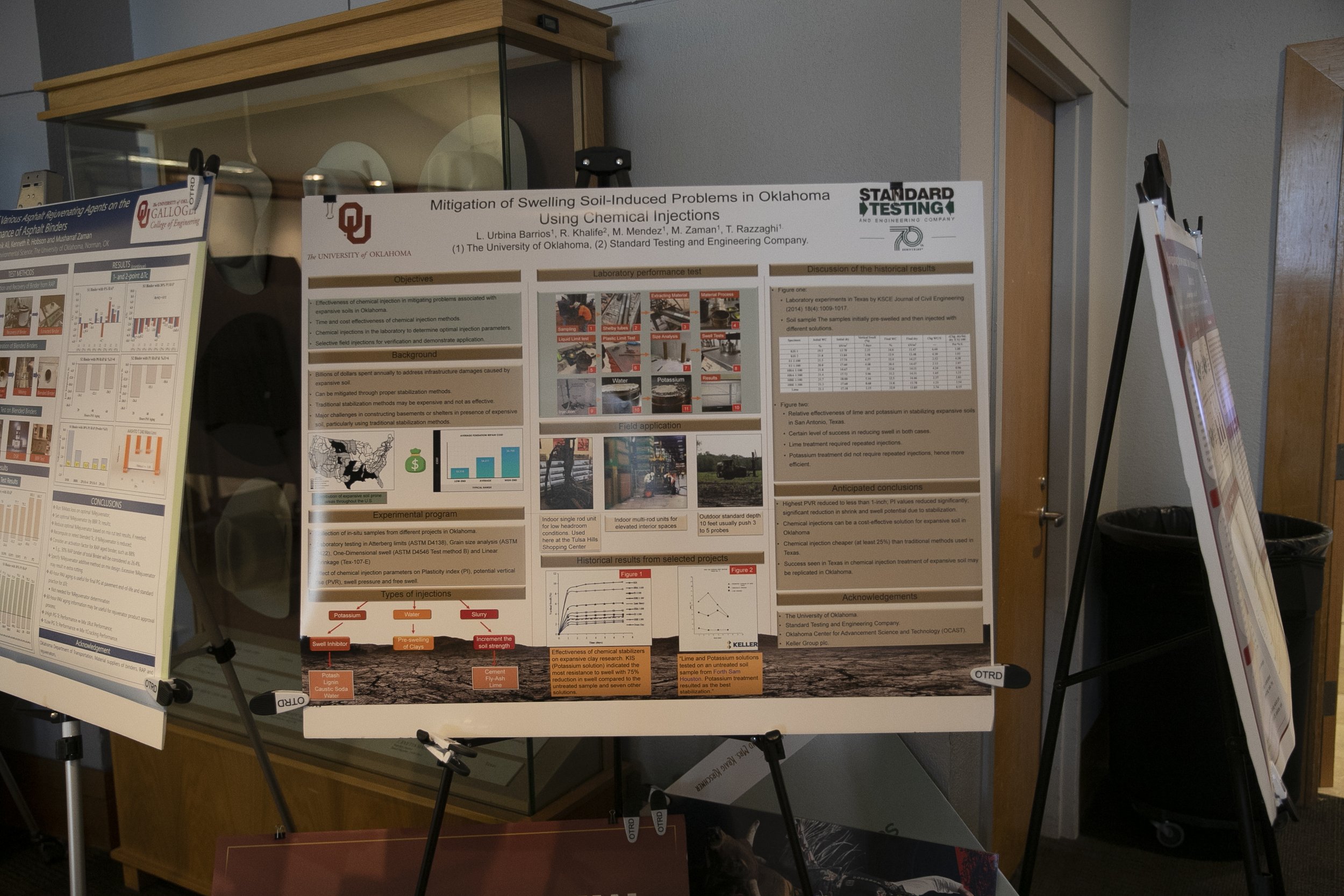
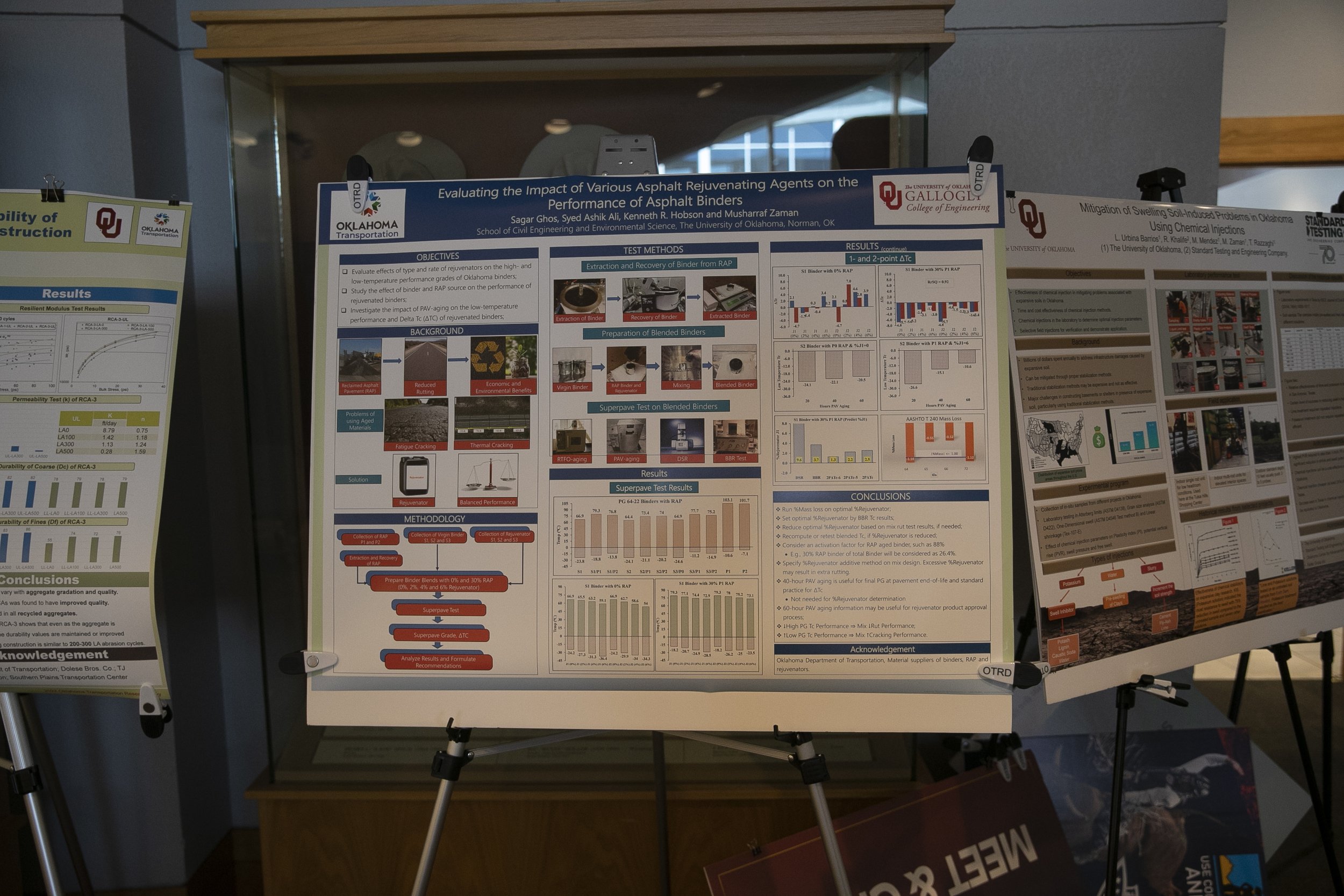
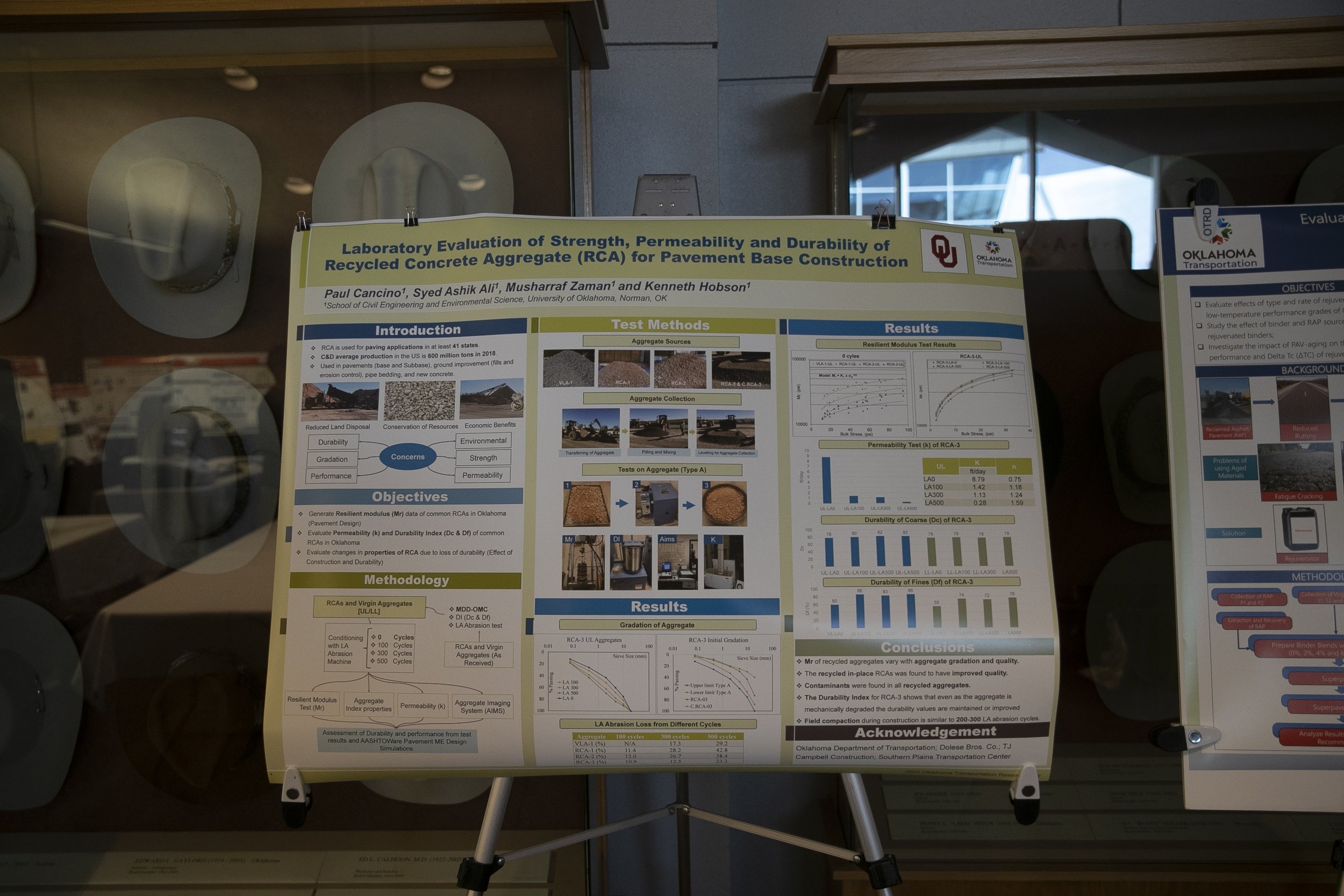
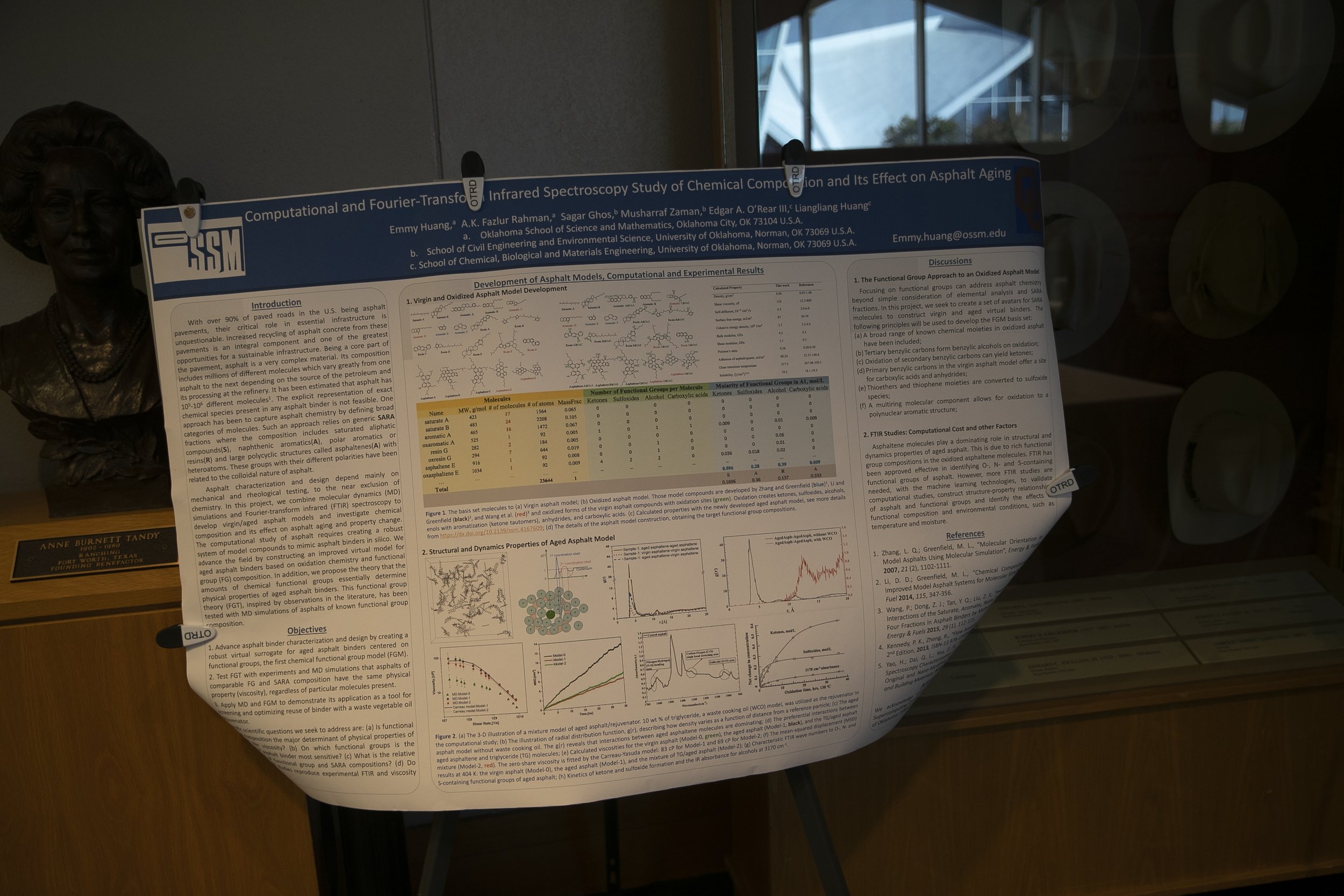
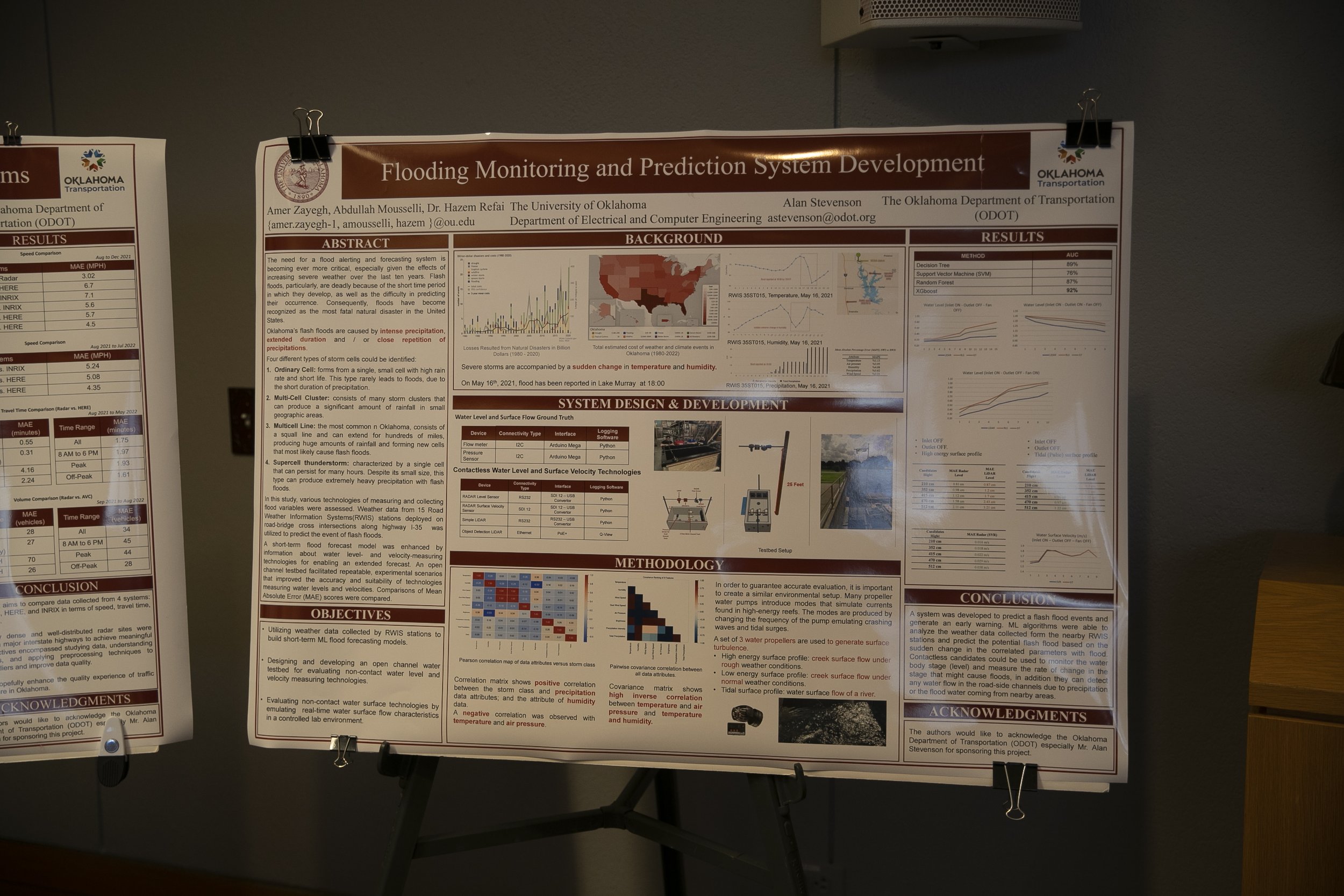
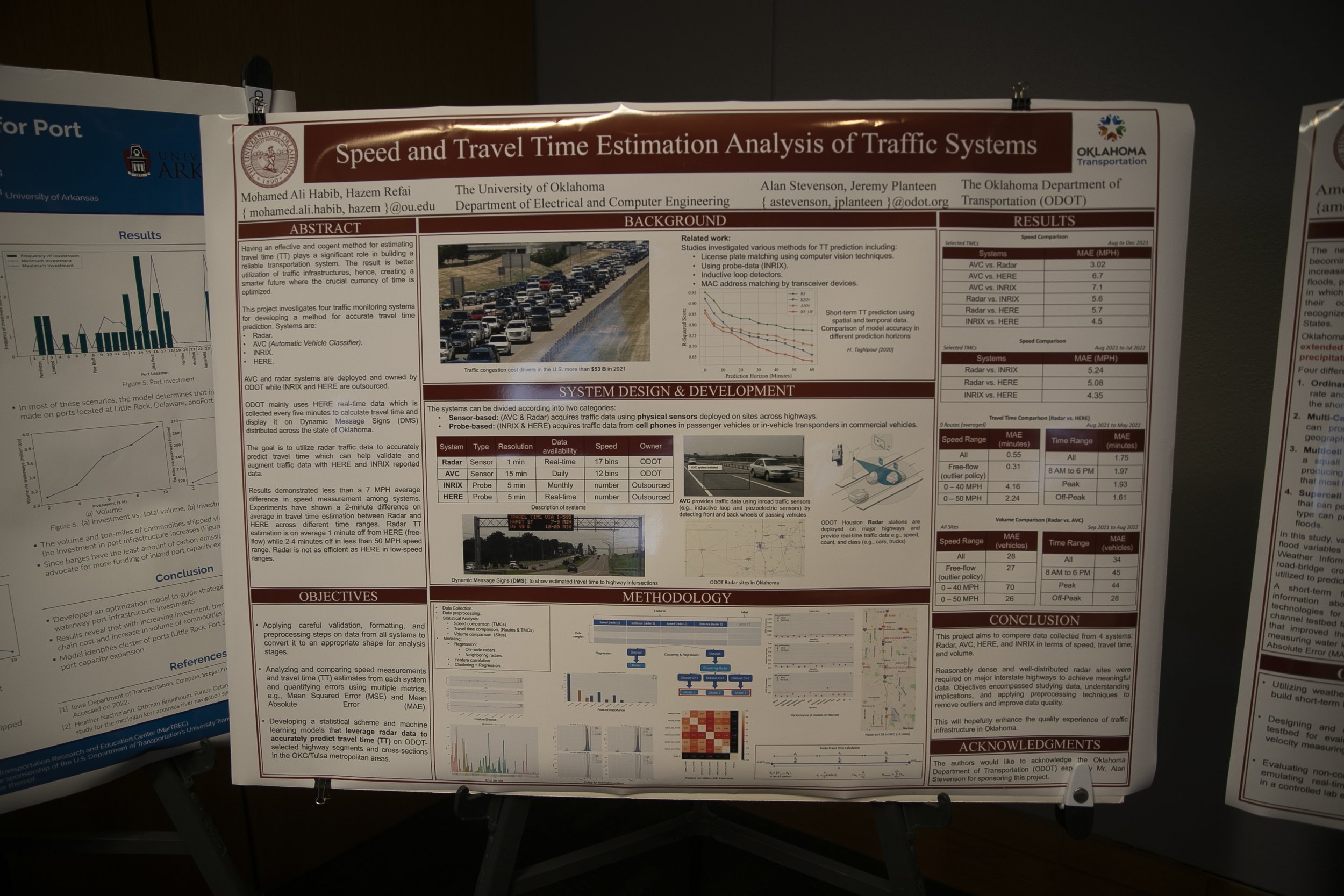
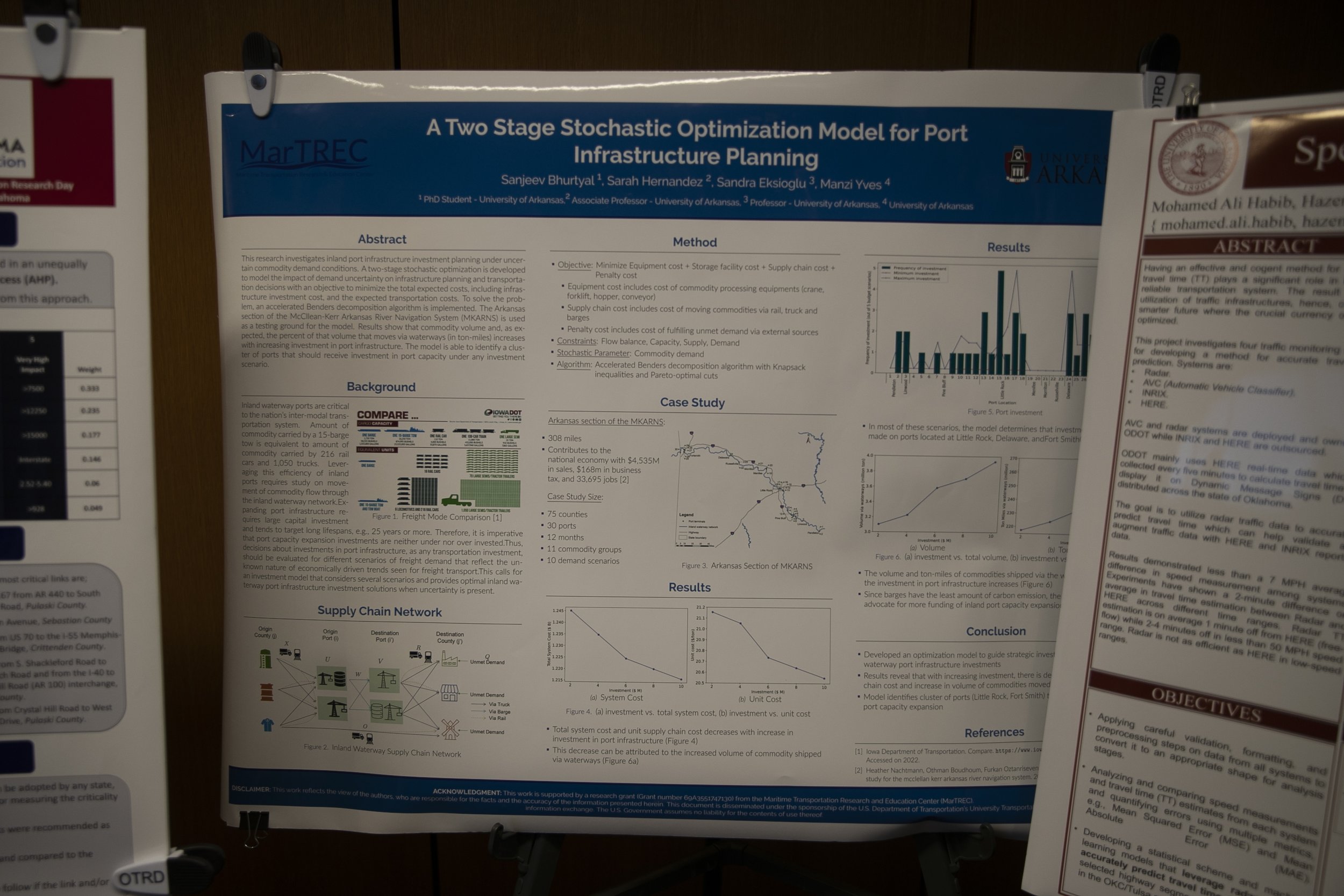


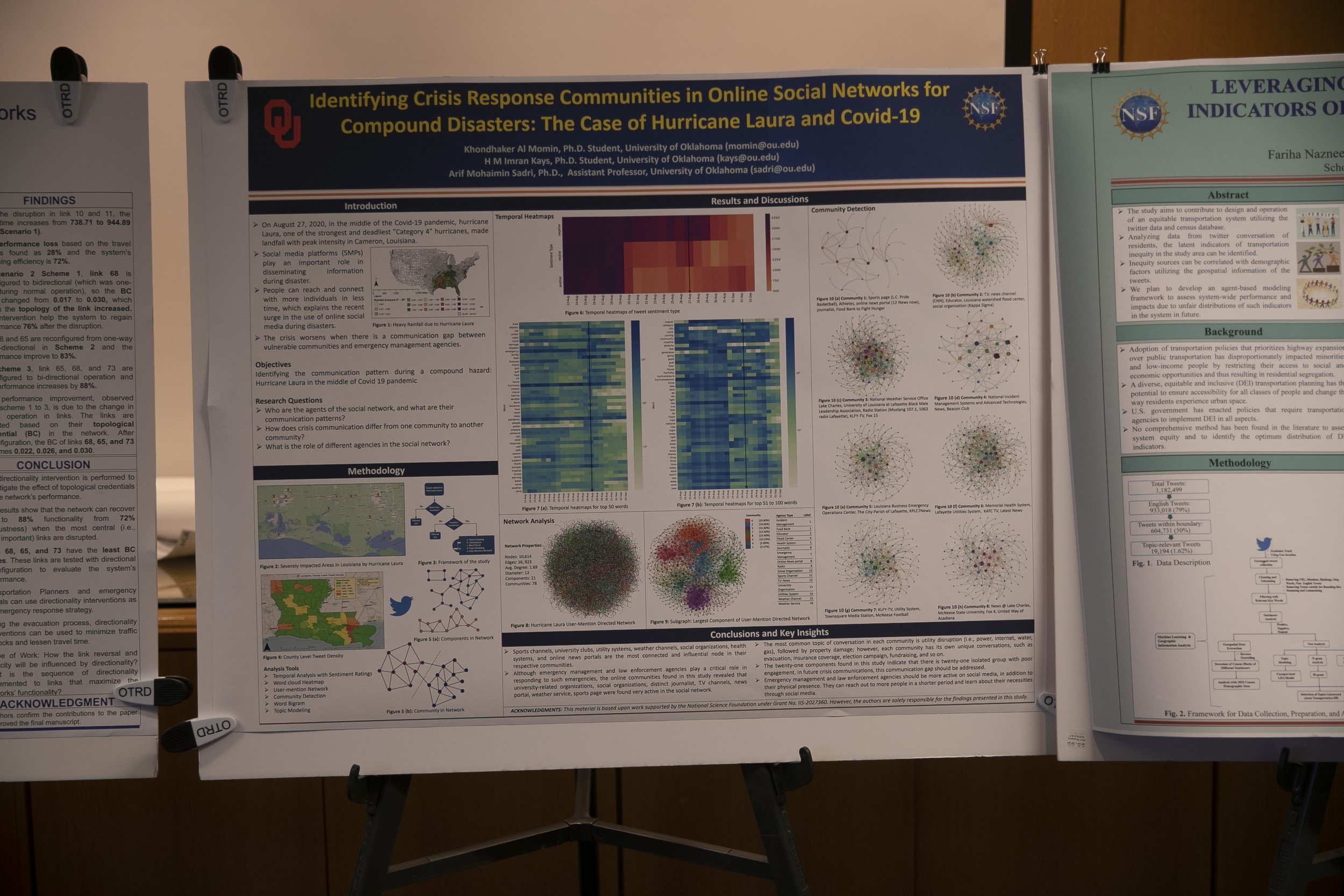
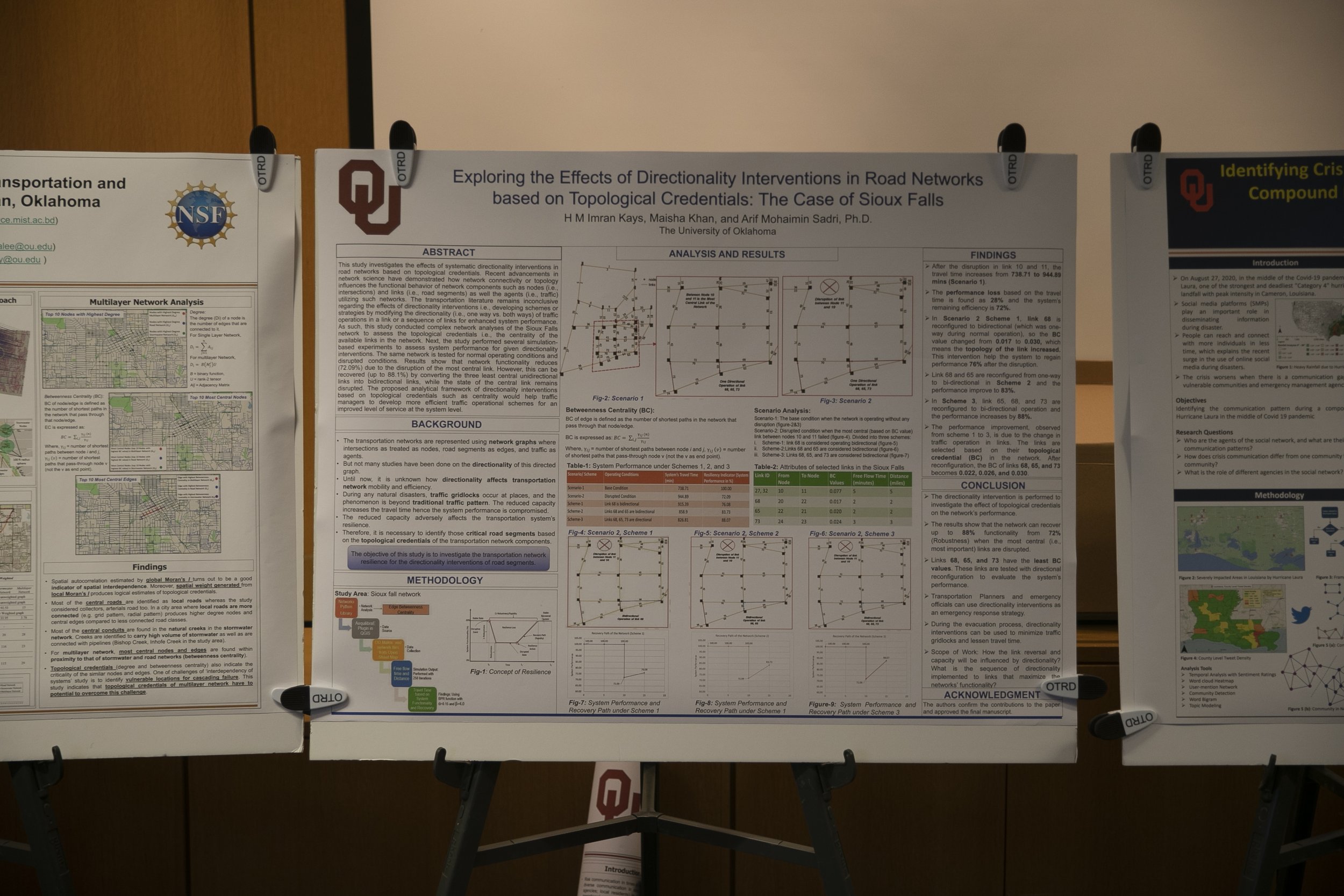


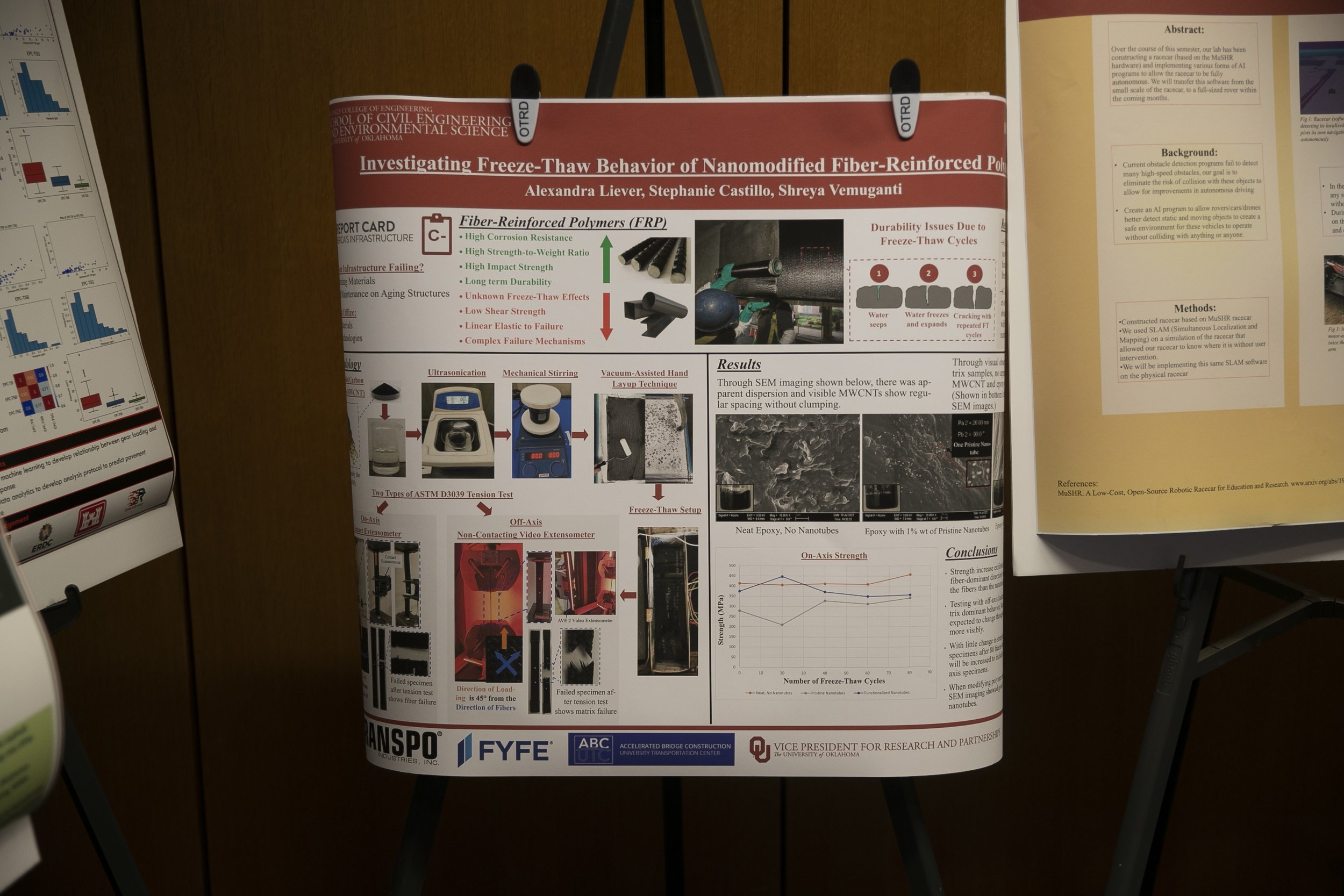
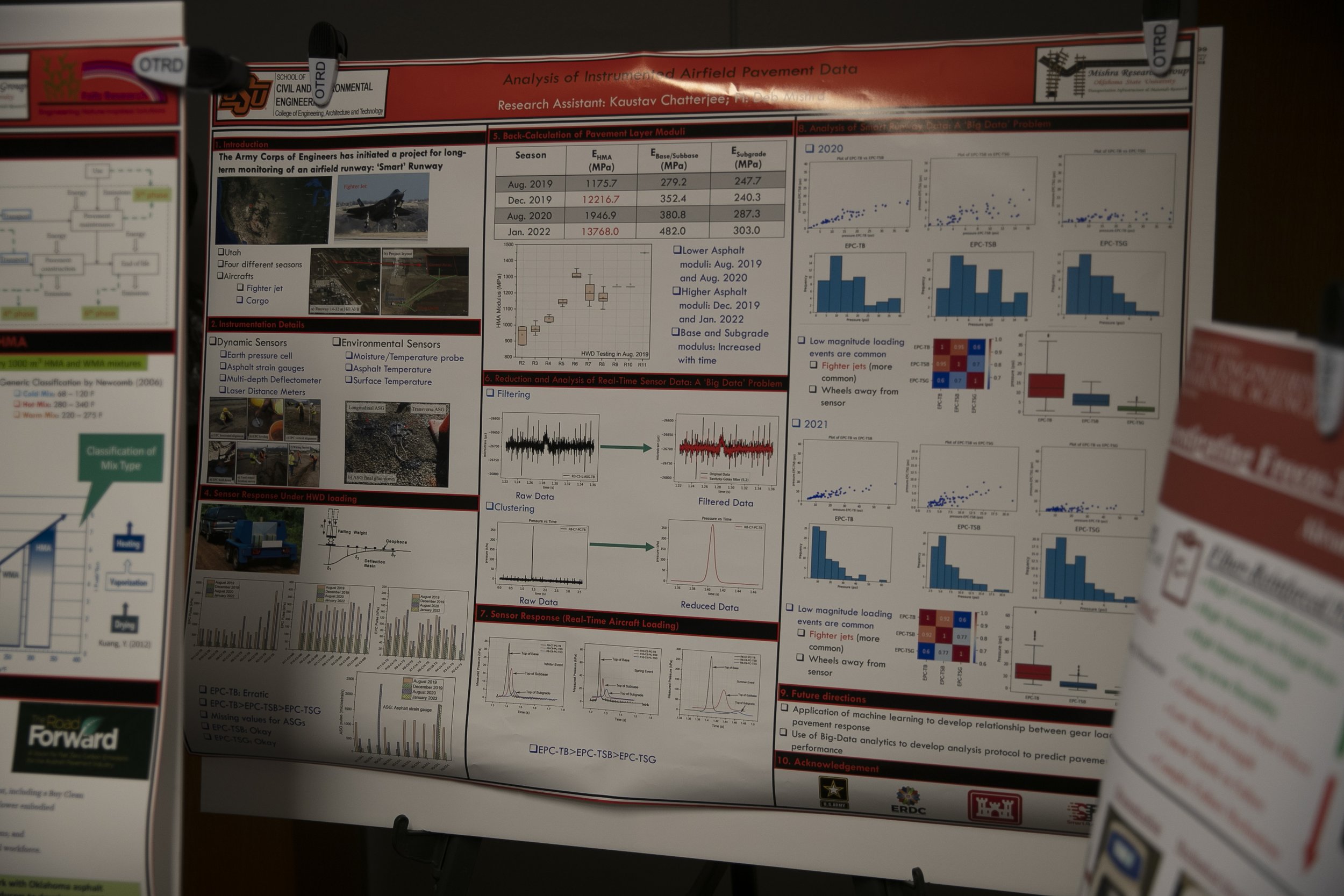
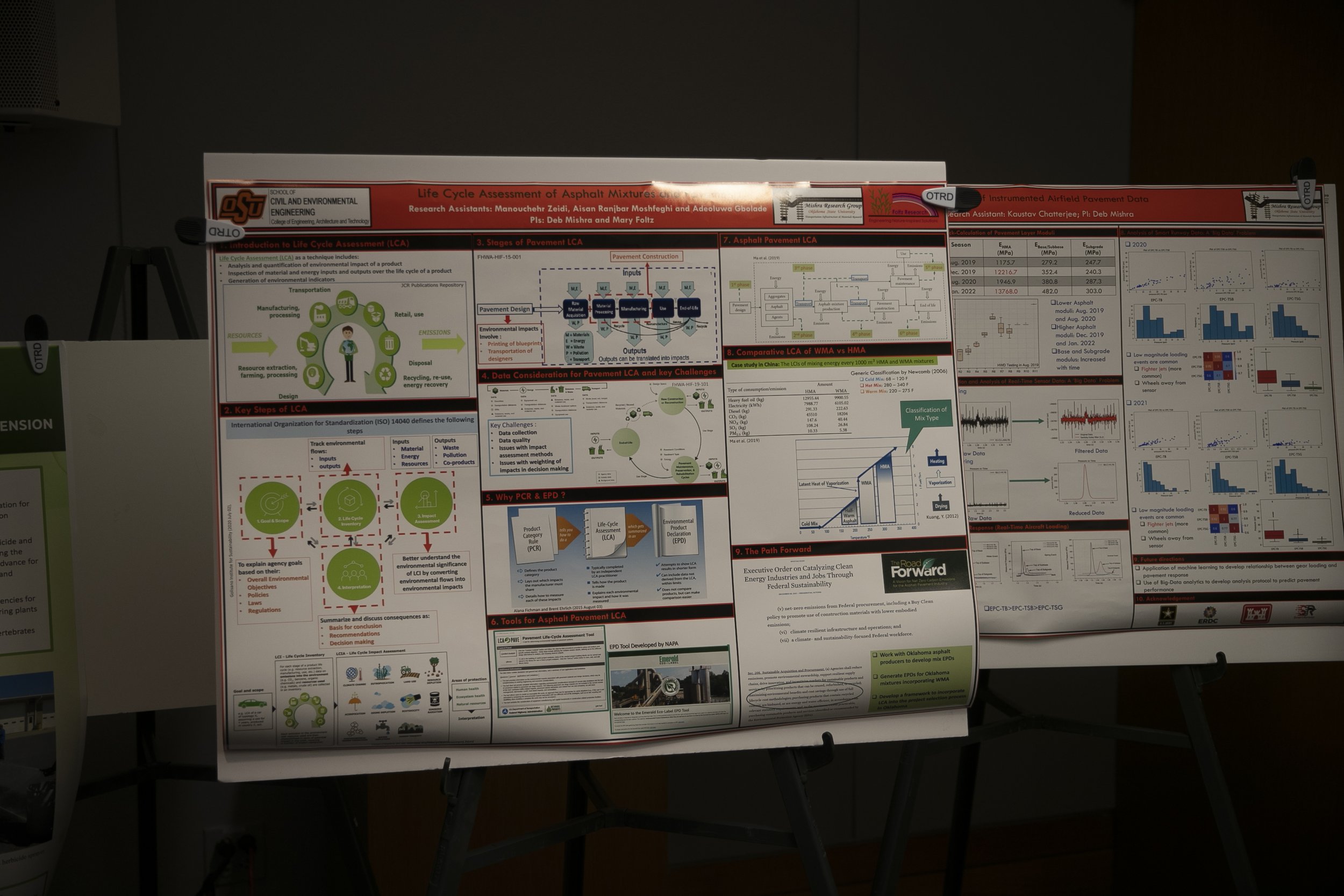
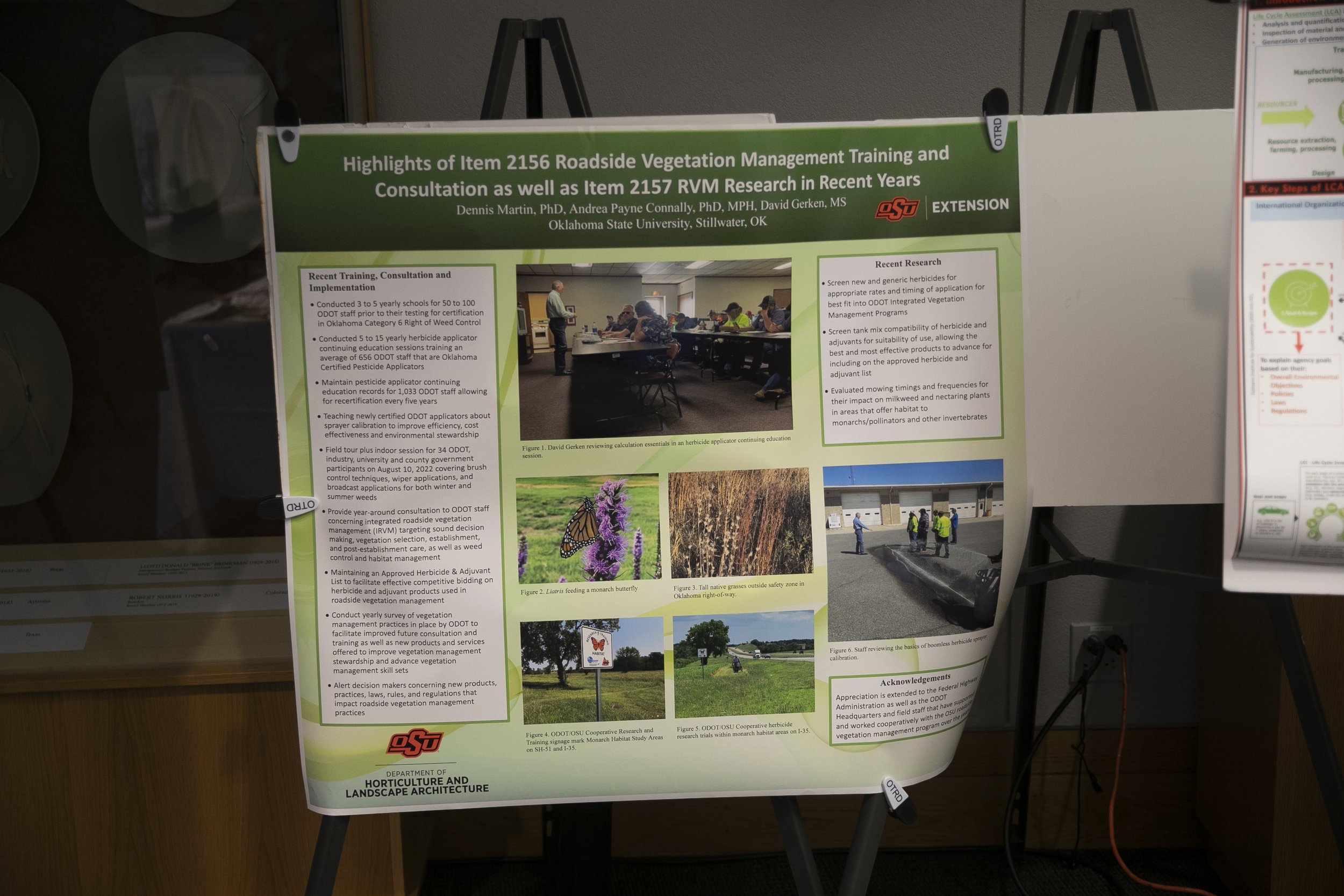

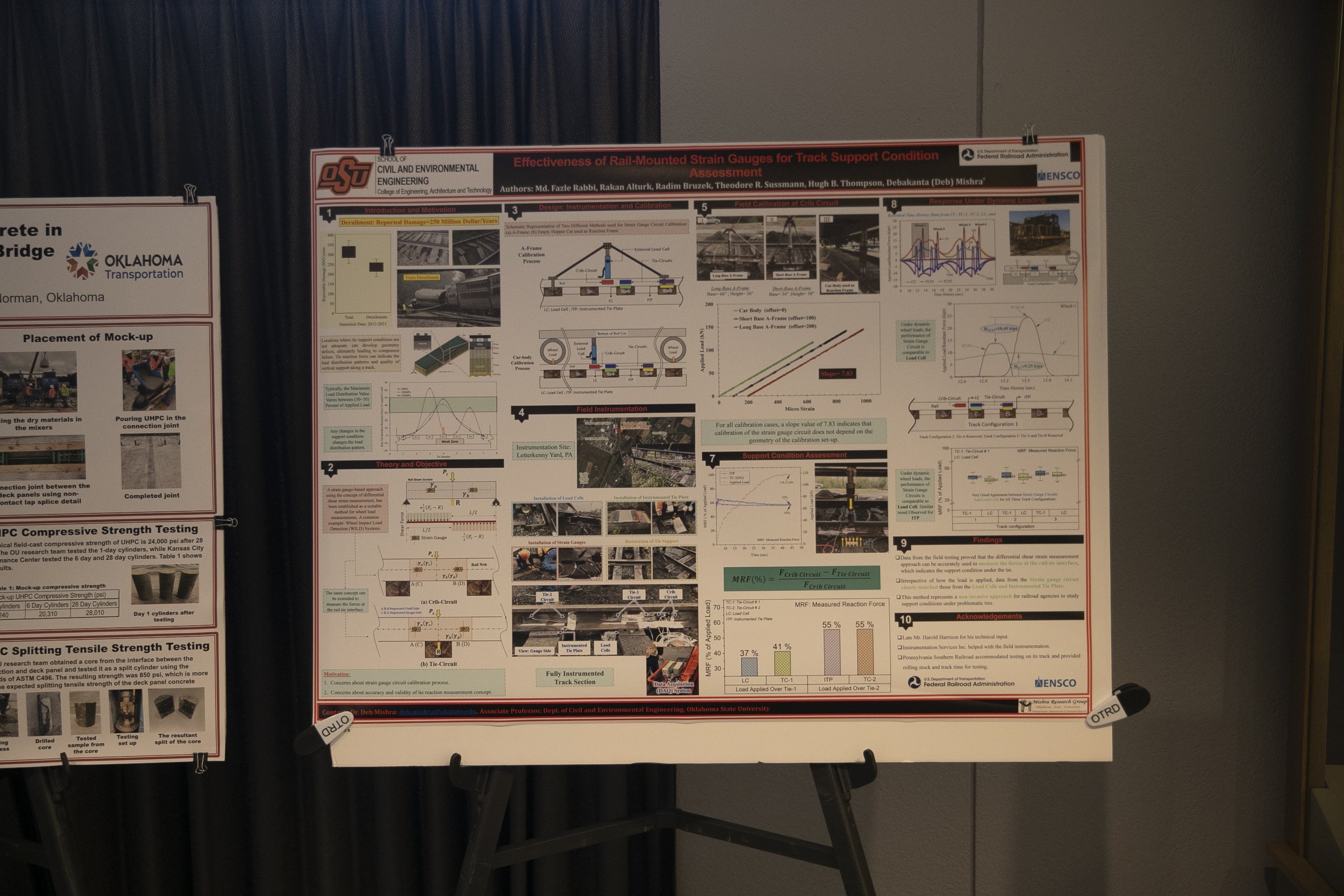
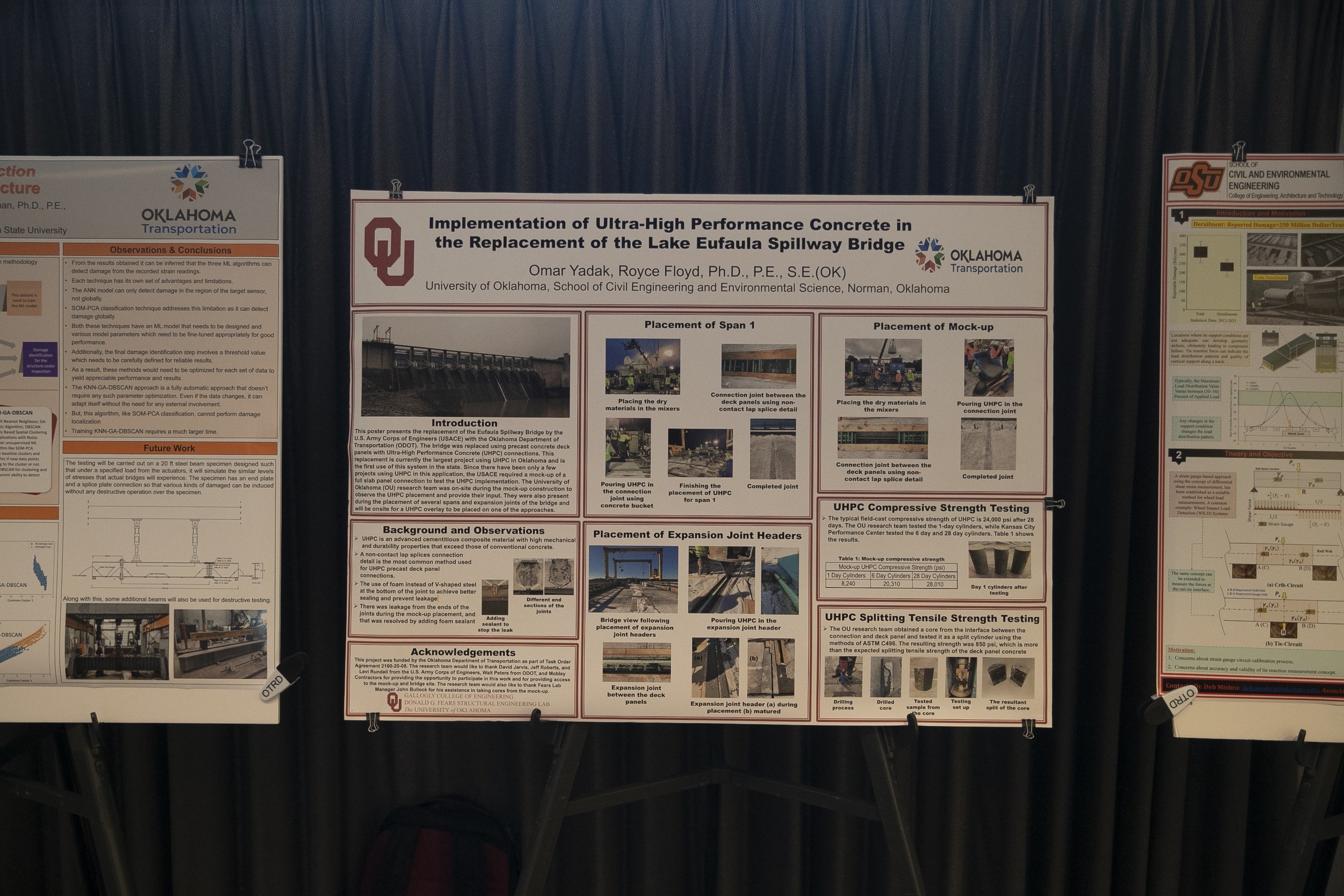
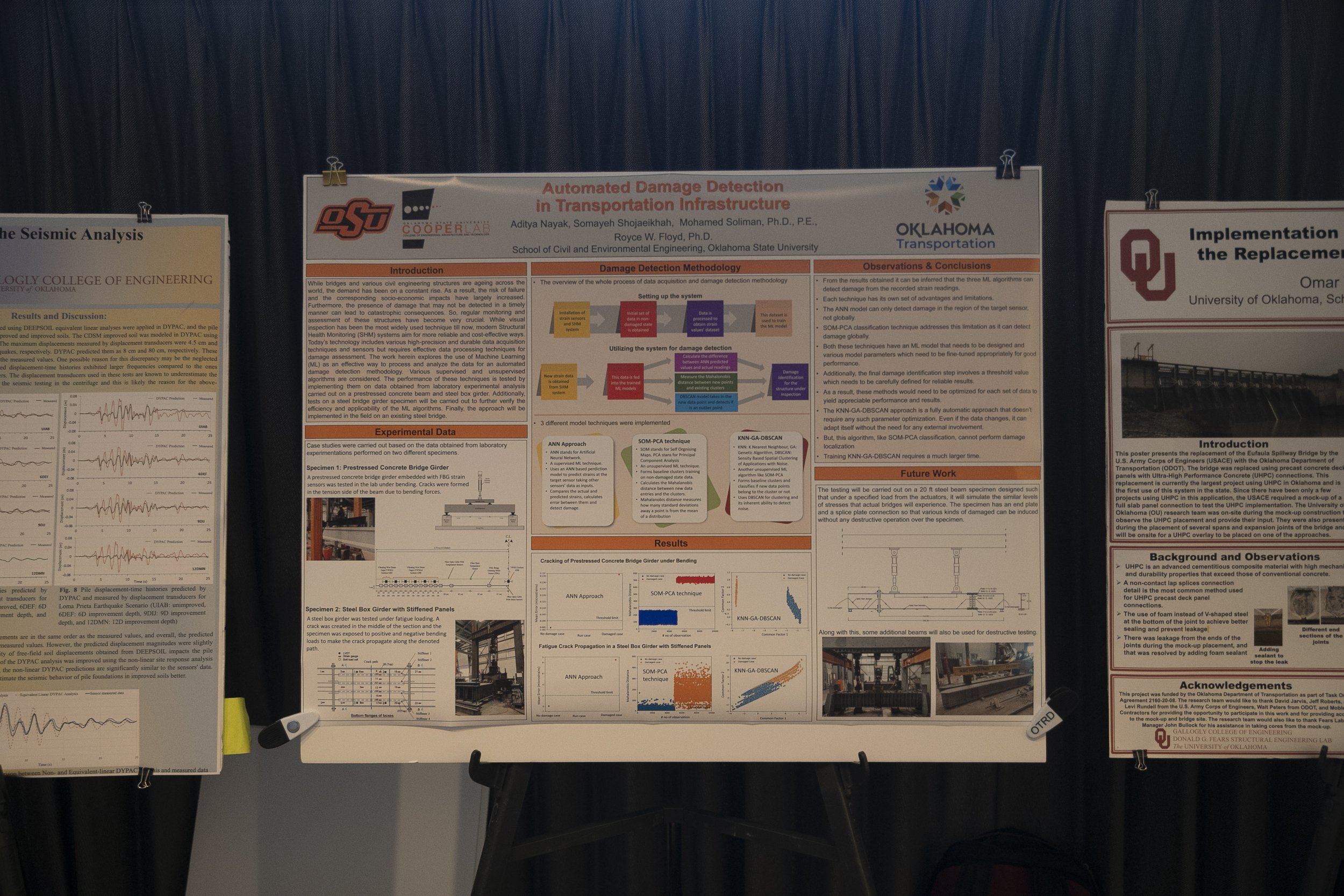
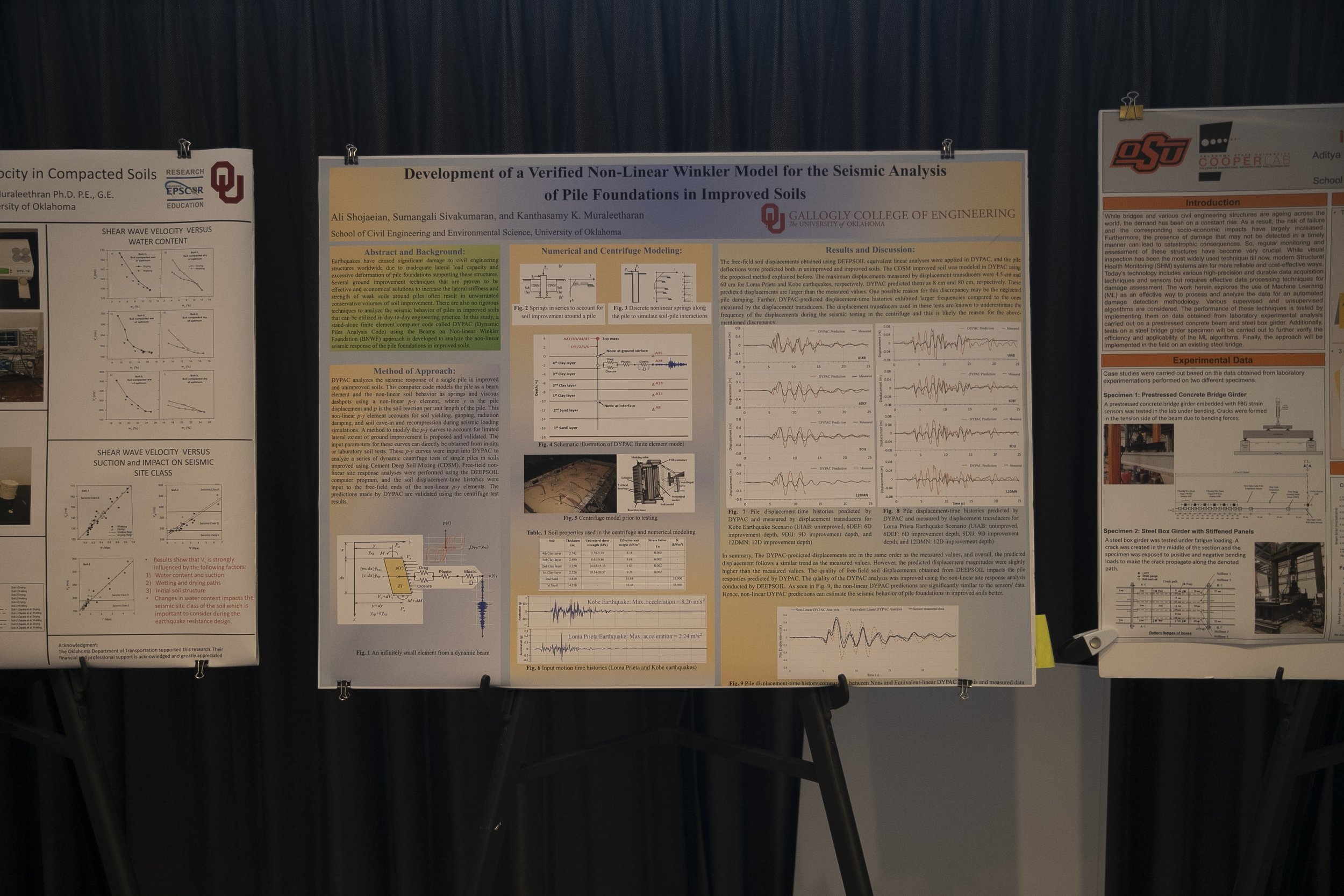
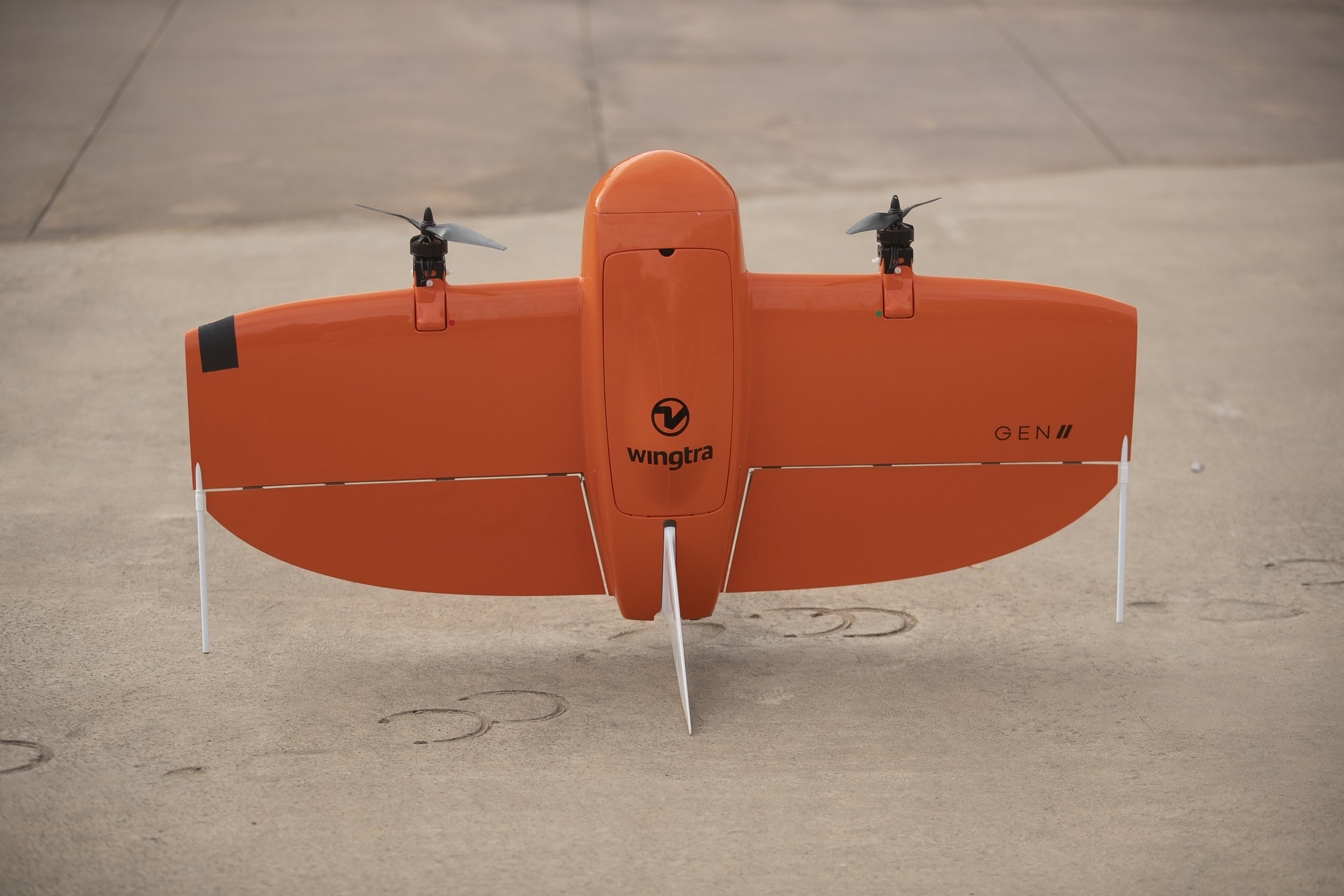






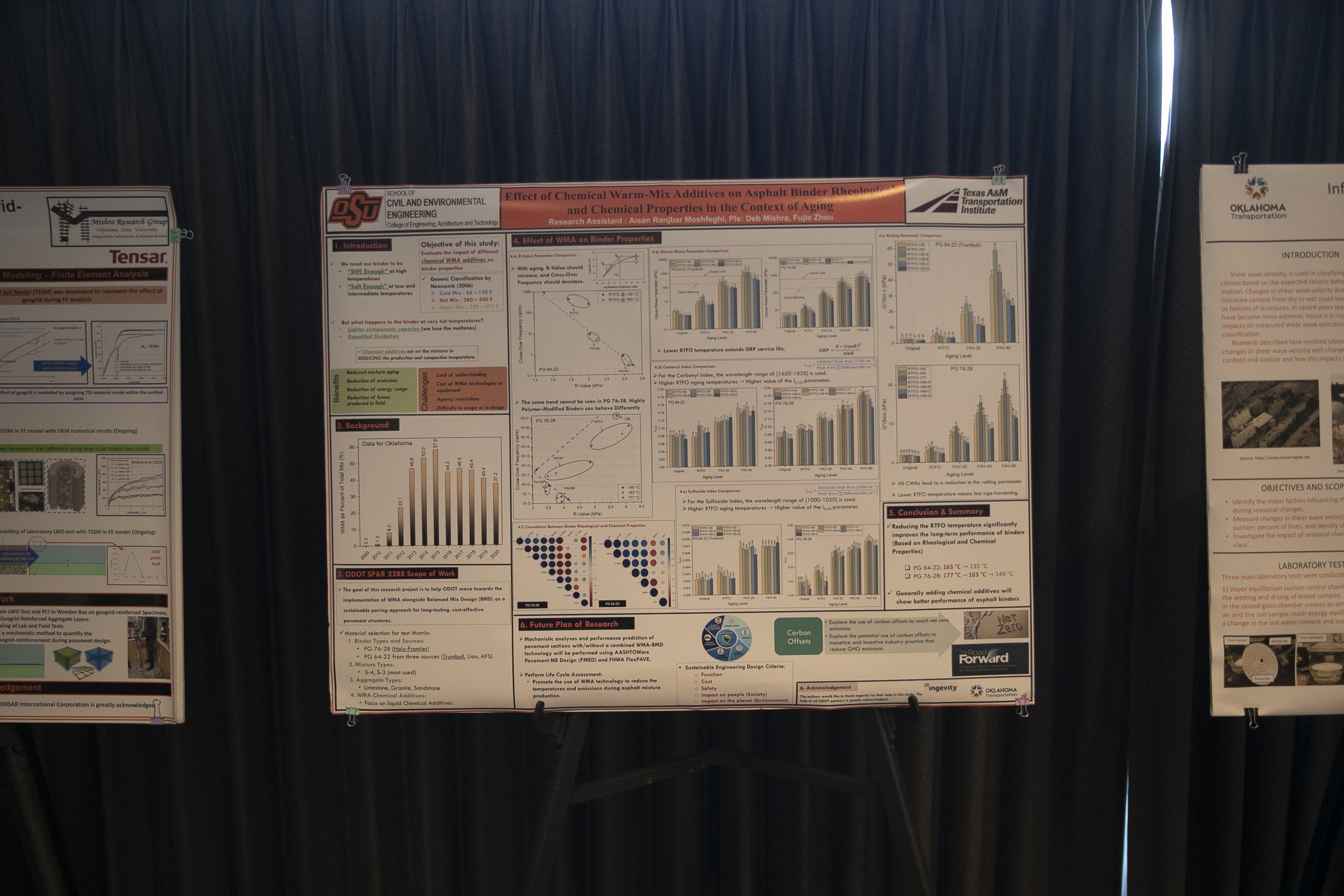
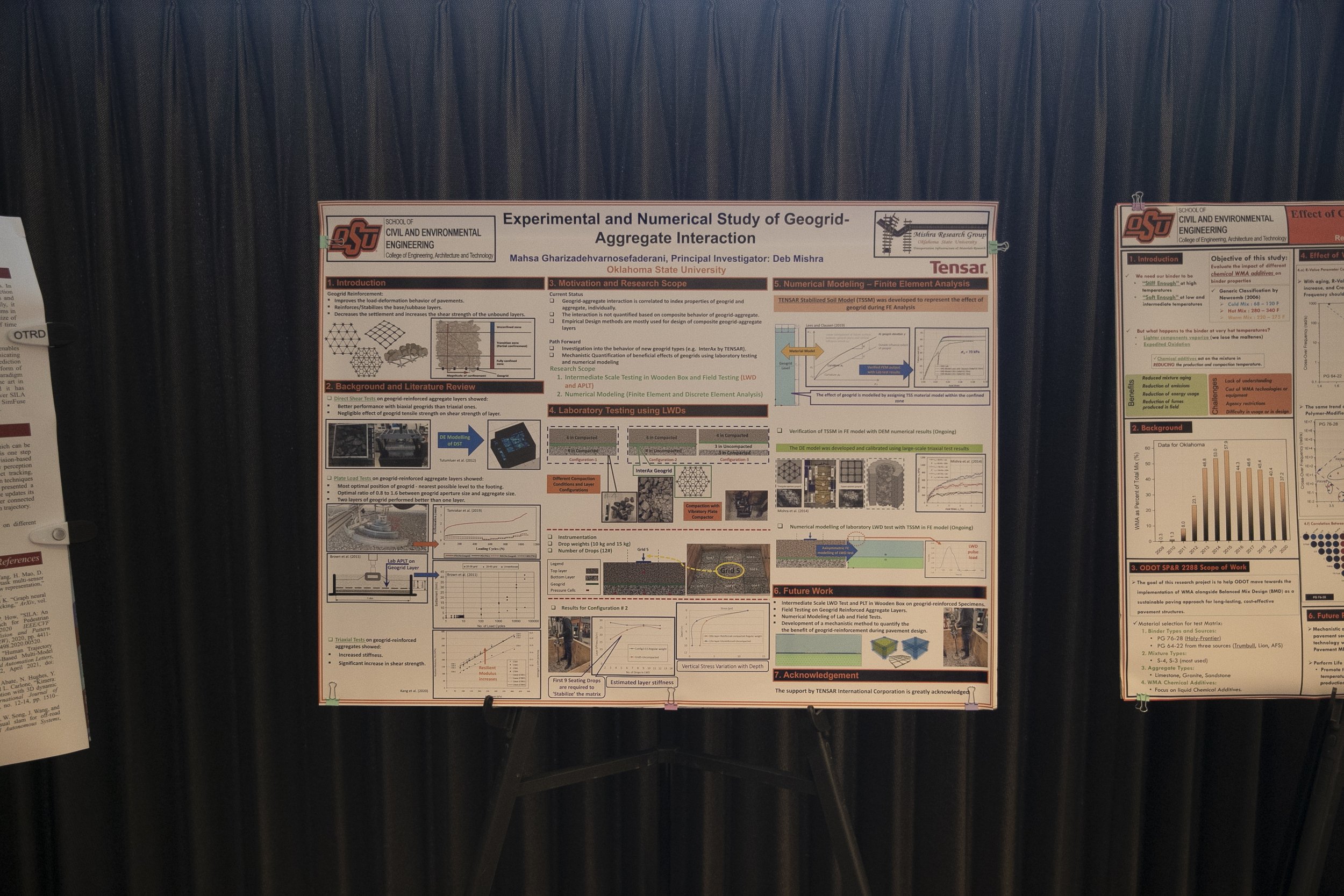



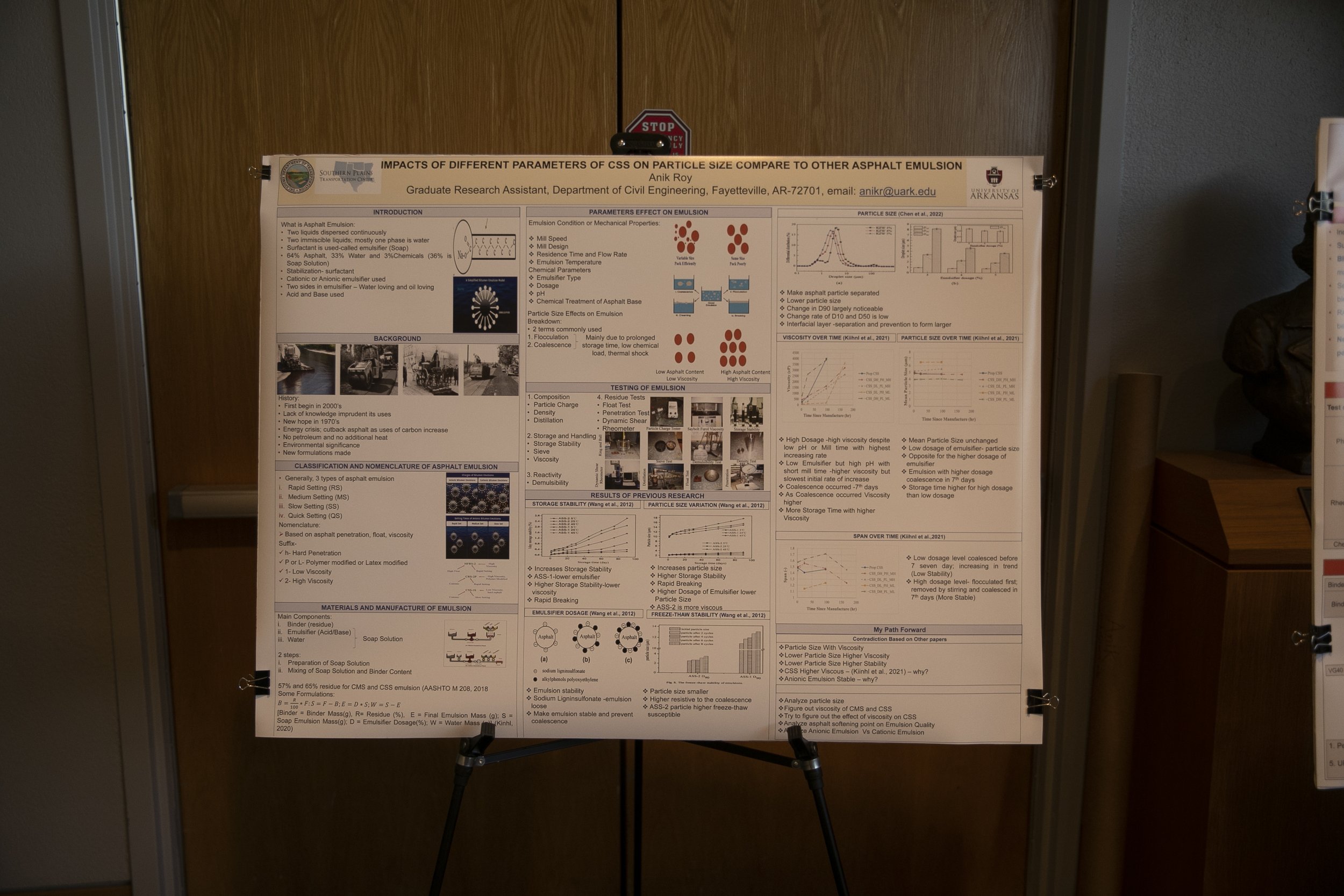
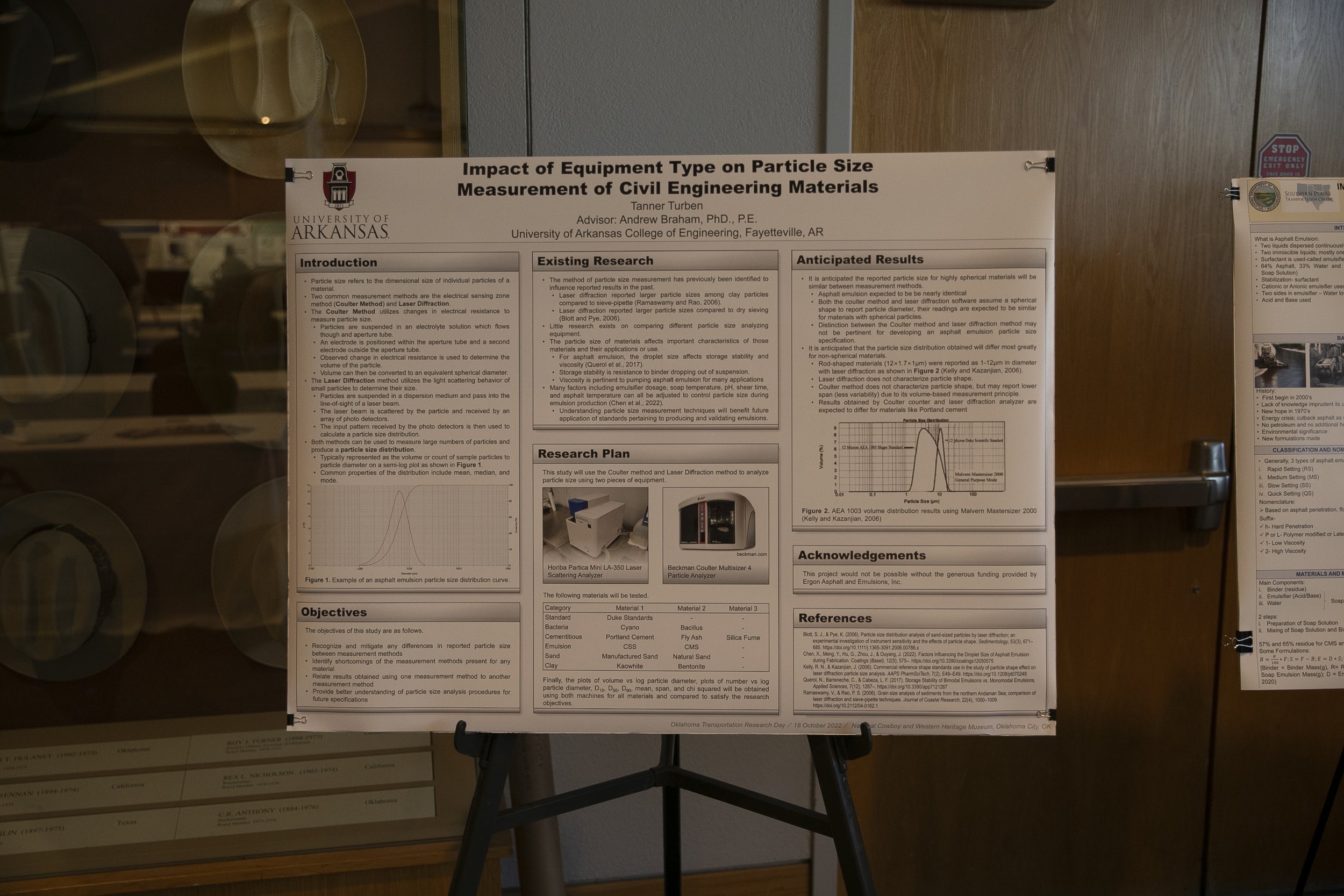
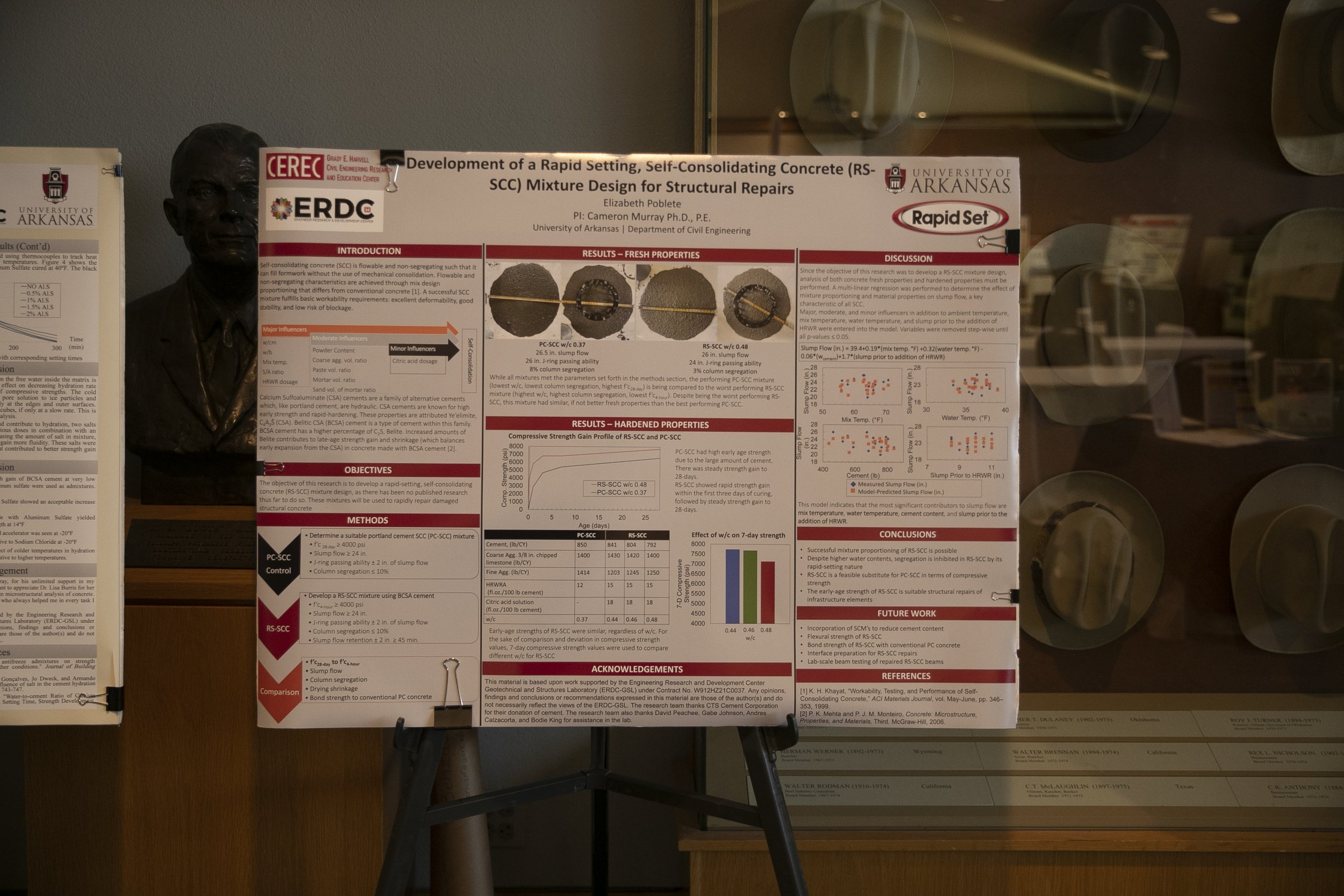
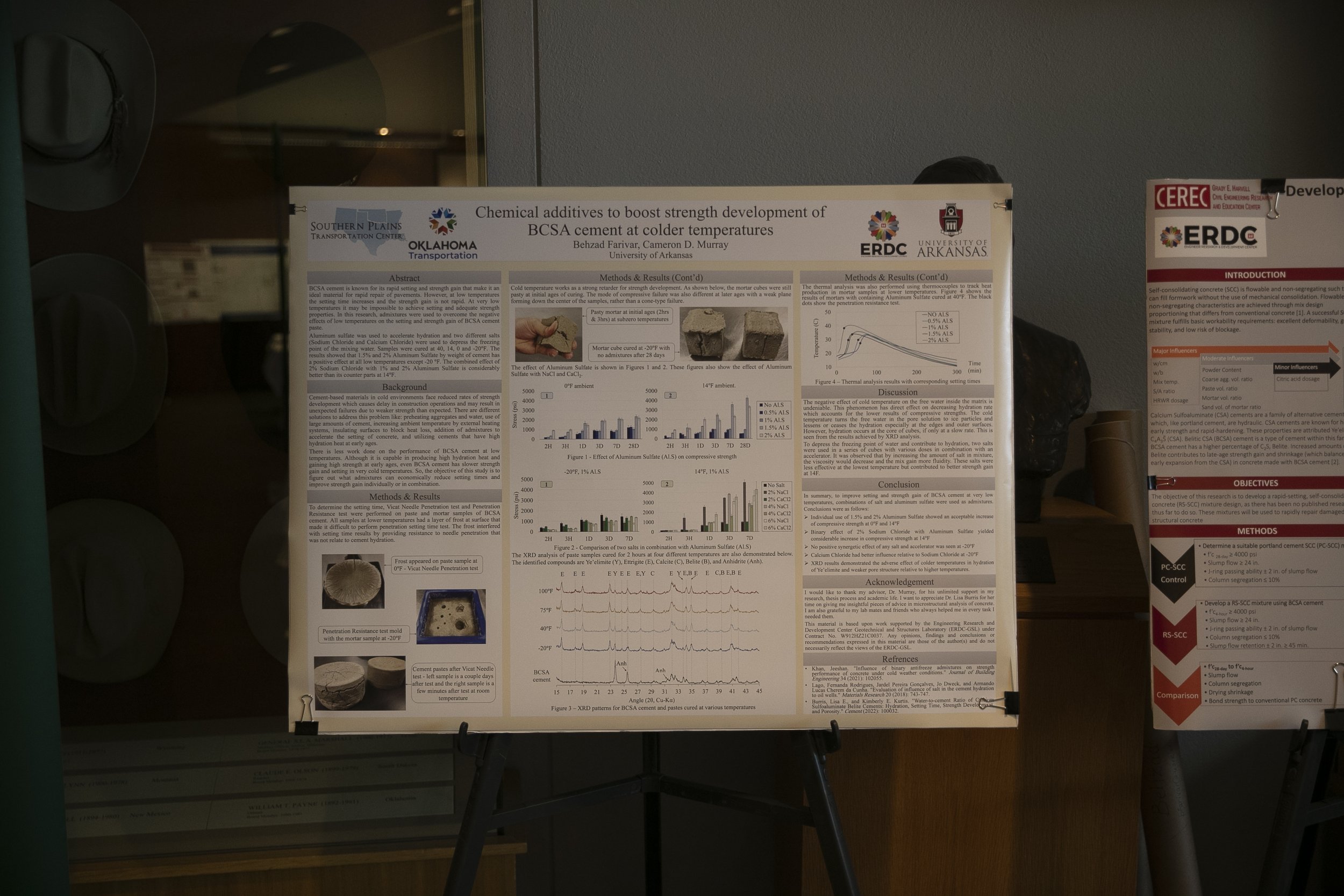
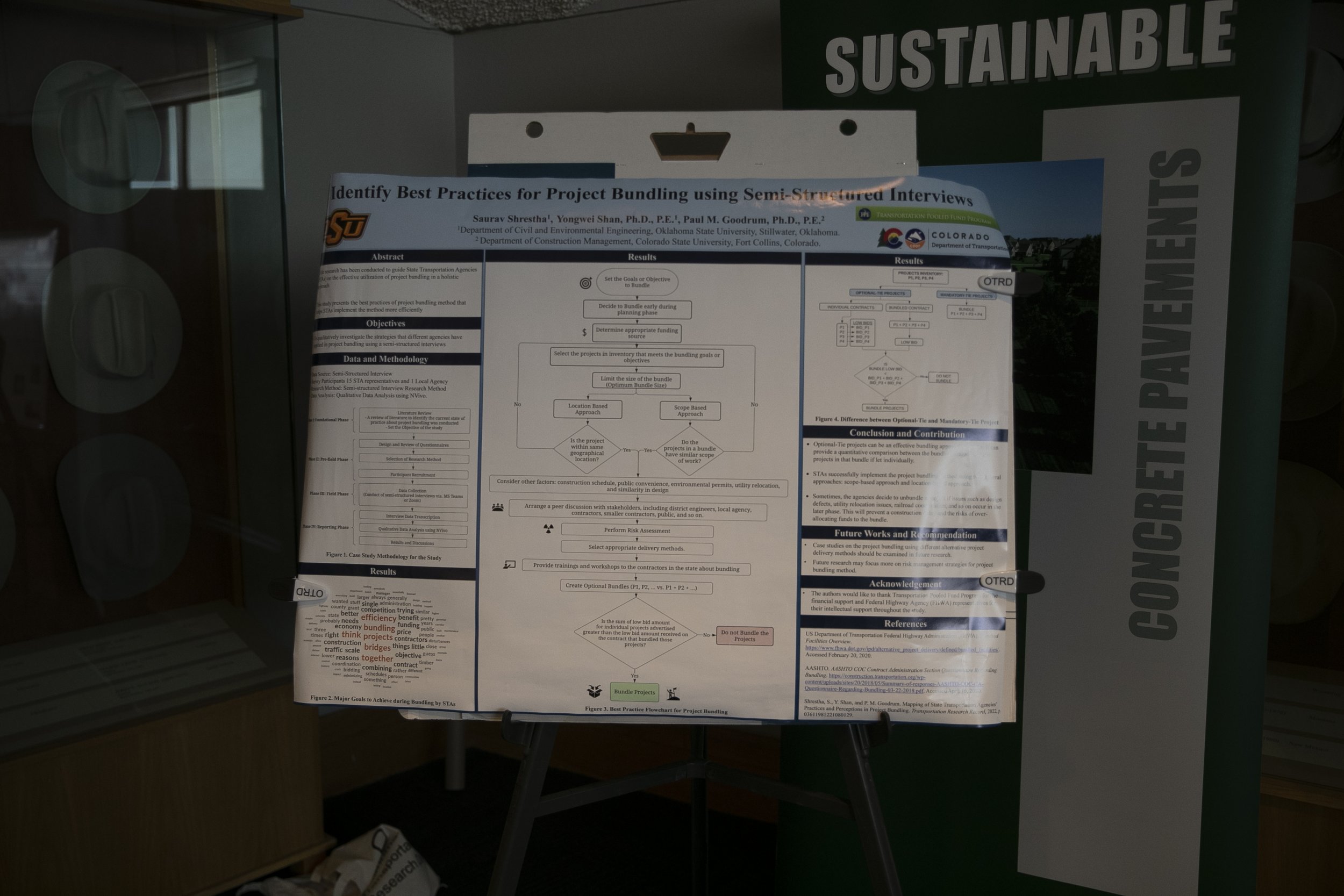
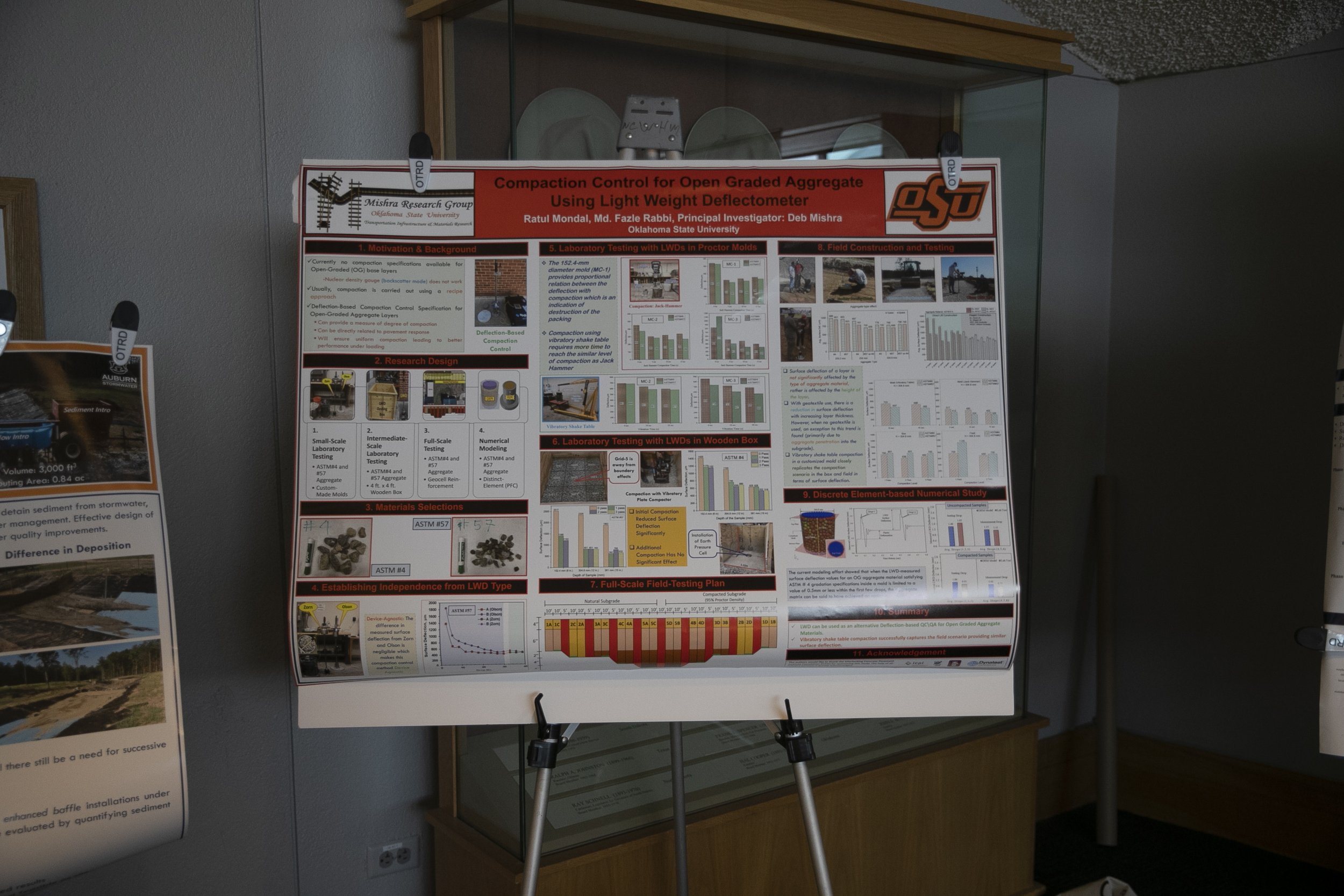
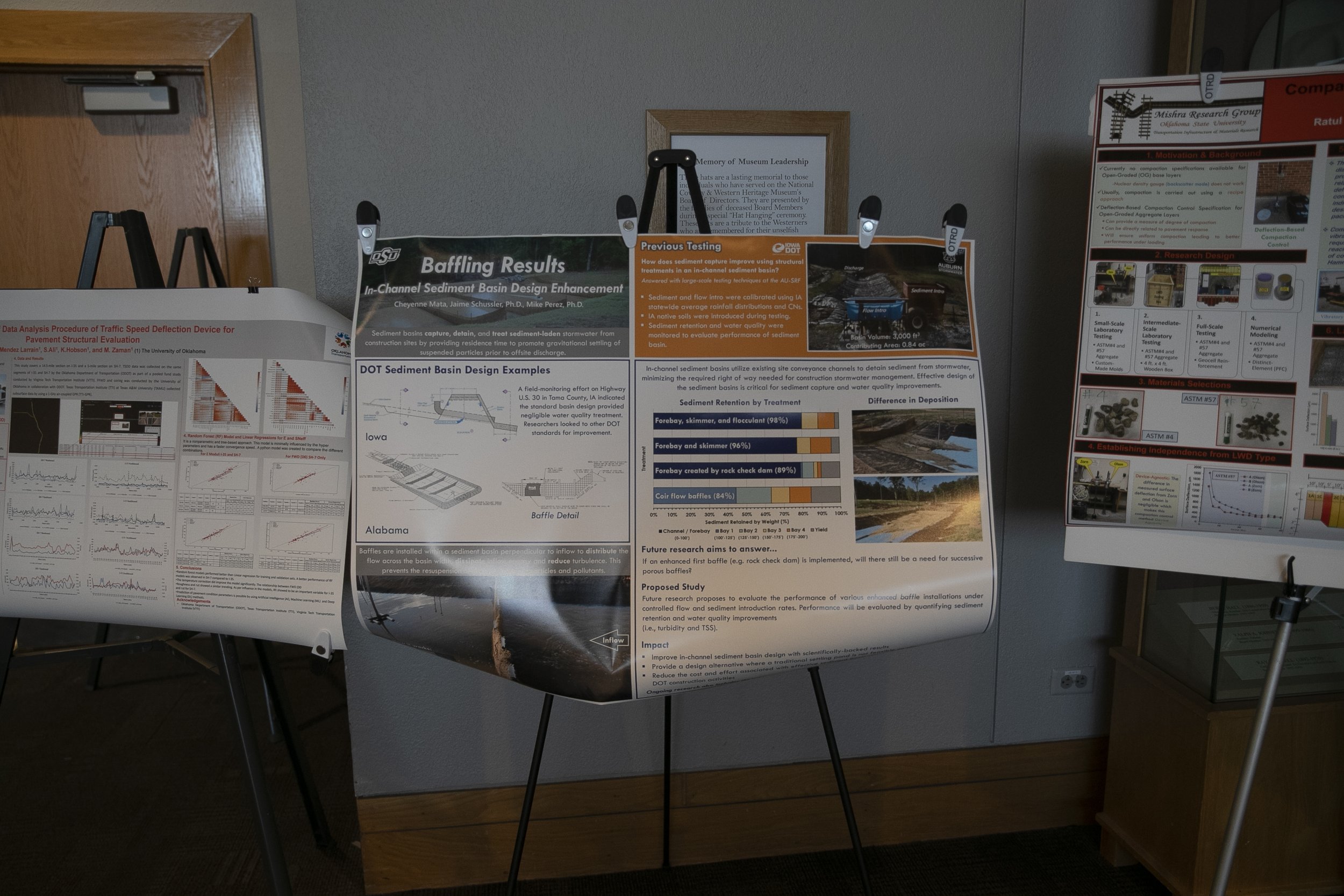
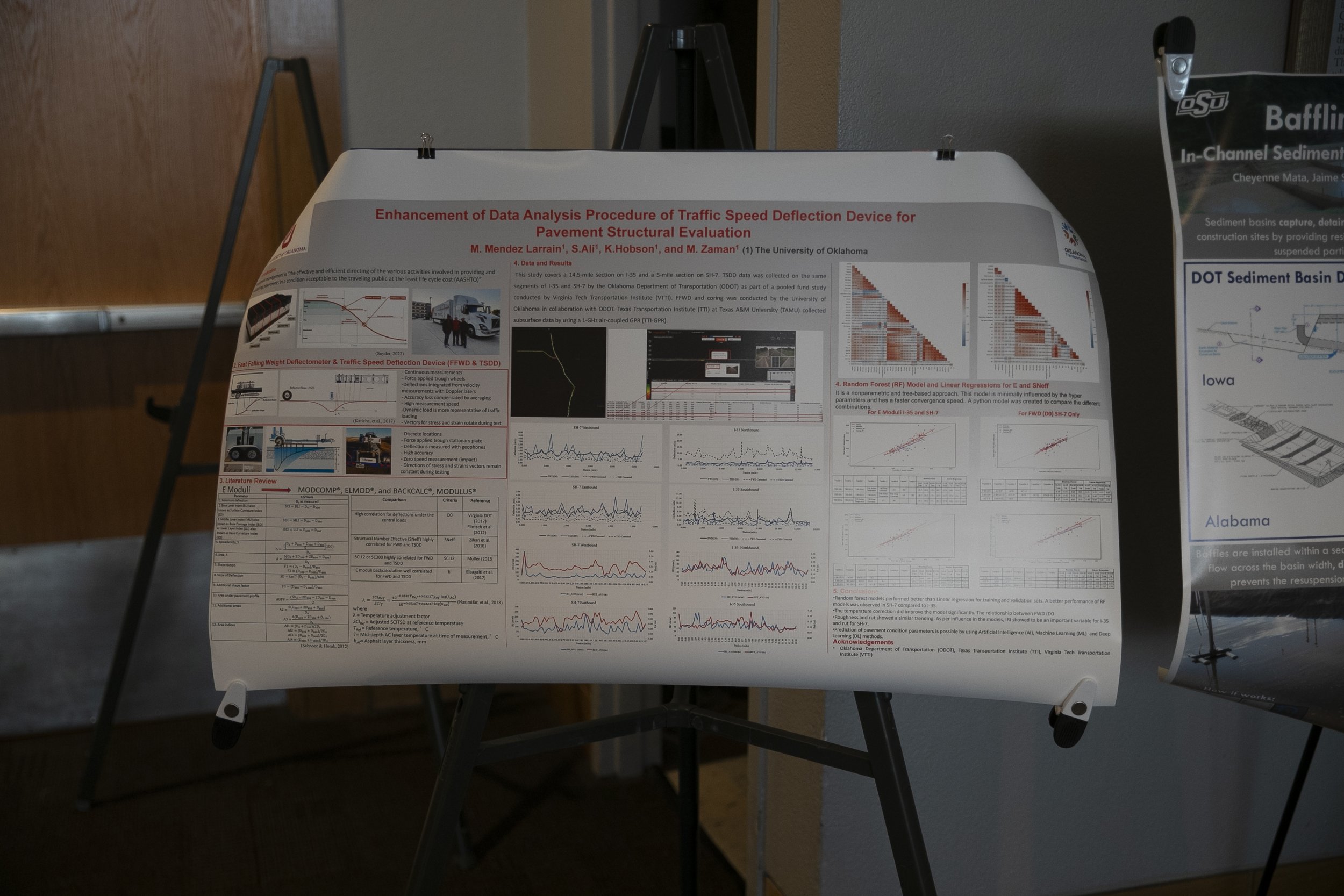
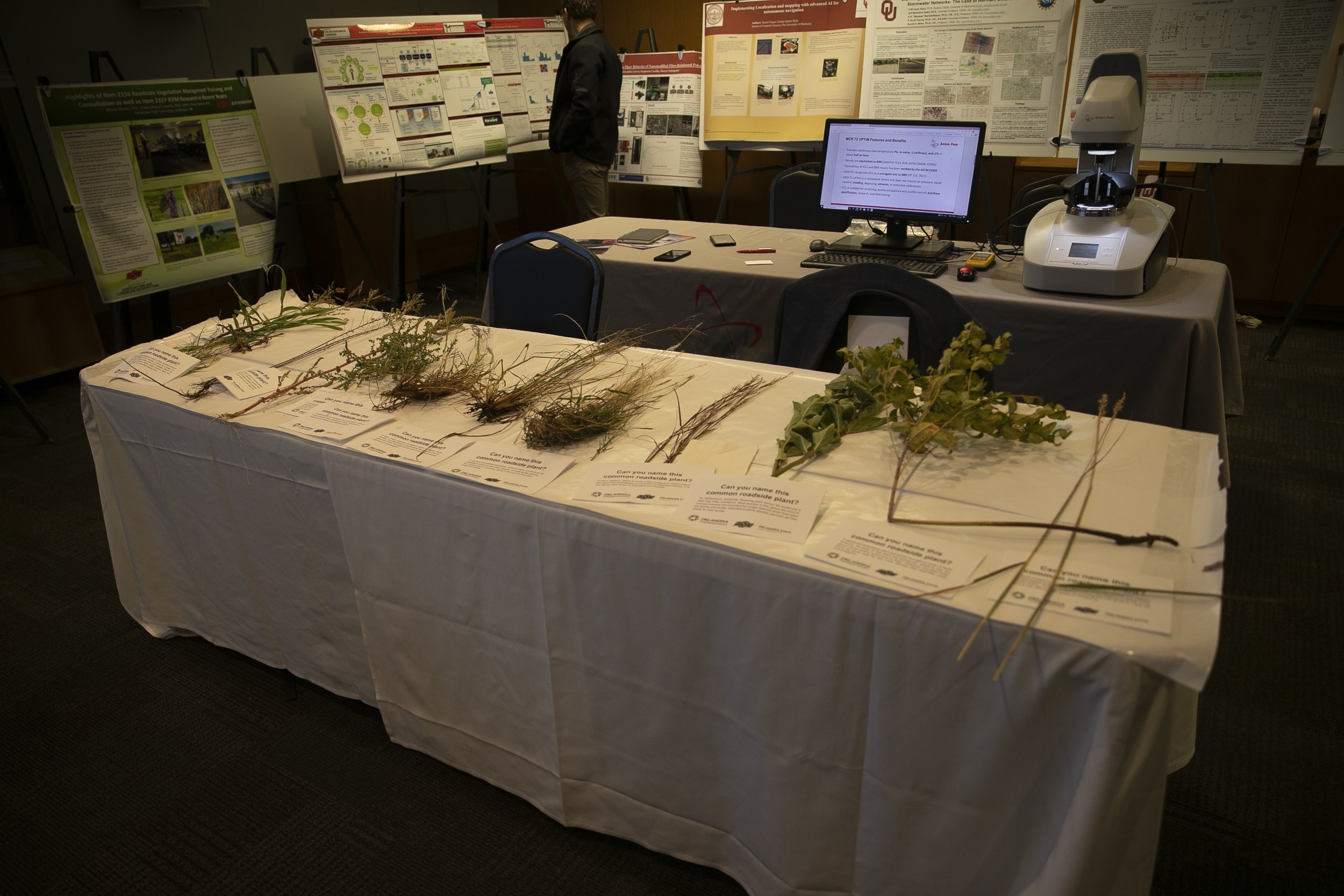

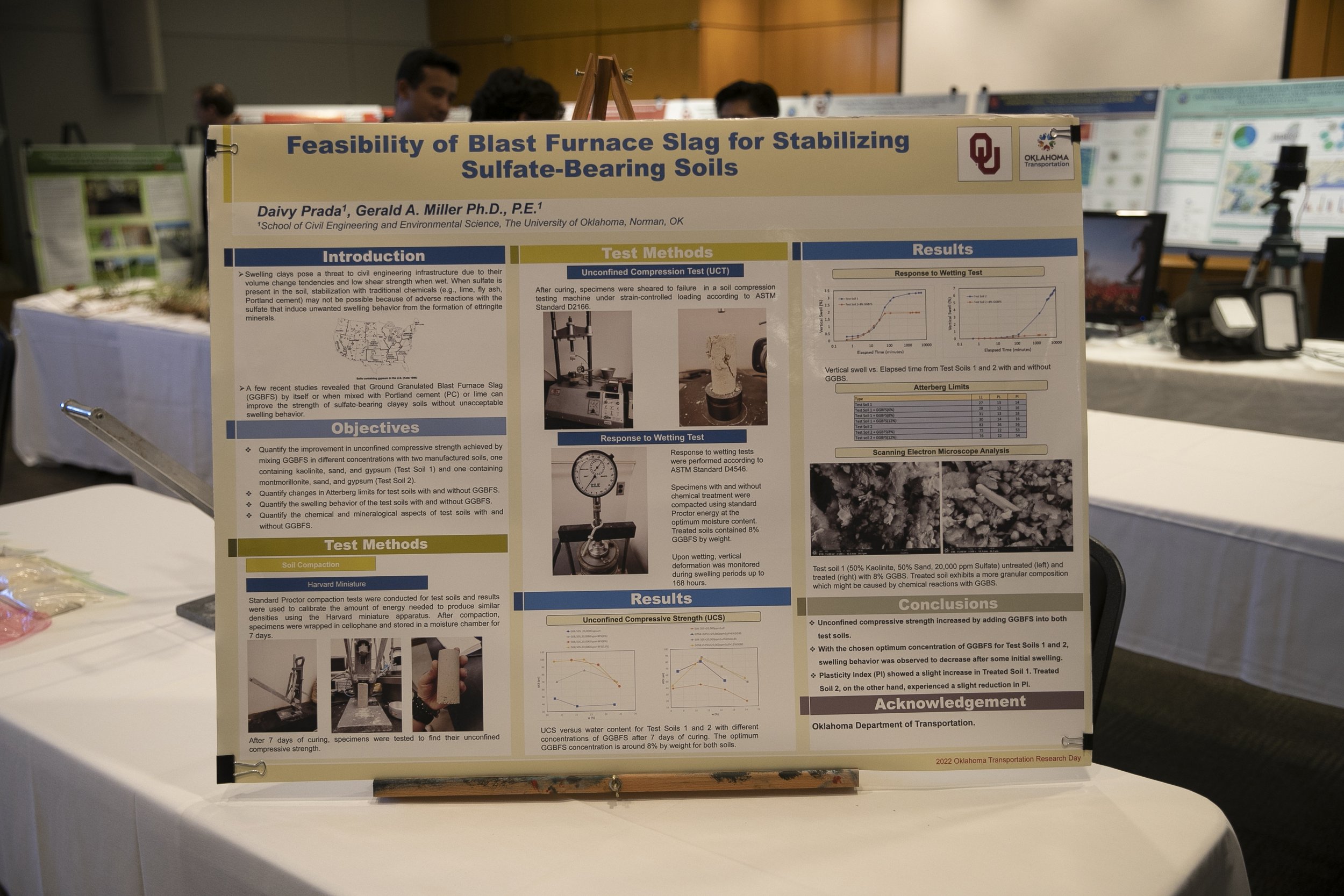

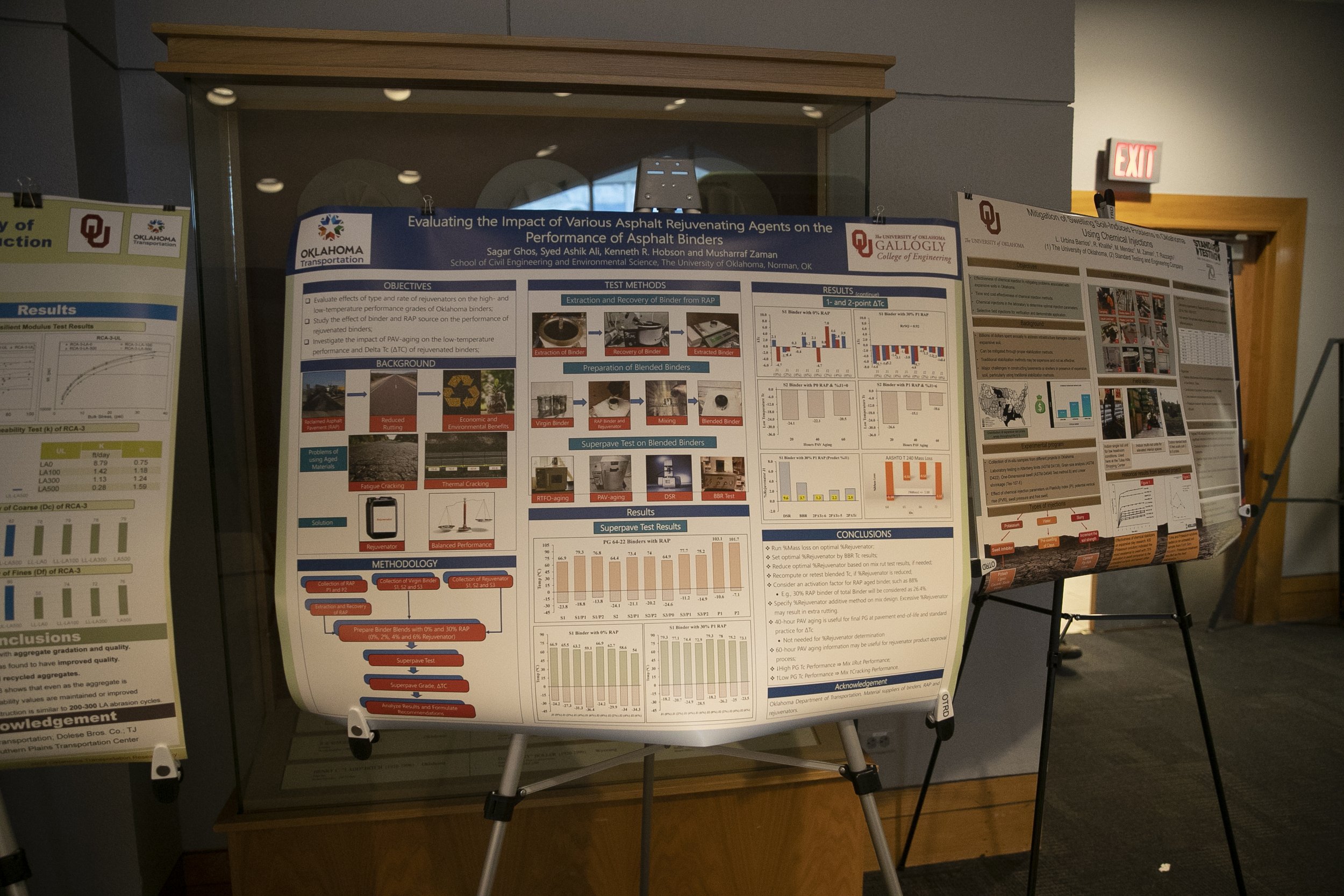

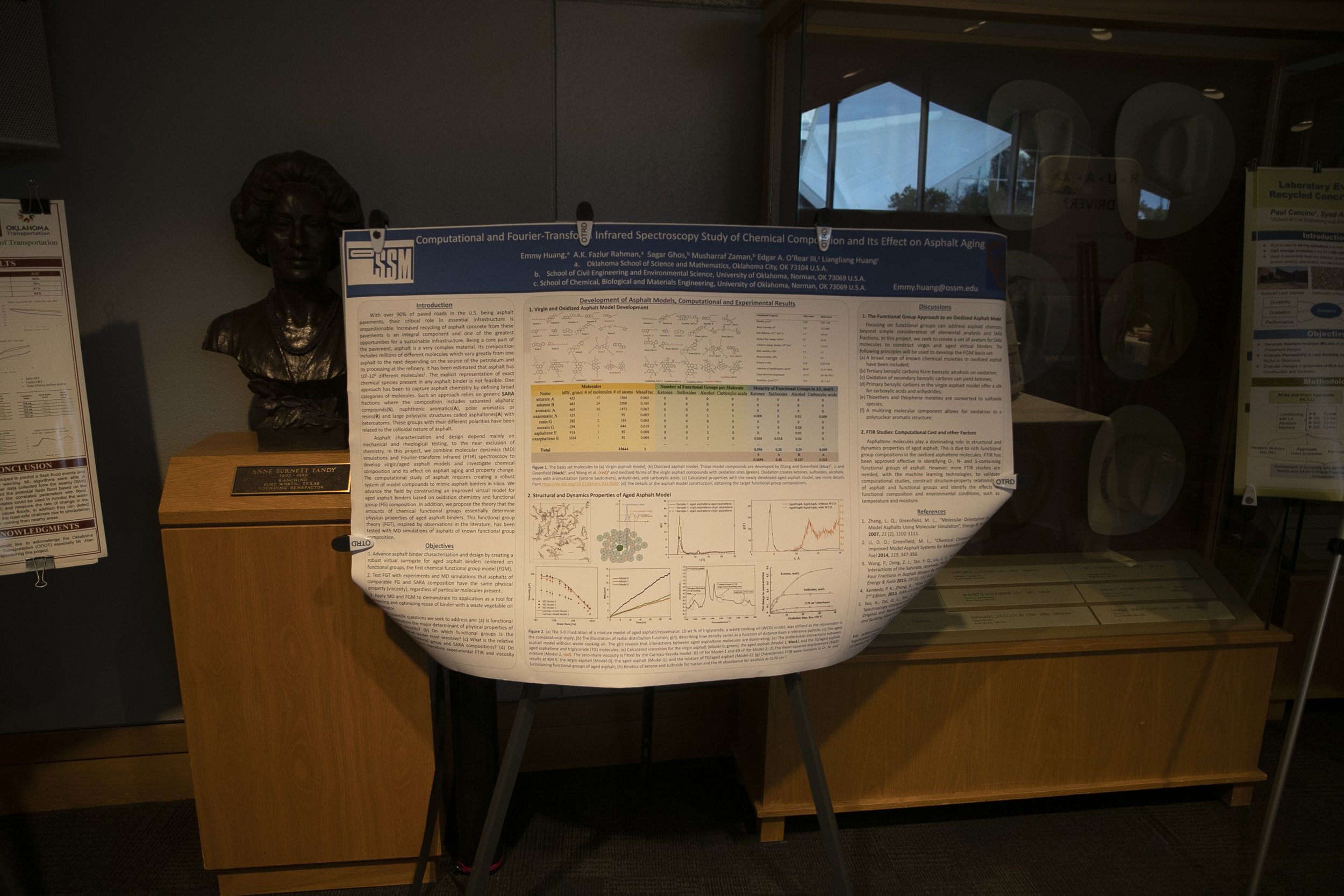
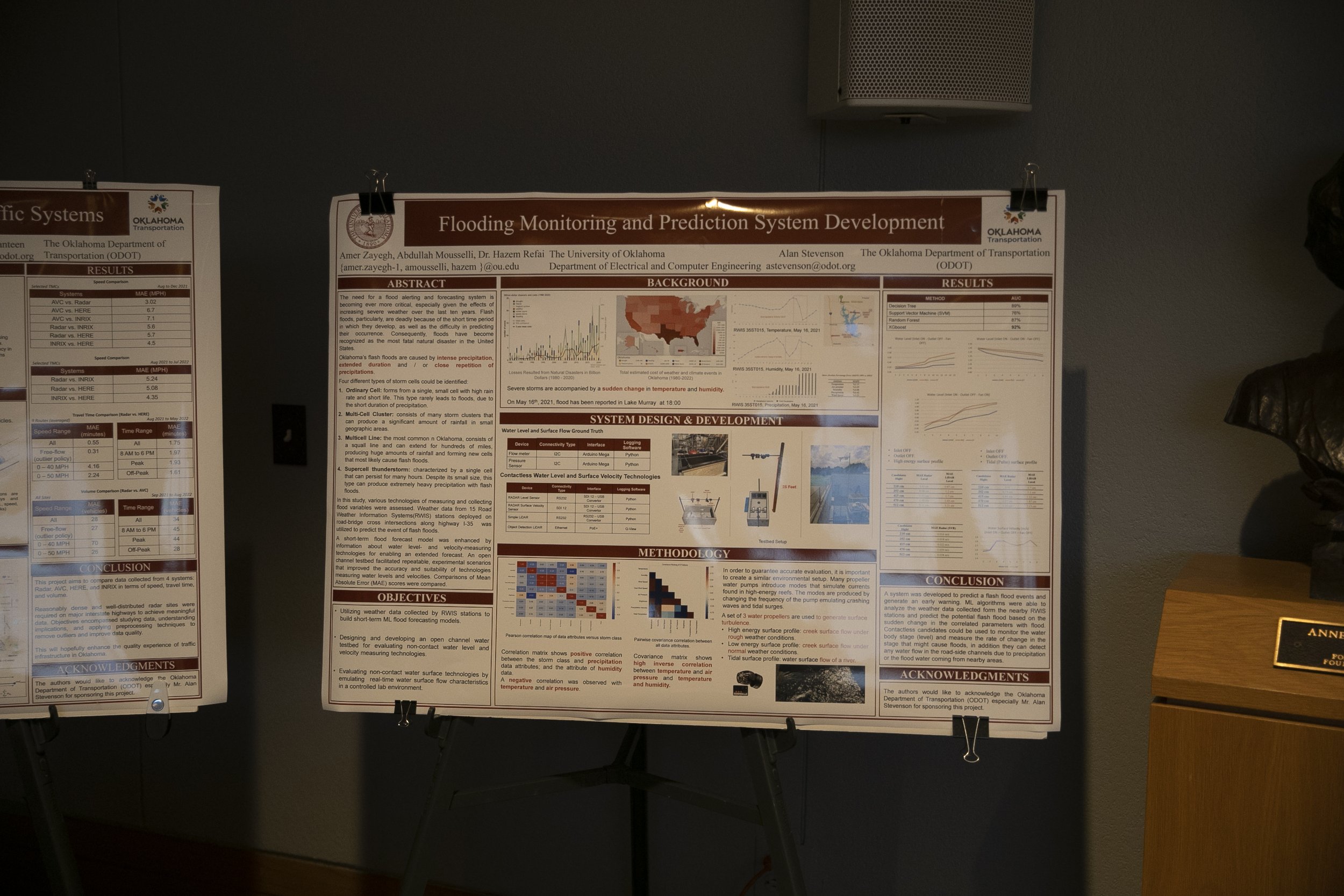
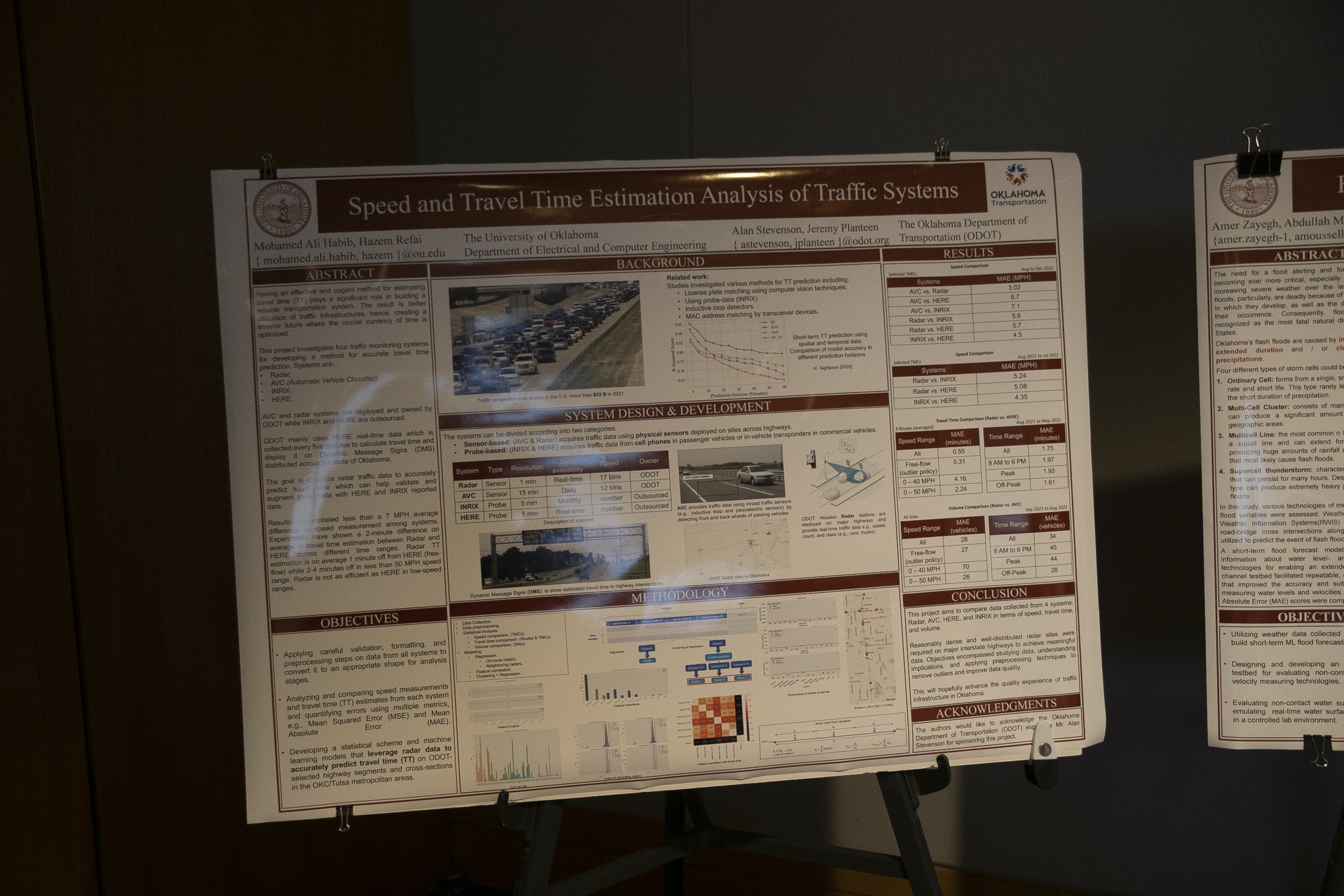
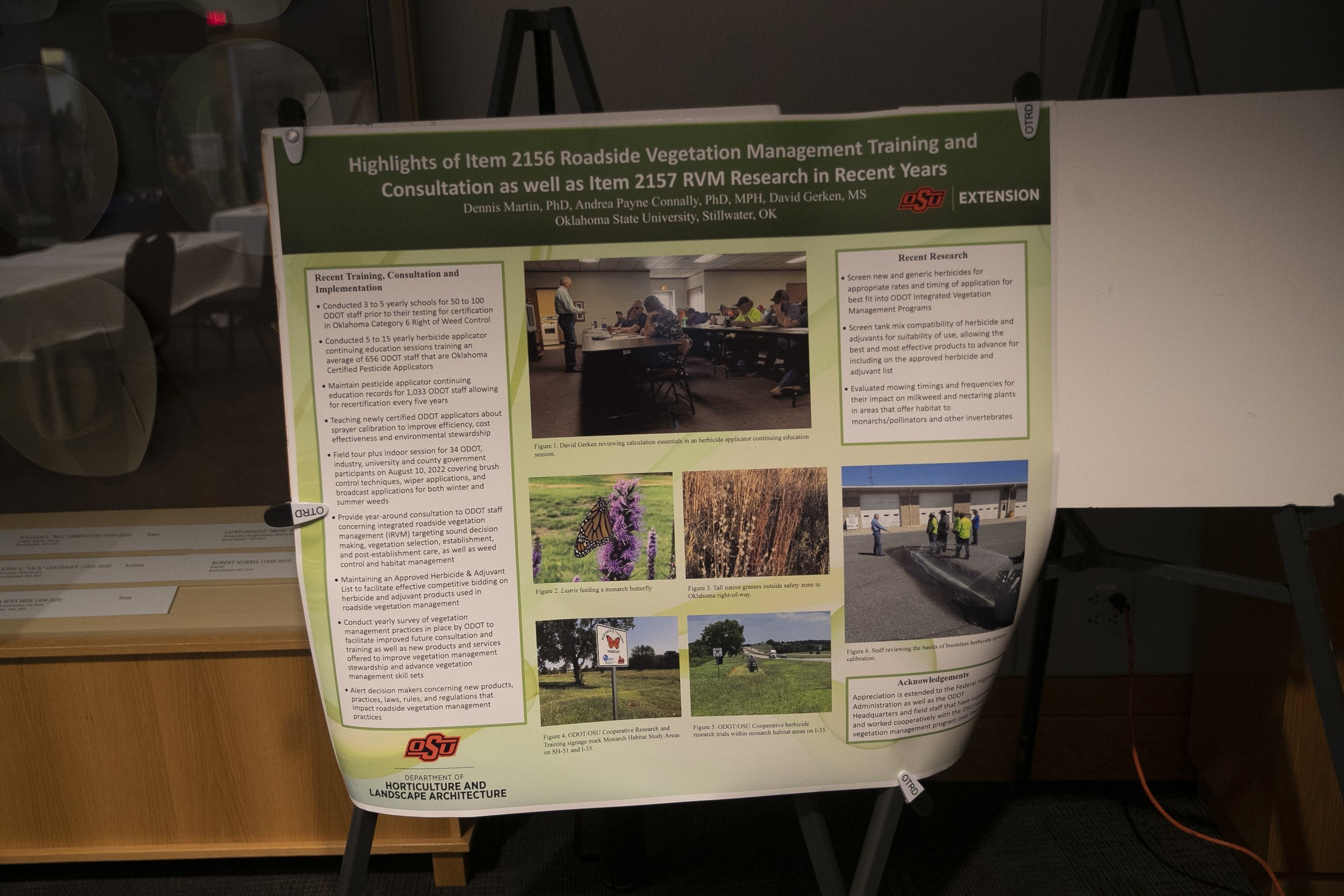

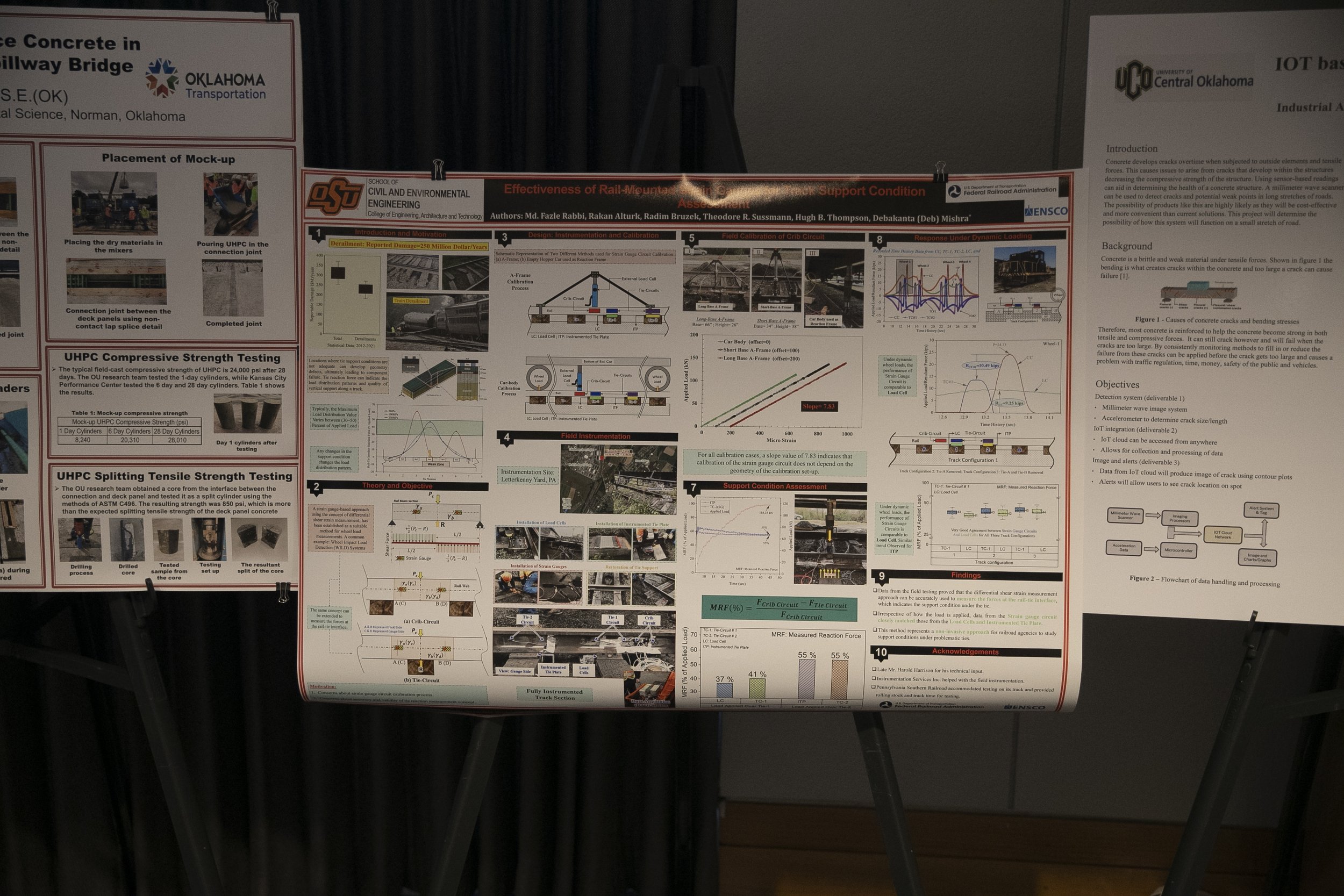
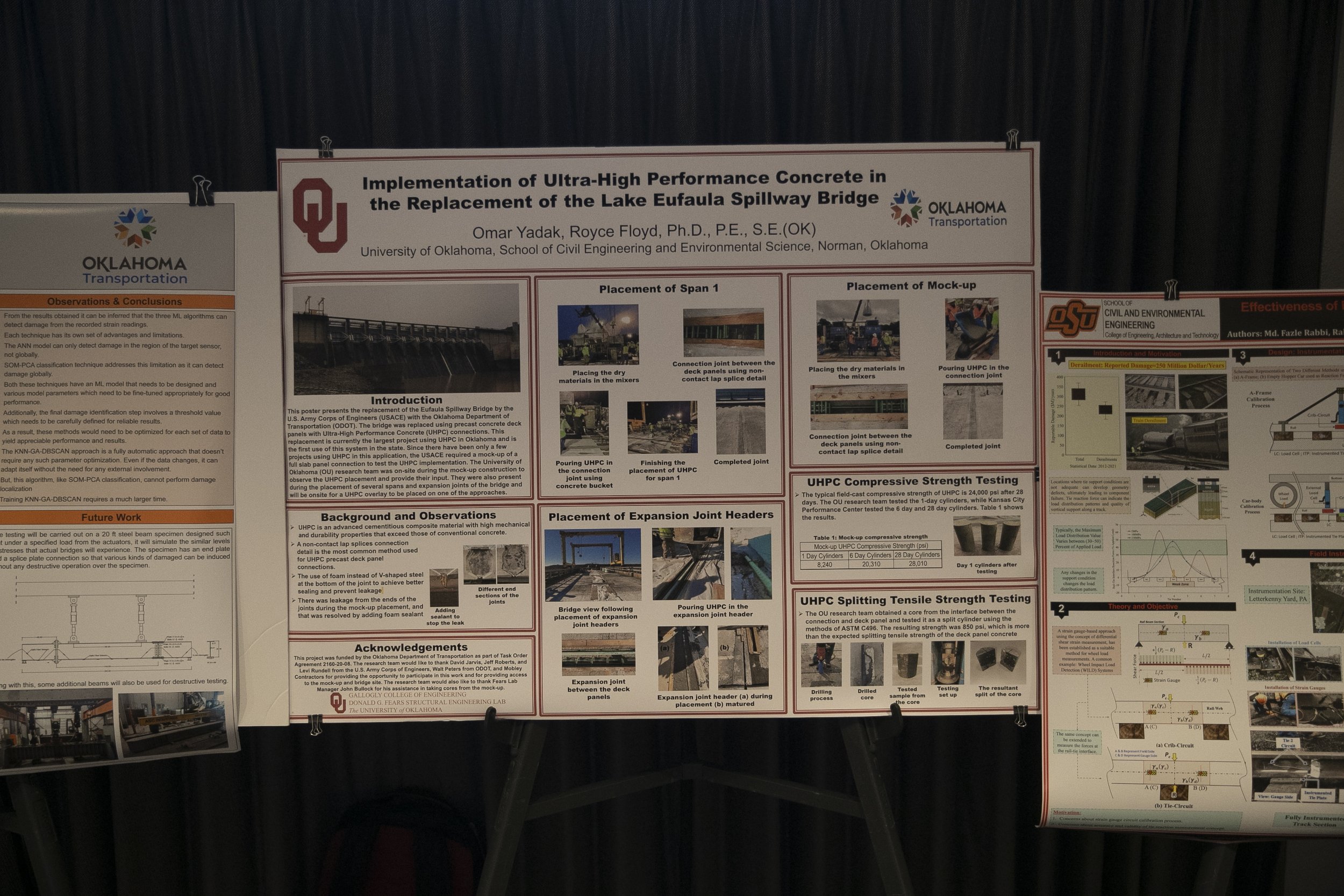

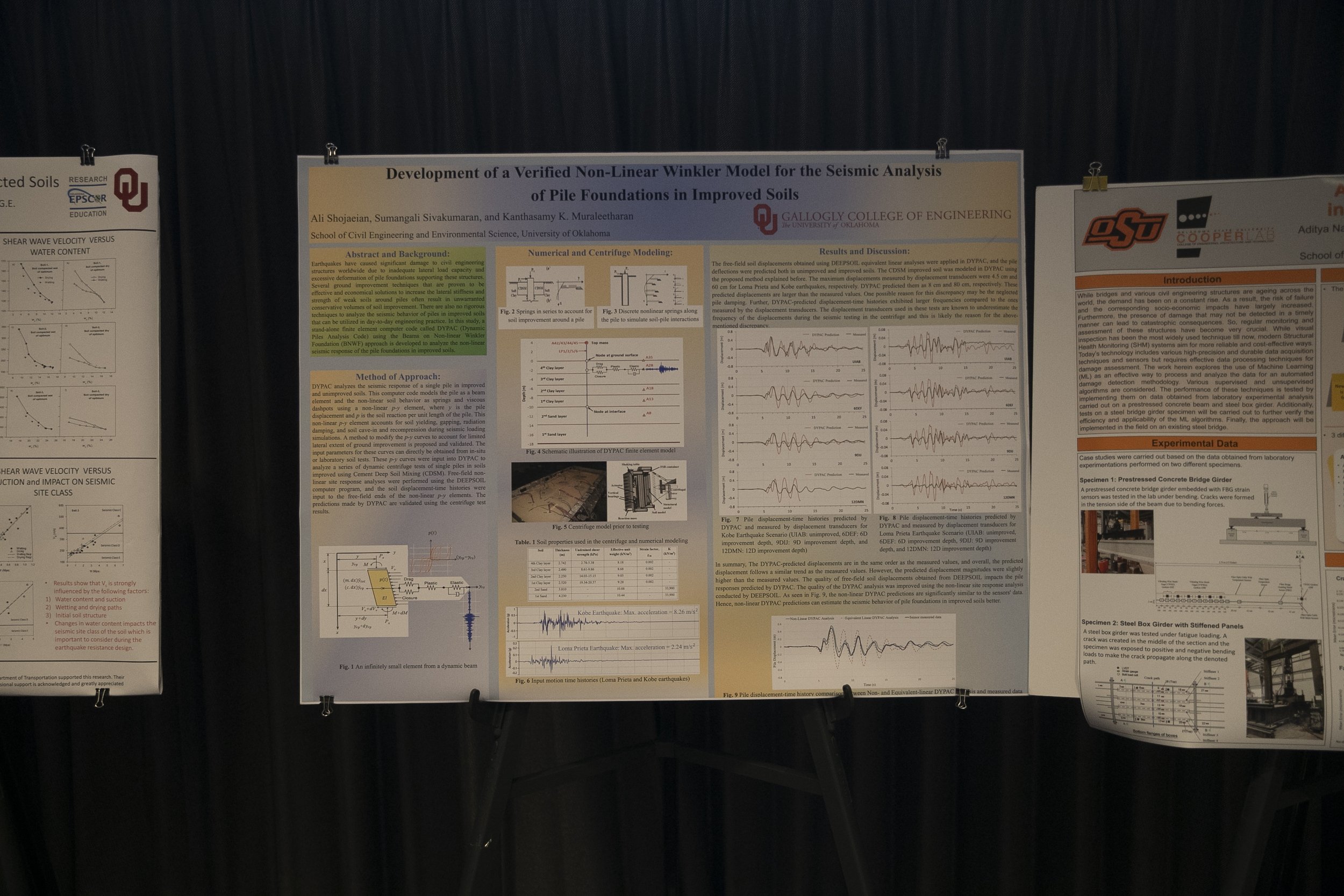

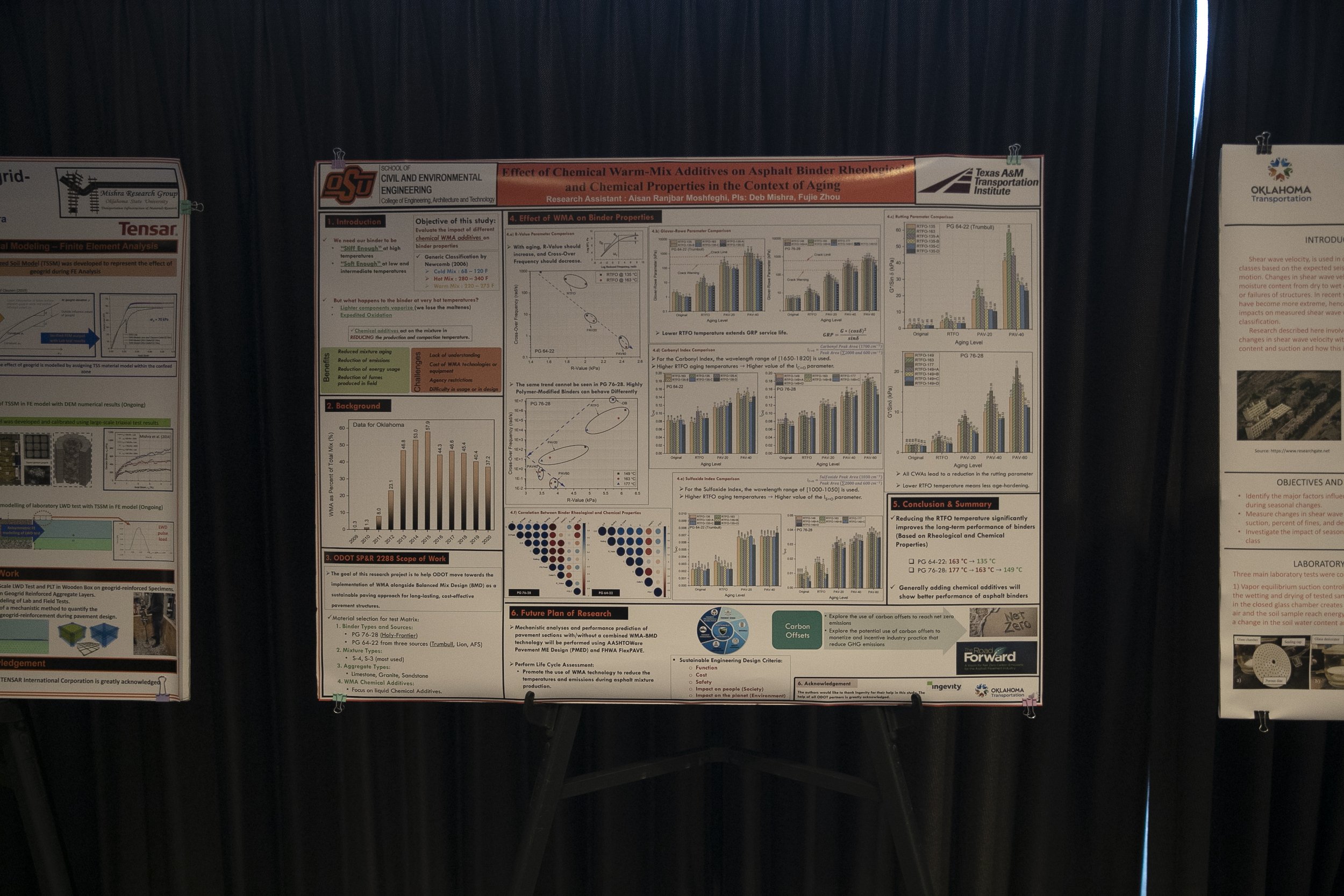
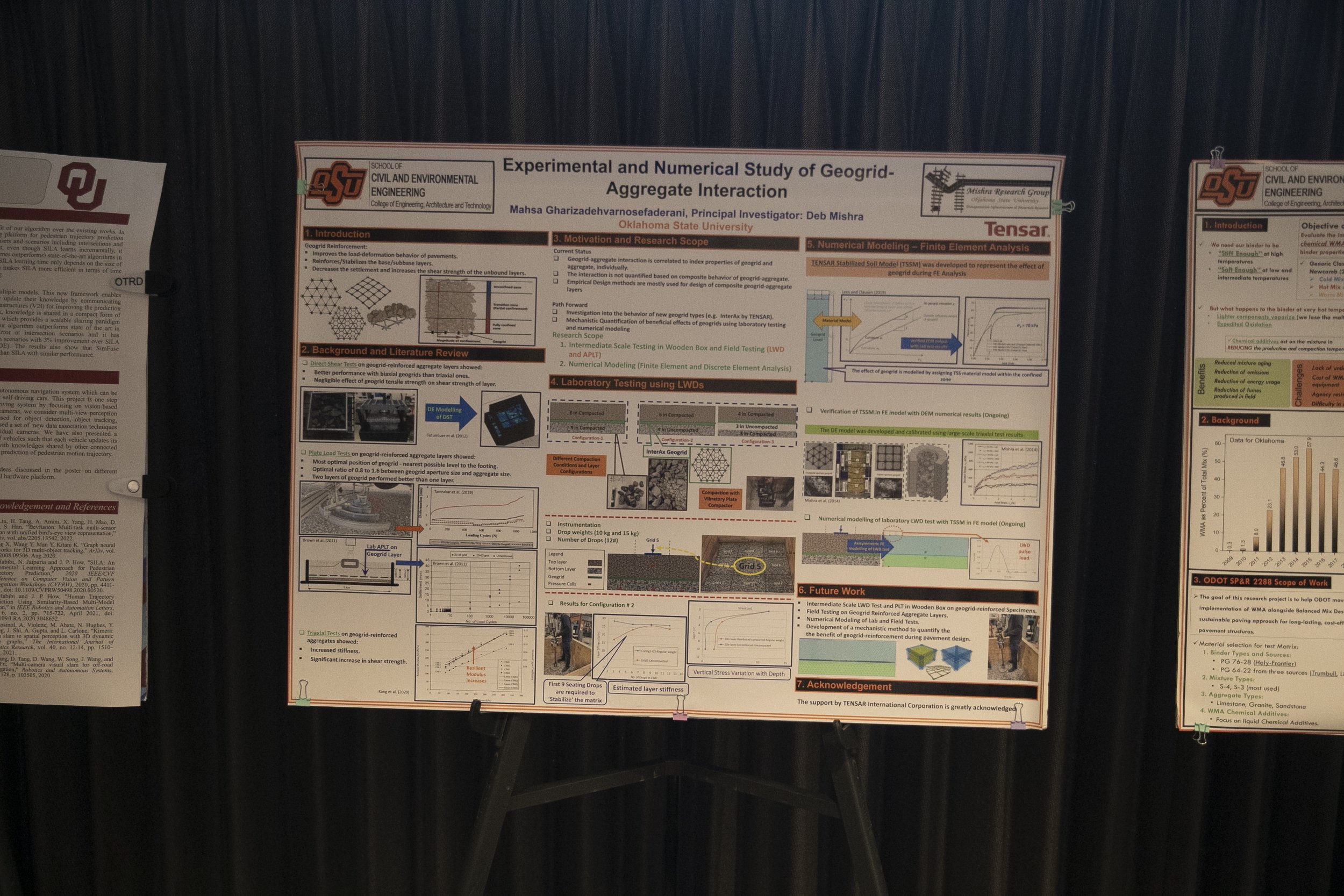
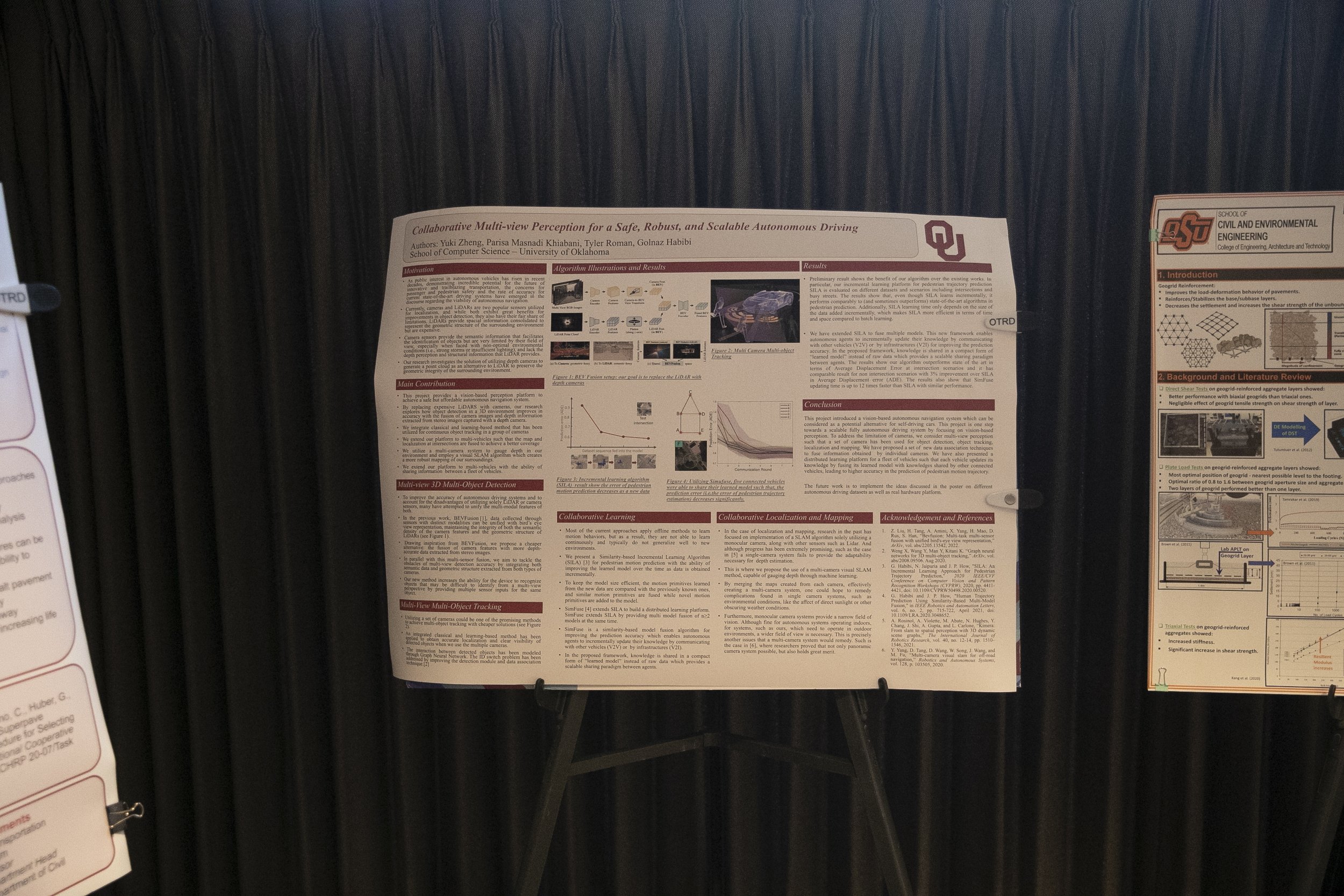


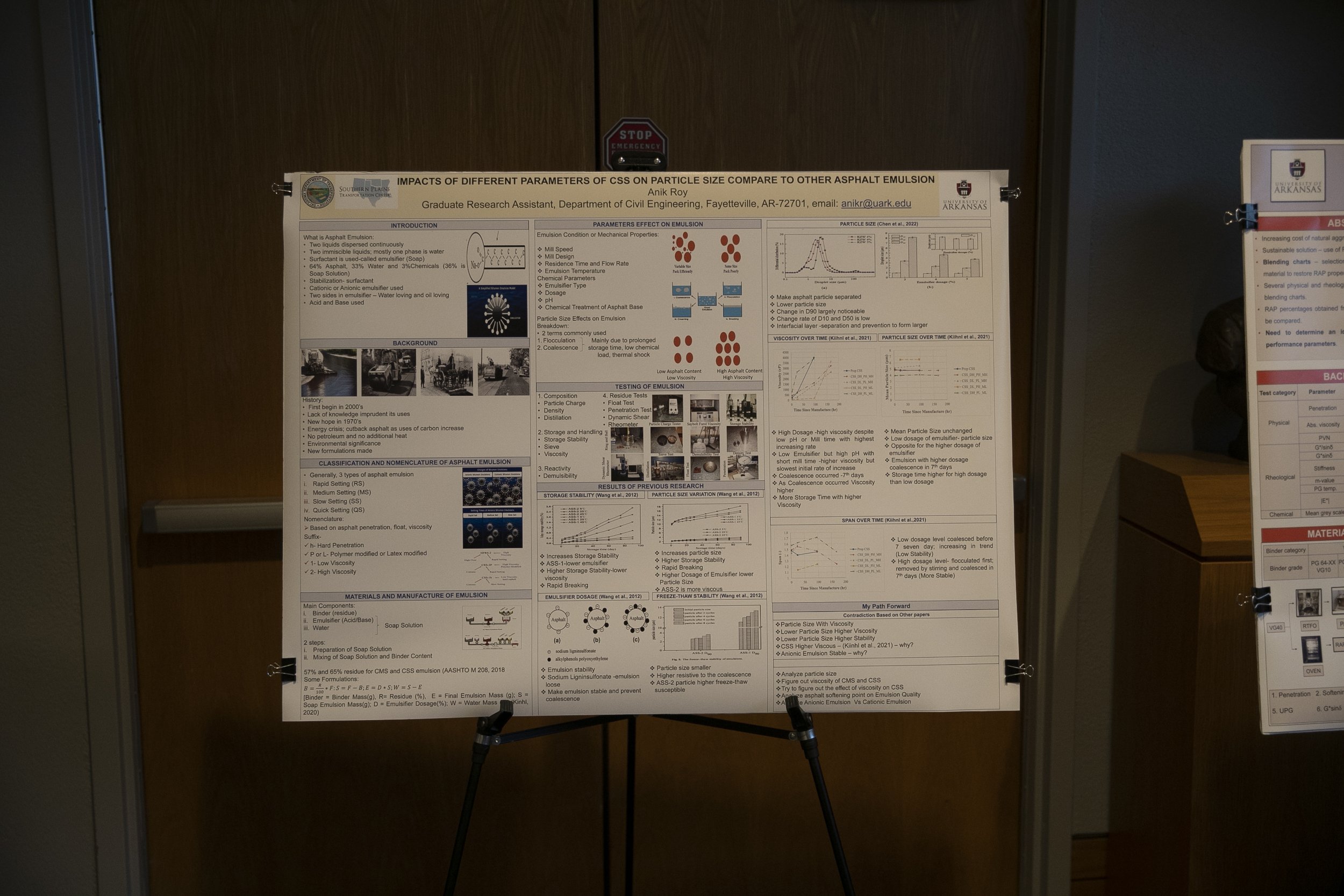
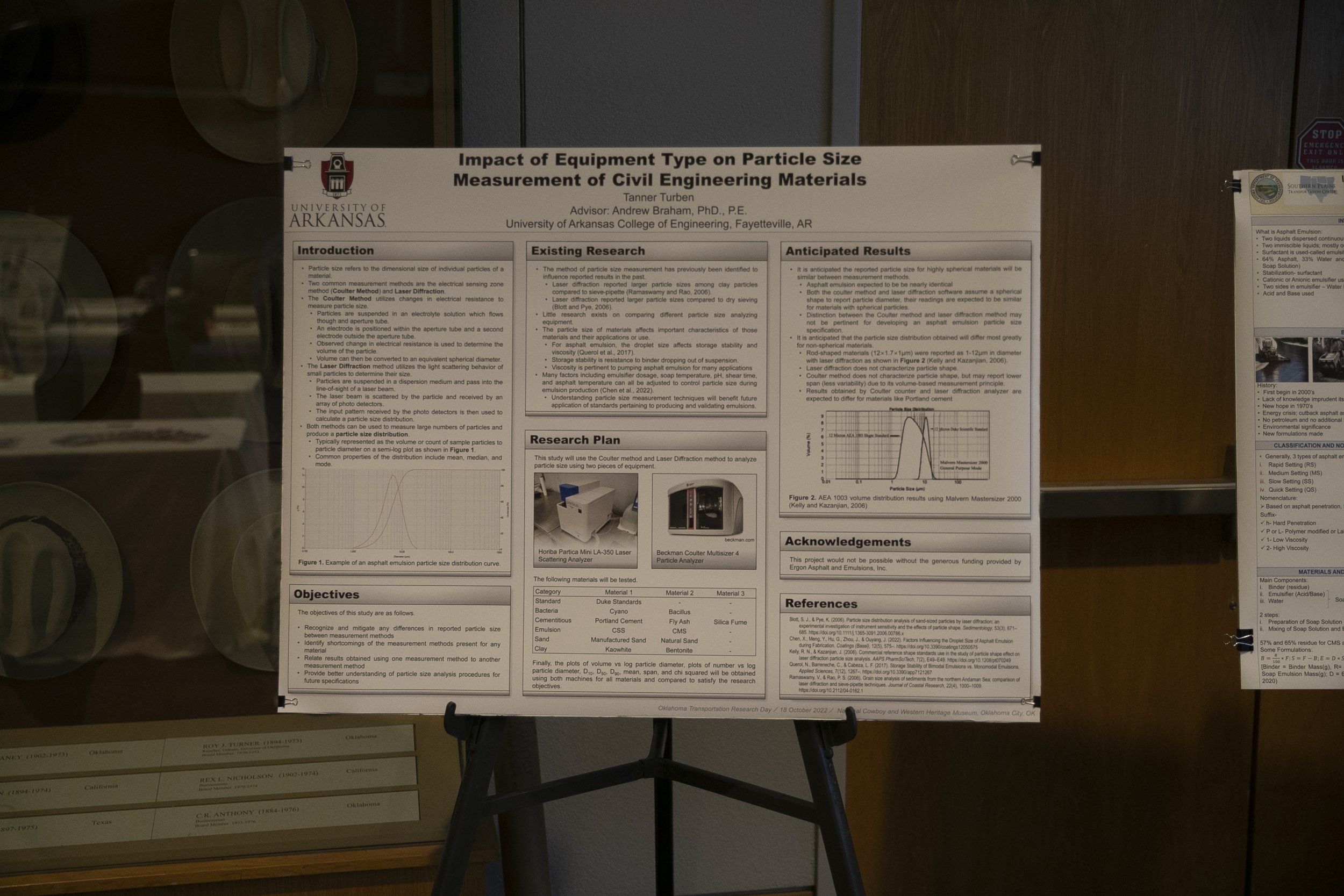
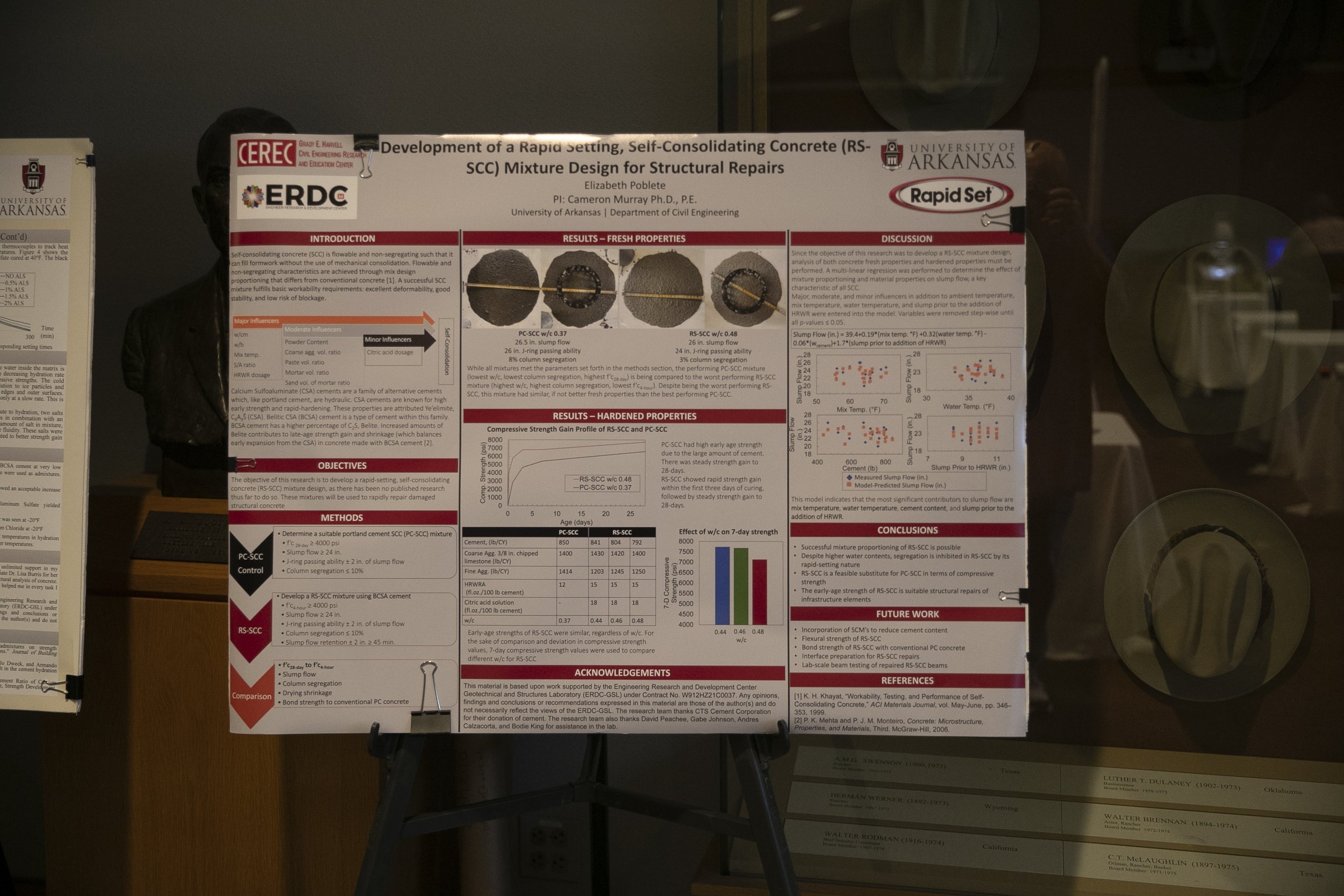
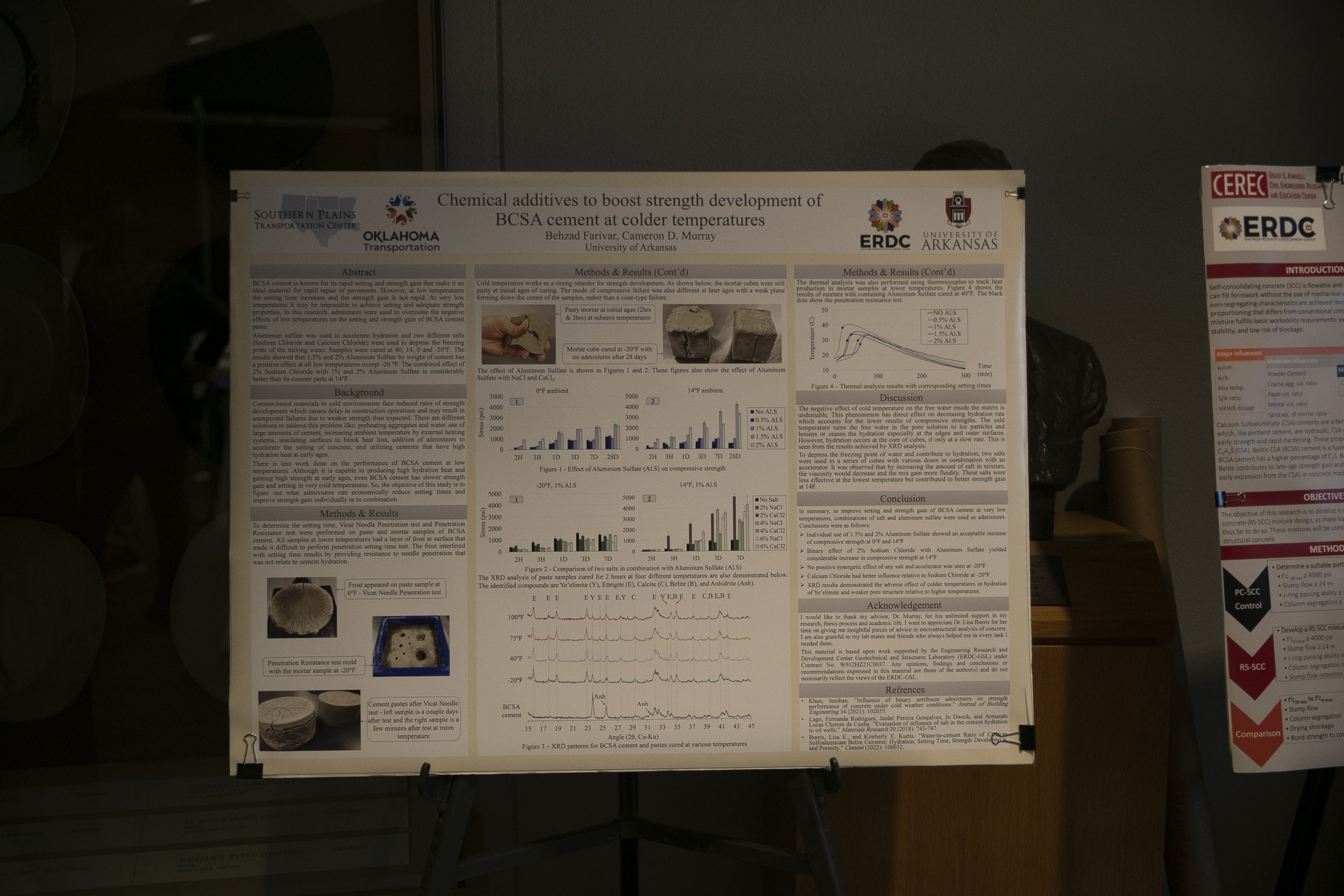
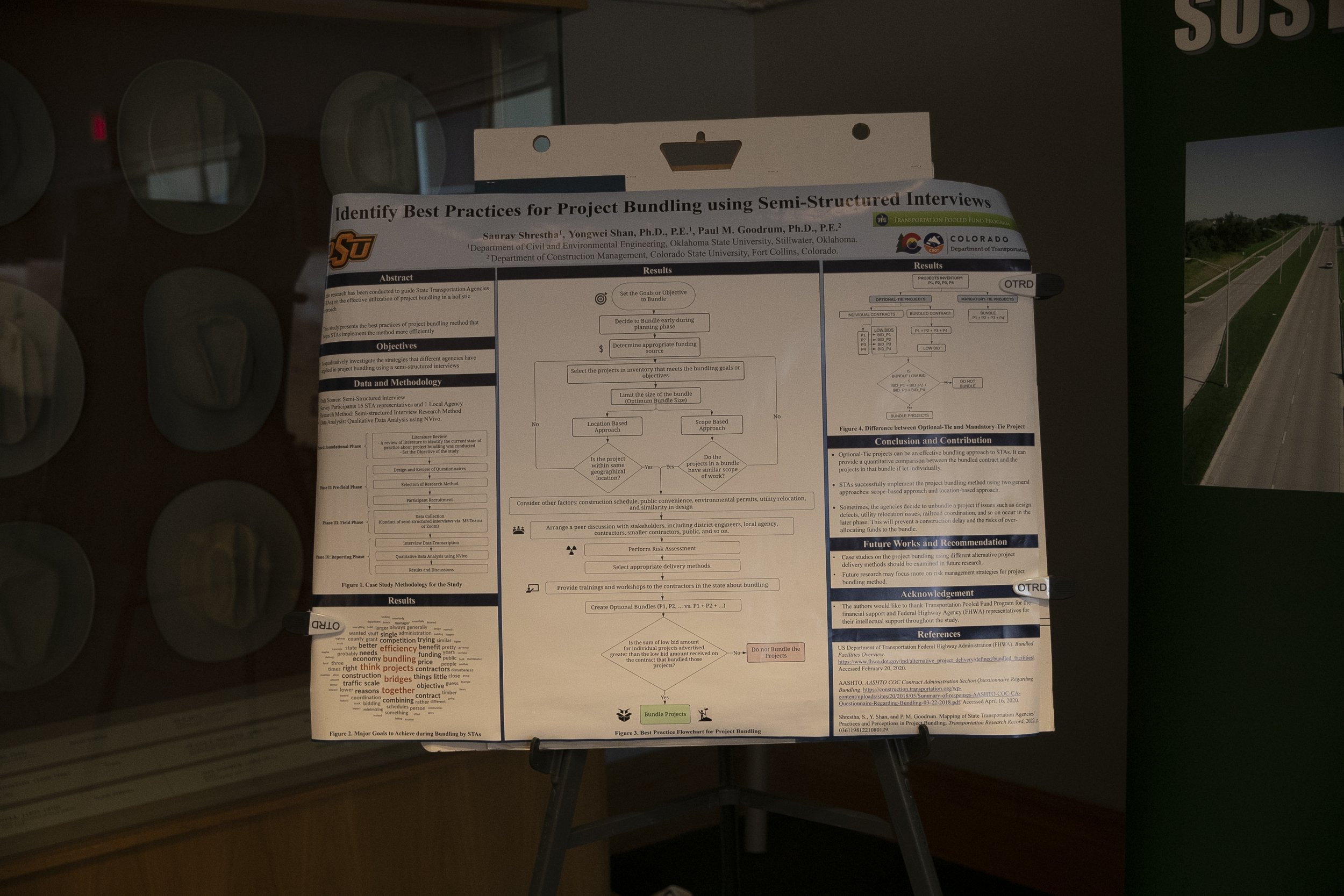
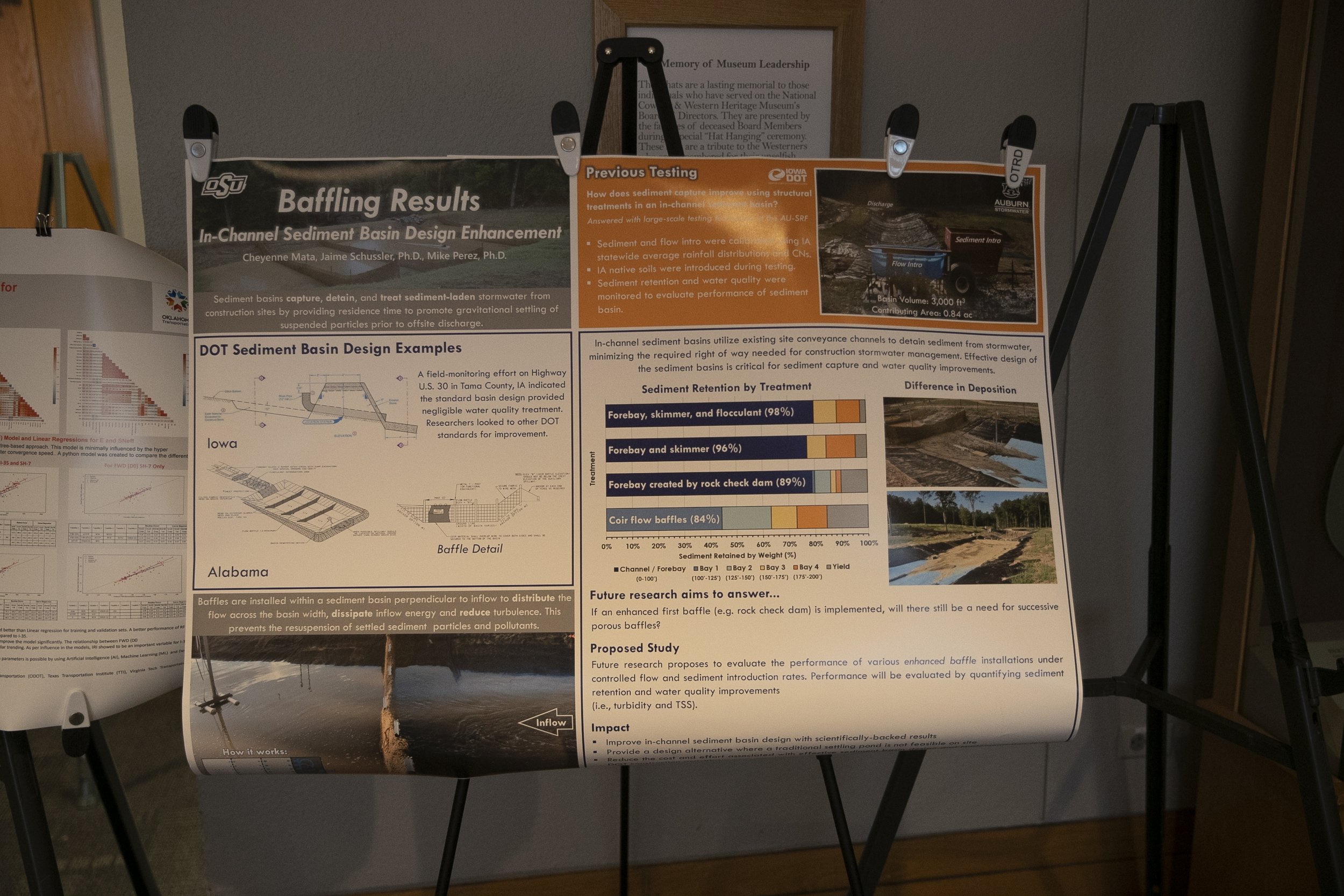
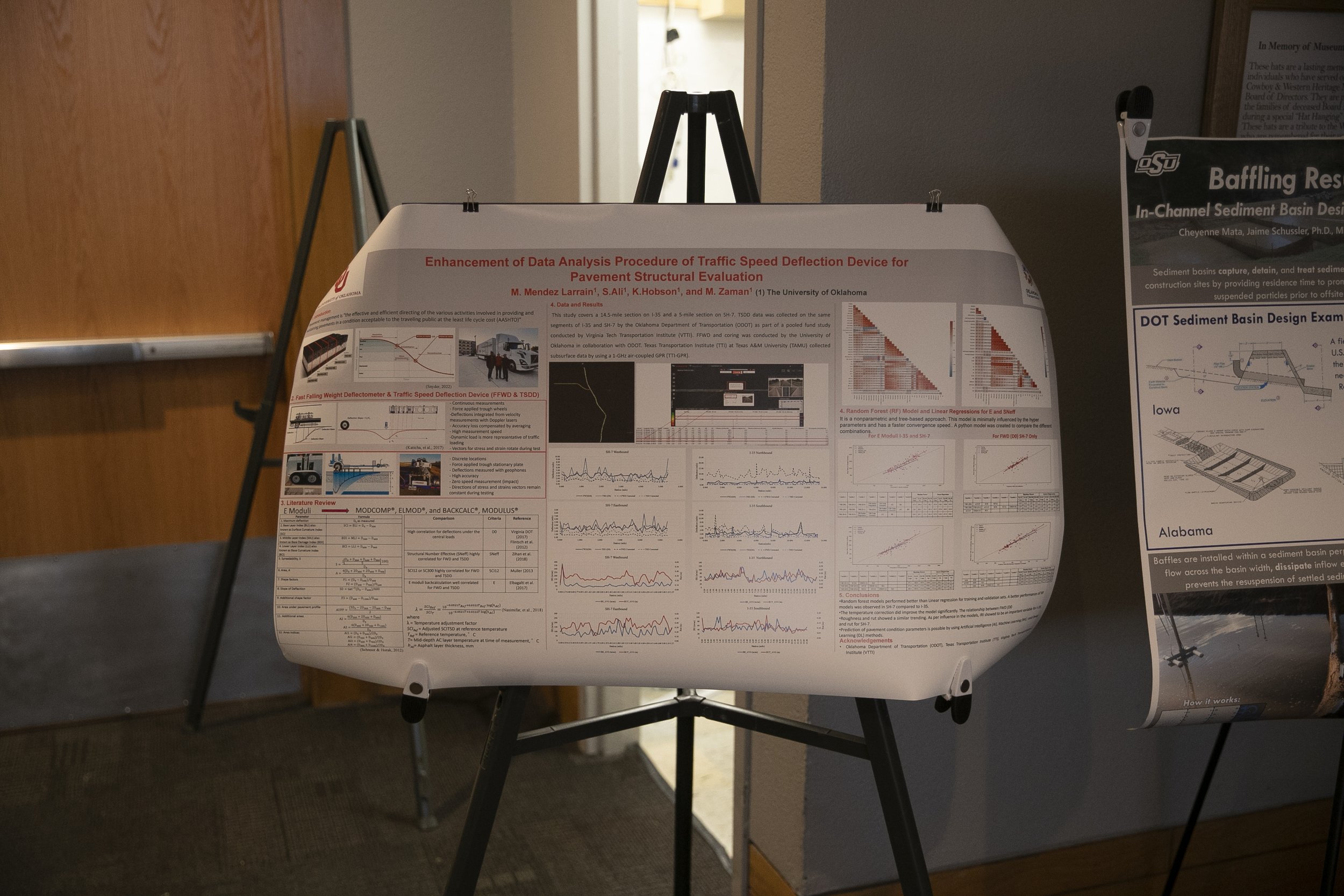
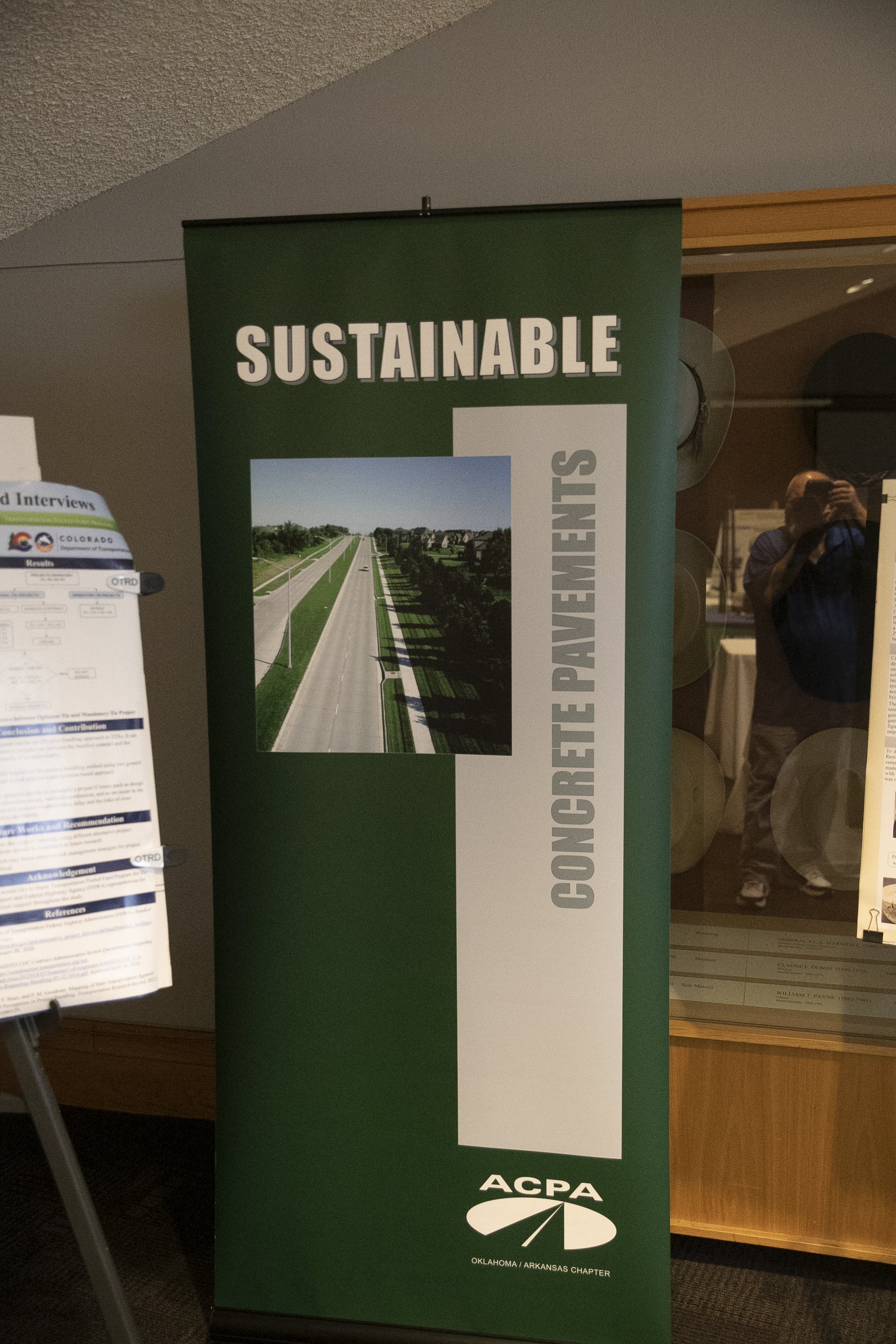
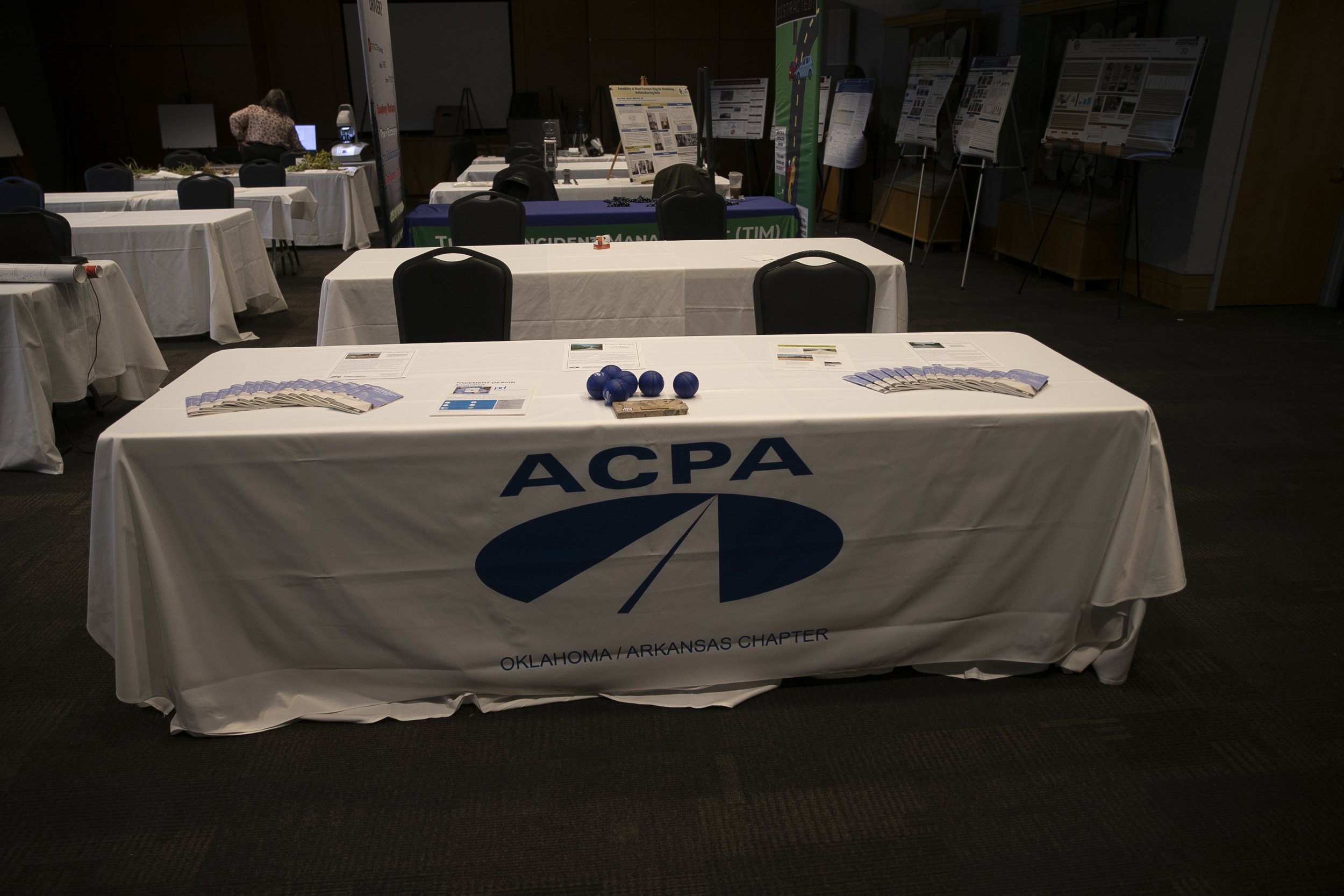
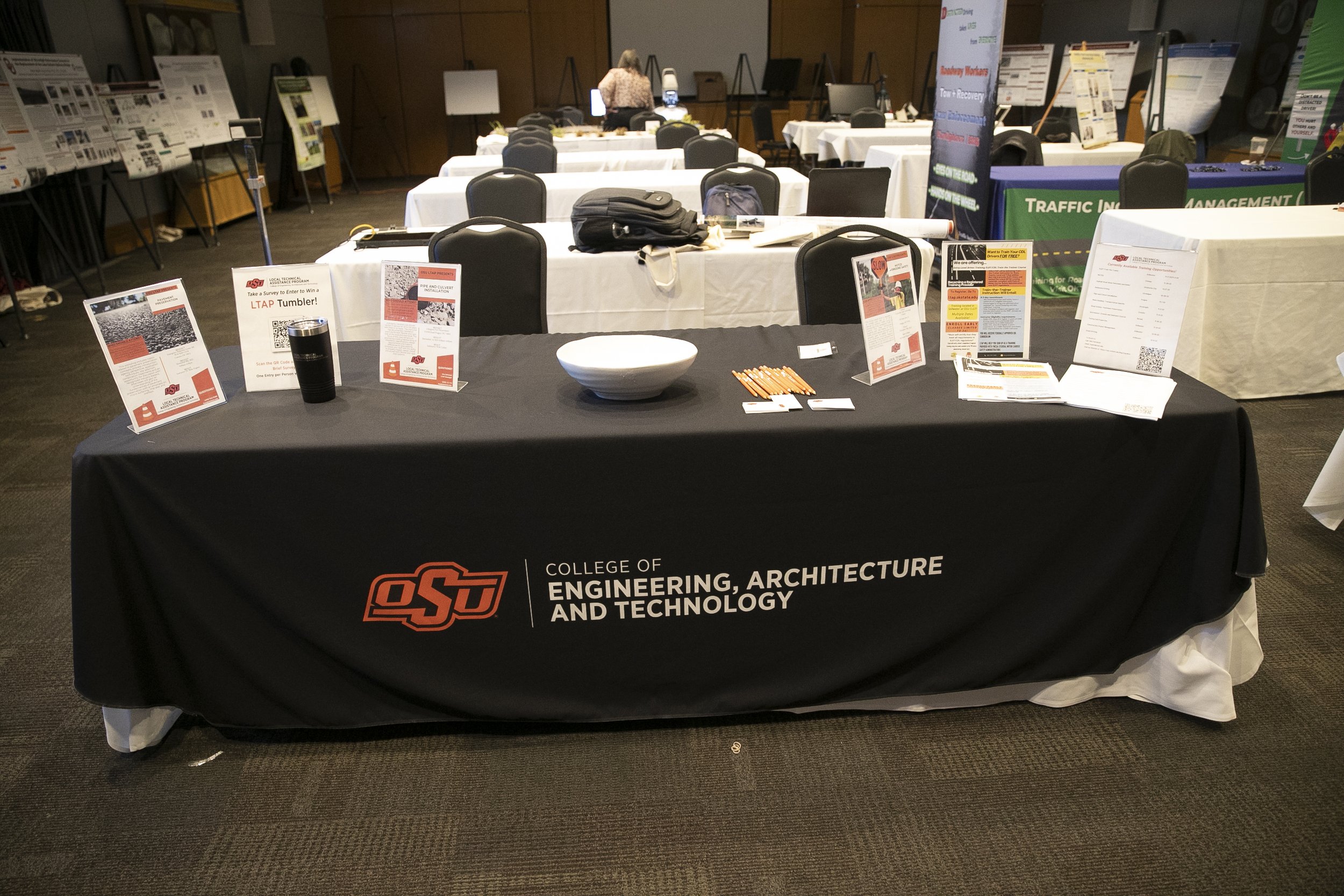

Images courtesy of Russell Perkins, ODOT
Winners of the 2022 Poster Awards
Poster 1
Authors: Paul Cancino, Syed Ashik Ali, Musharraf Zaman, and Kenneth Hobson
Title: “Laboratory Evaluation of Strength, Permeability and Durability of Recycled Concrete Aggregate (RCA) for Pavement Base Construction”
Institution: University of Oklahoma School of Civil Engineering and Environmental Science
Paul Cancino is a graduate student in the School of Civil Engineering and Environmental Sciences. An estimated 600 million tons of construction waste was generated in the United States in 2018. Cancino’s poster was on the laboratory evaluation of strength, permeability and durability of Recycled Concrete Aggregate (RCA). Recycling of aggregate from the construction waste is increasingly becoming more attractive because of the need to minimize the impact on the environment and conserve natural resources. Paul’s research generate data on relevant mechanical and performance properties of RCAs available in Oklahoma. He found that recycled-in-place RCA can exhibit similar performance as virgin aggregate.
Poster 2
Authors: Alexandra Liever, Stephanie Castillo, and Shreya Vemuganti
Title: “Investigating the Freeze-Thaw Behavior of Nanomodified Fiber-Reinforced Polymers”
Institution: University of Oklahoma School of Civil Engineering and Environmental Science
Alexandra Liever is also a graduate student in the School of Civil Engineering and Environmental Sciences. Fiber reinforced polymers (FRP) are becoming more popular in the construction industry because of their high strength to weight ratio. However, the performance of FRP under freeze-thaw is still a concern and needs investigating. The goals of Alexandra’s research were to understand the microscopic debonding in FRP matrix and evaluate the effect of the addition of carbon nanotube in FRP during freeze-thaw condition.
poster 3
Authors: Aditya Nayak, Somayeh Shojaeikhah, Mohamed Soliman, Royce W. Floyd
Title: Automated Damage Detection in Transportation Infrastructure
Institution: Oklahoma State University
Aditya Nayak is a graduate student at the School of Civil and Environmental Engineering at Oklahoma State University. Modern Structural Health Monitoring (SHM) systems includes various high-precision and durable data acquisition techniques and sensors but requires effective data processing techniques for damage assessment. Aditya explored the use of three different Machine Learning (ML) approaches to identify effective ways to process and analyze the data. The results indicated that the three ML algorithms can detect damage from the recorded strain readings. However, each technique exhibited its own set of advantages and limitations.
Poster 4
Authors: Development of a Rapid-Setting, Self-Consolidating Concrete (RSS-SCC) Mixture Design for Structural Repairs
Title: Elizabeth Poblete, Cameron Murray
Institution: University of Arkansas
Click for full size image
Elizabeth Poblete is a graduate student in the Department of Civil Engineering, University of Arkansas. Her research concerns self-consolidating concrete (SCC), which is flowable and non-segregating such that it can fill formwork without the use of mechanical consolidation. The objective of Elizabeth’s research was to develop a rapid-setting, self-consolidating concrete mixture design which could be used to rapidly repair damaged structural concrete. She found that successful mixture proportioning of RS-SCC was possible. Also, RS-SCC was a feasible substitute for PC-SCC in terms of compressive strength.
Poster 5
Authors: Cheyenne Mata, Jaime Schussler, Mike Perez
Title: In Channel Sediment Basin Design Enhancement
Institution: Oklahoma State University
Cheyenne Mata is a graduate student in the School of Civil and Environmental Engineering at Oklahoma State University. Sediment basins capture, detain, and treat sediment-laden stormwater from construction sites by providing residence time to promote gravitational settling of suspended particles prior to offsite discharge. Effective design of the sediment basins is critical for sediment capture and water quality improvements. Using “enhanced” techniques such as baffles within a sediment basin can dissipate inflow energy and reduce turbulence.
OTRD Materials
2022 OTRD Speaker Videos - password is OTRD2022





